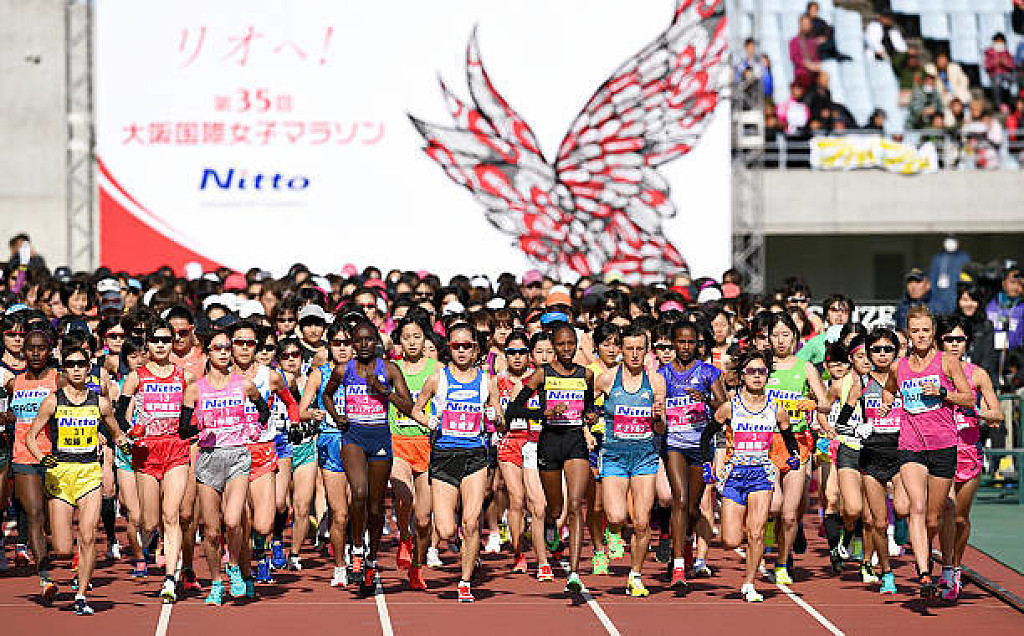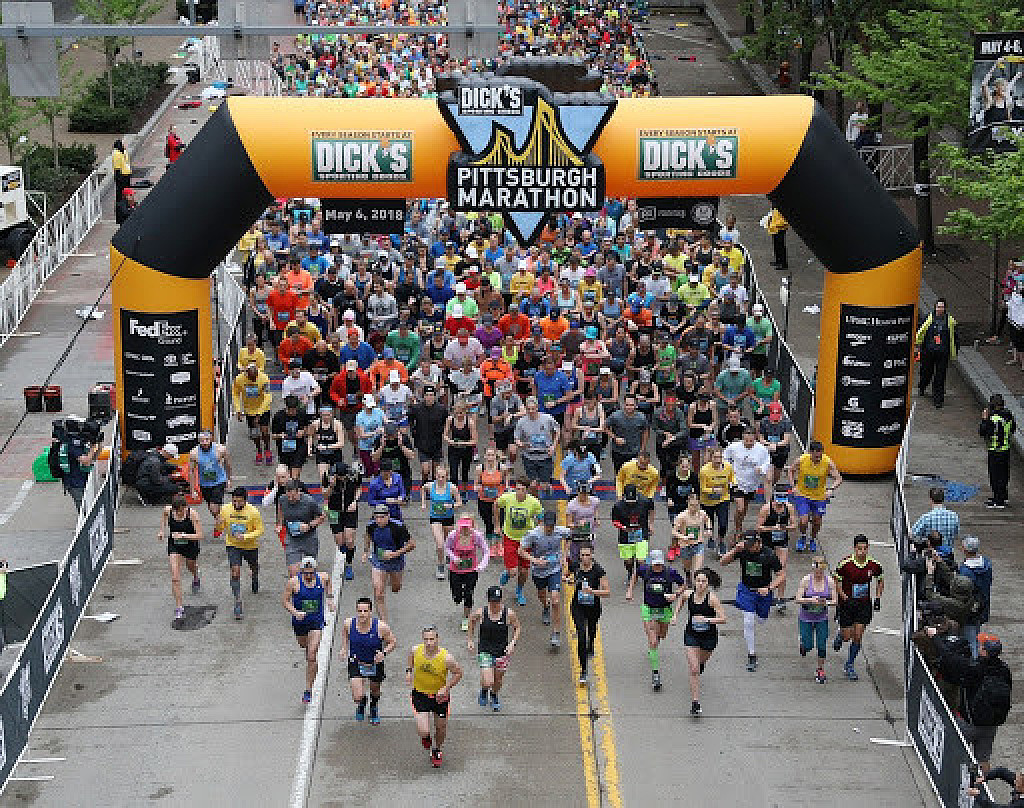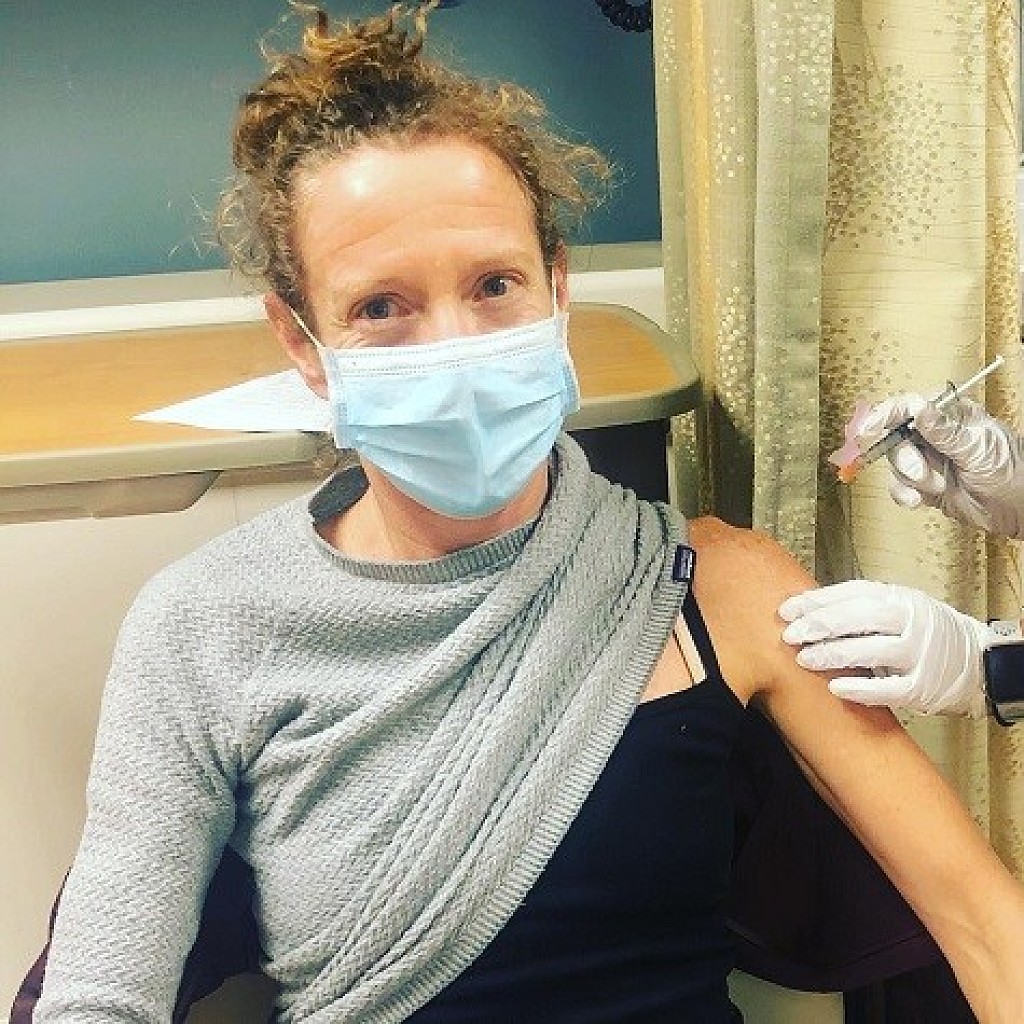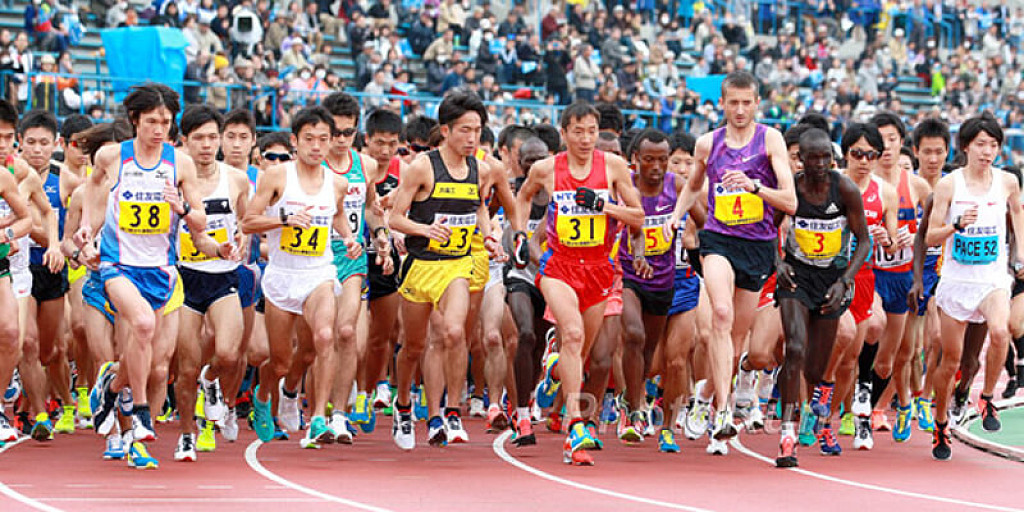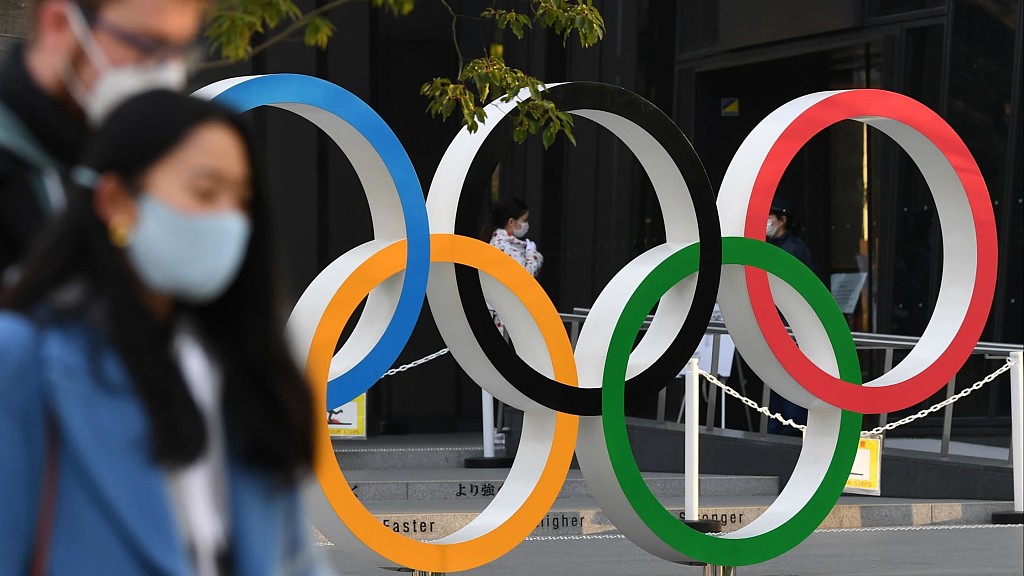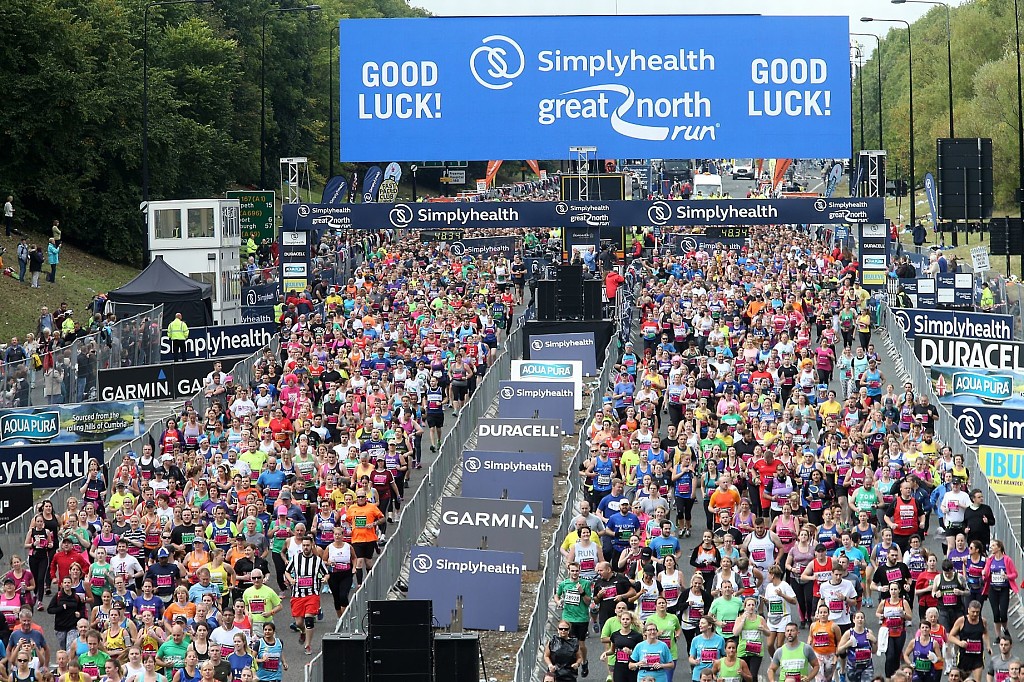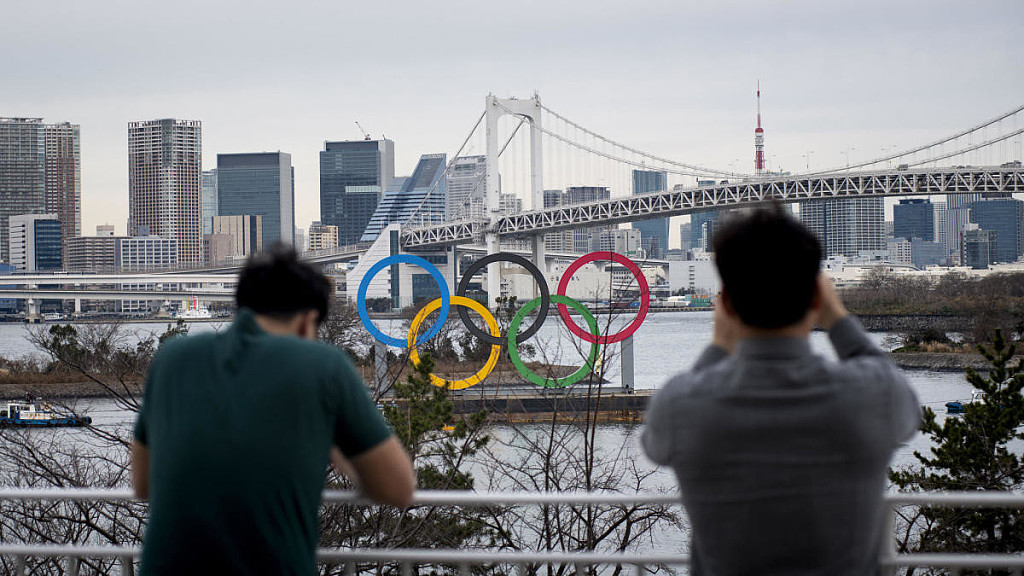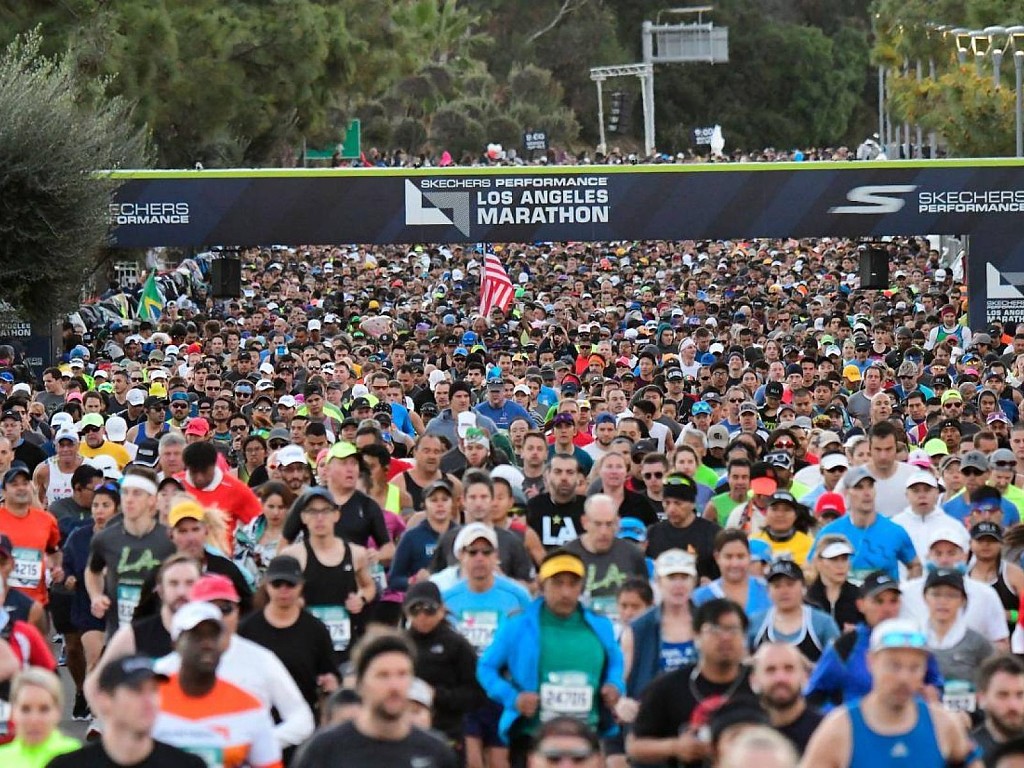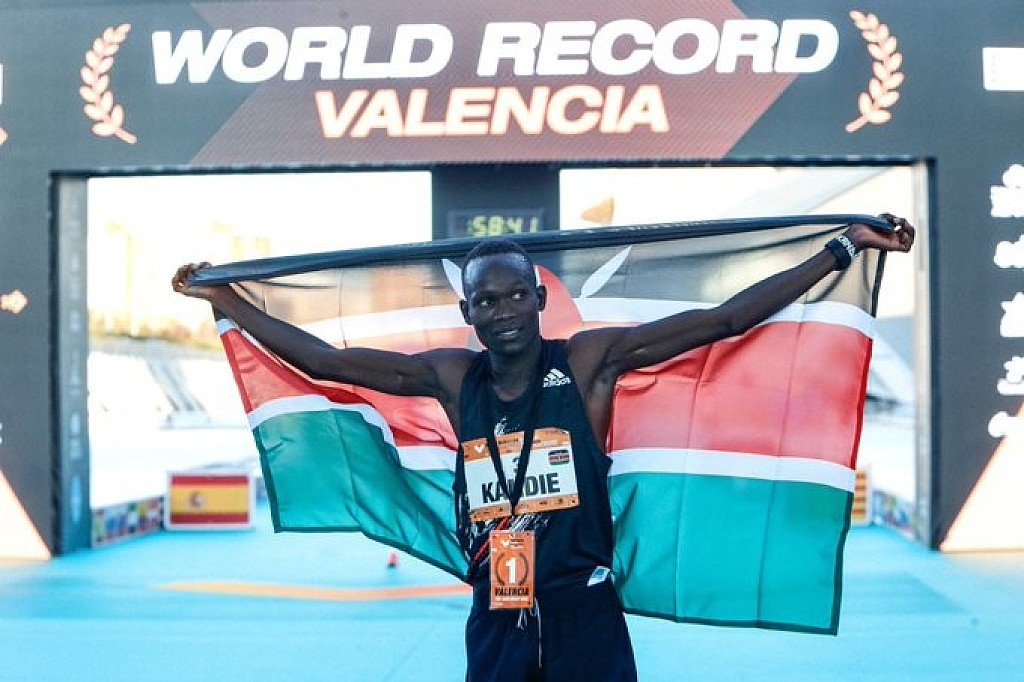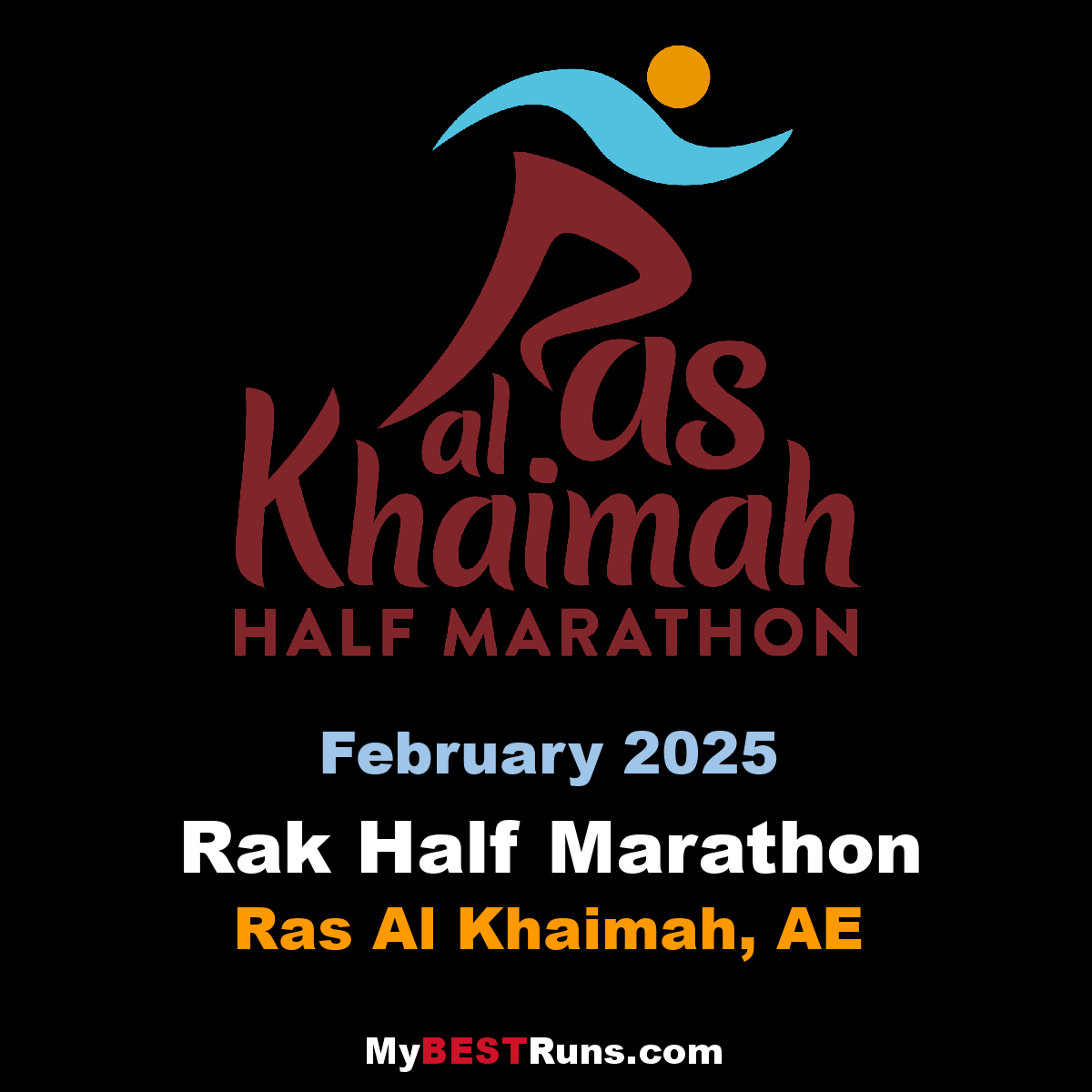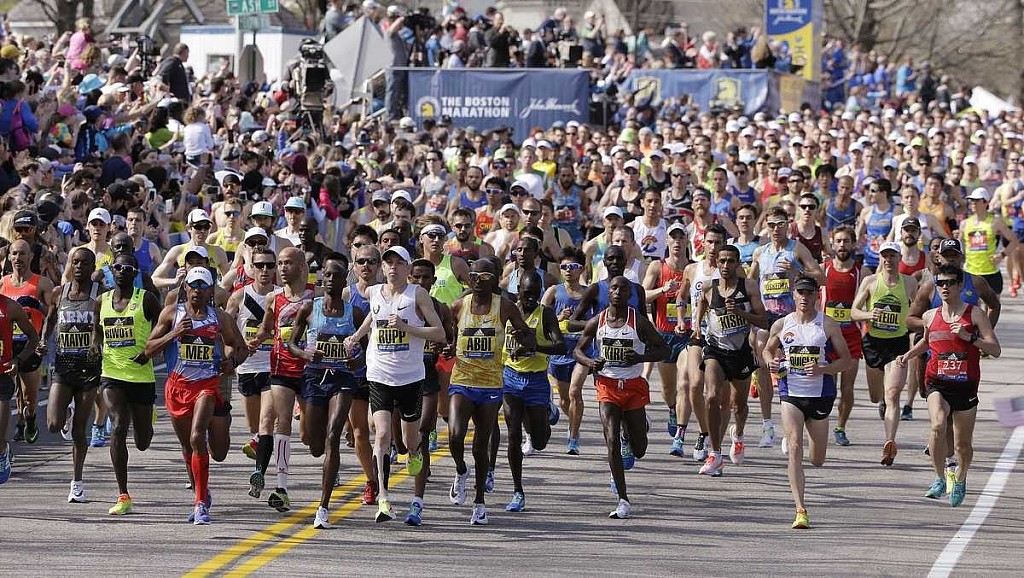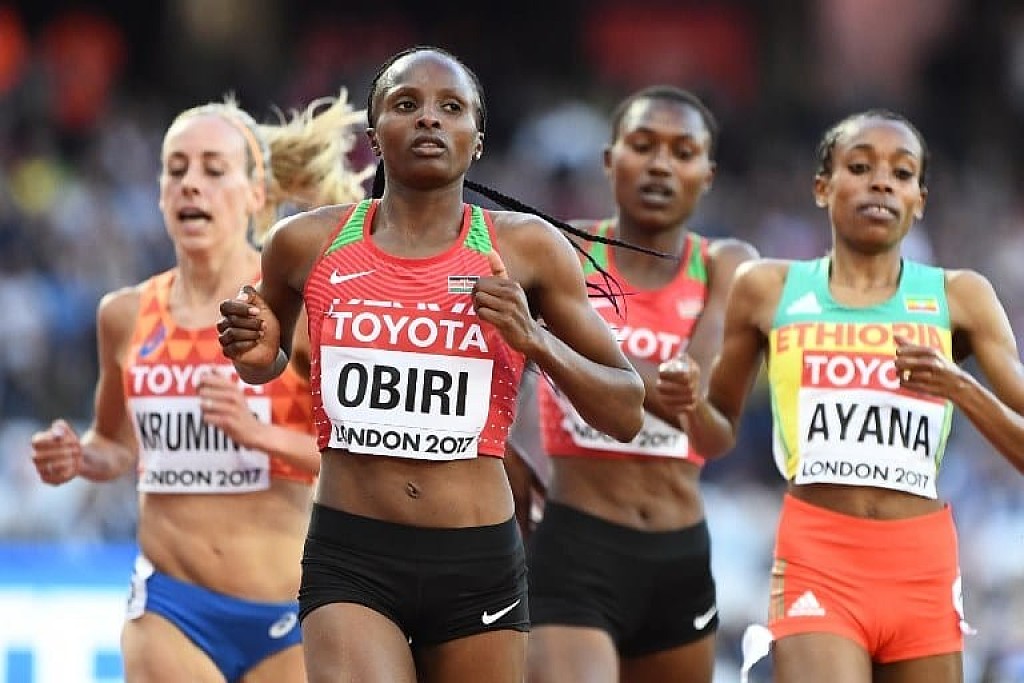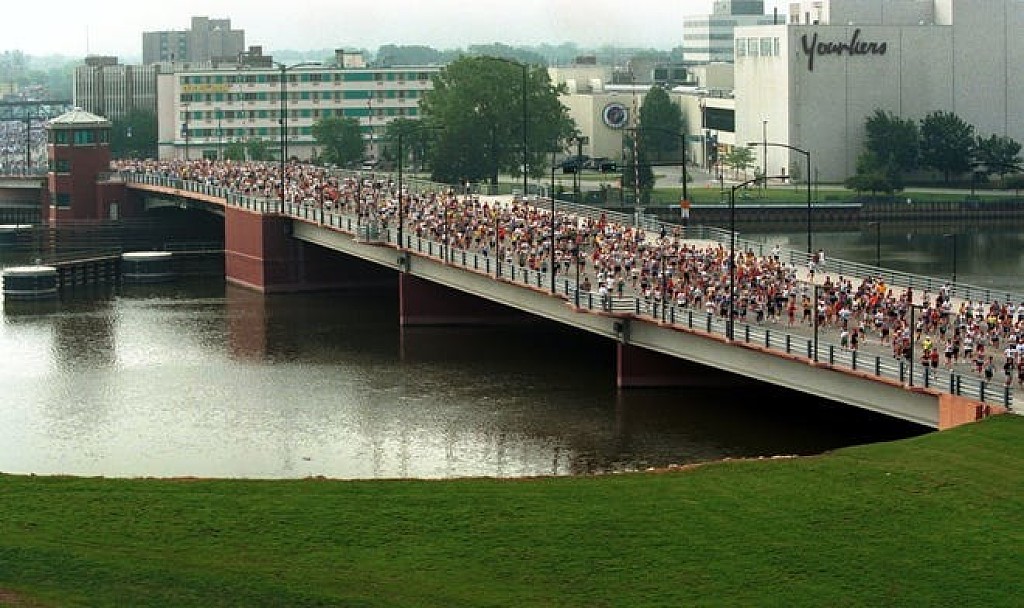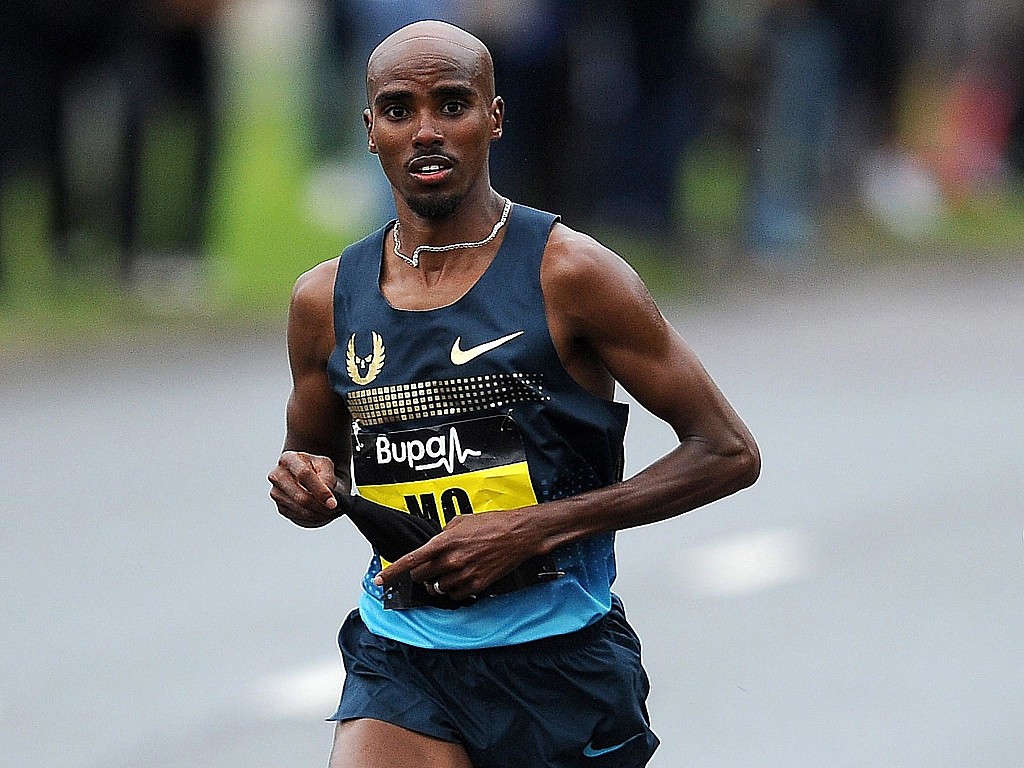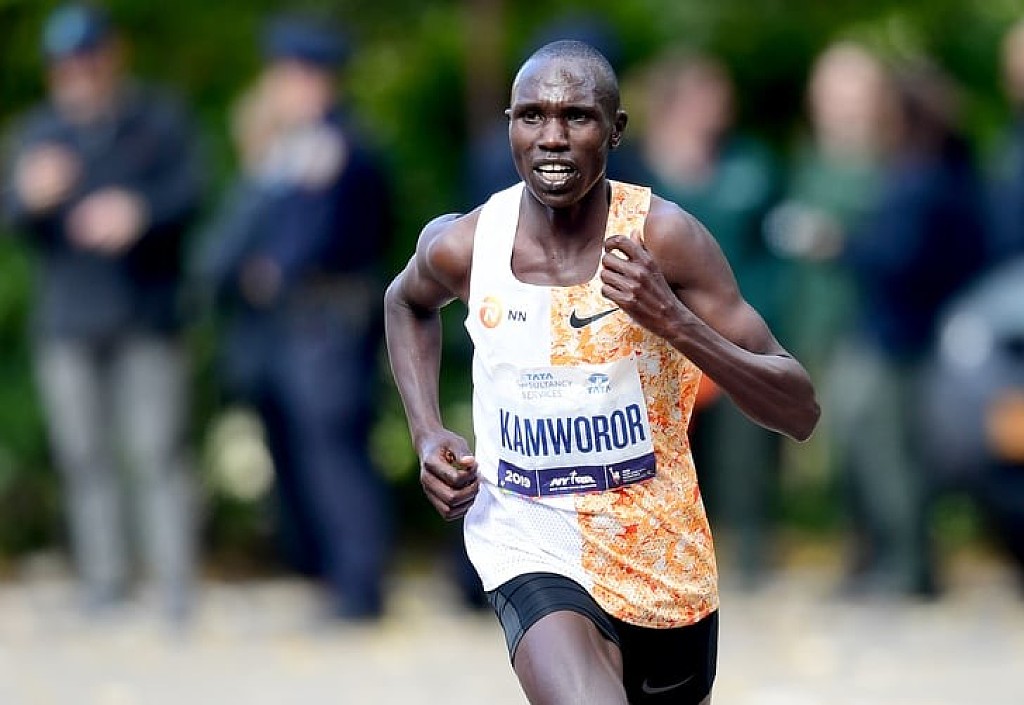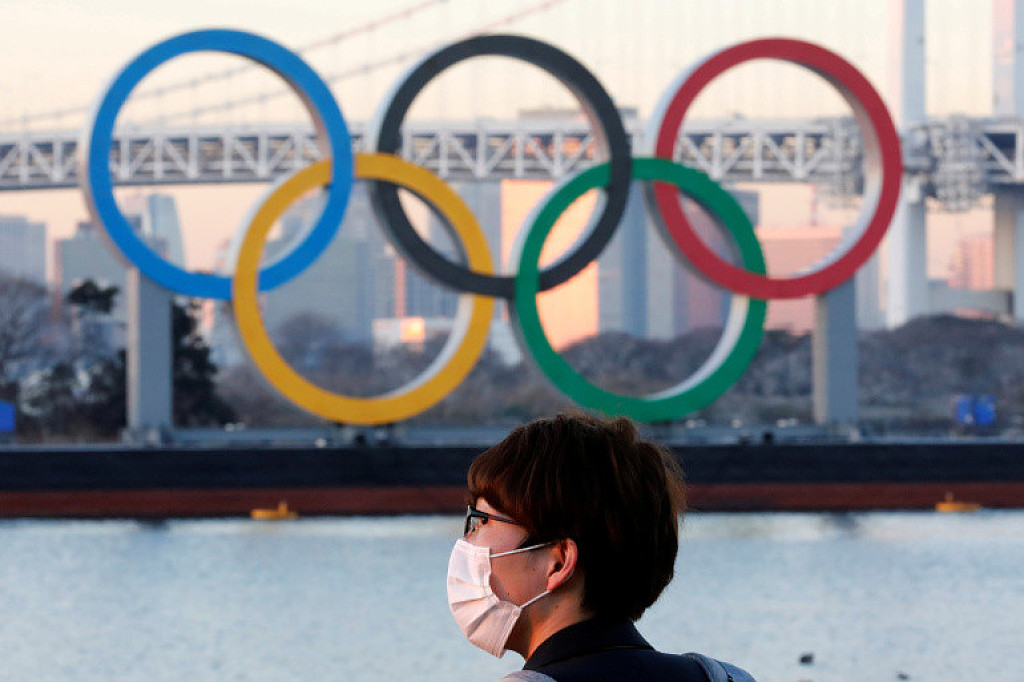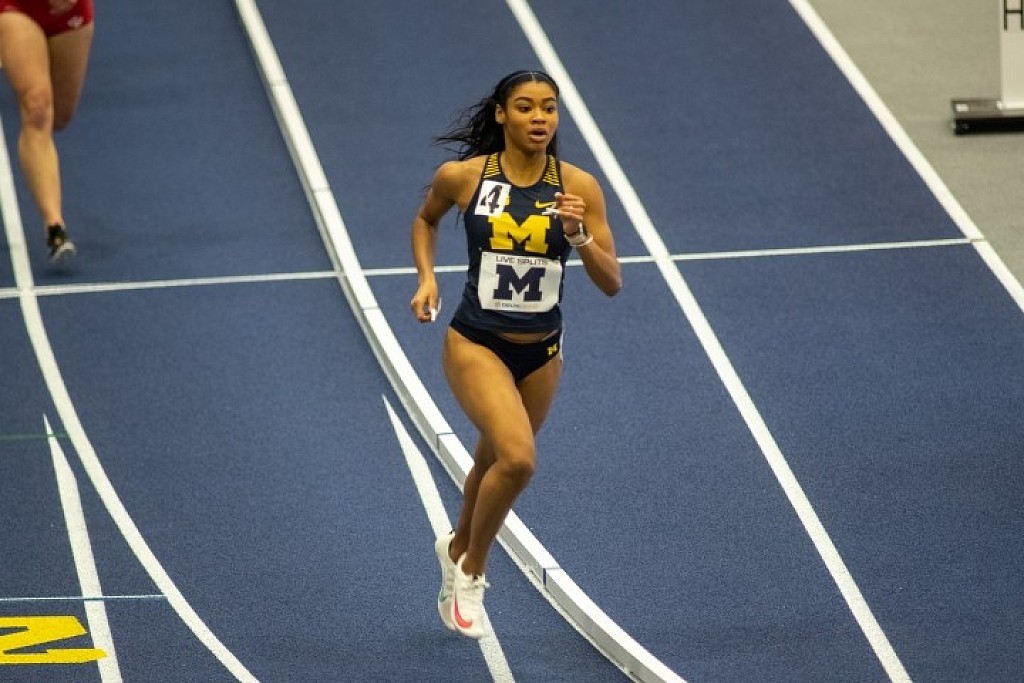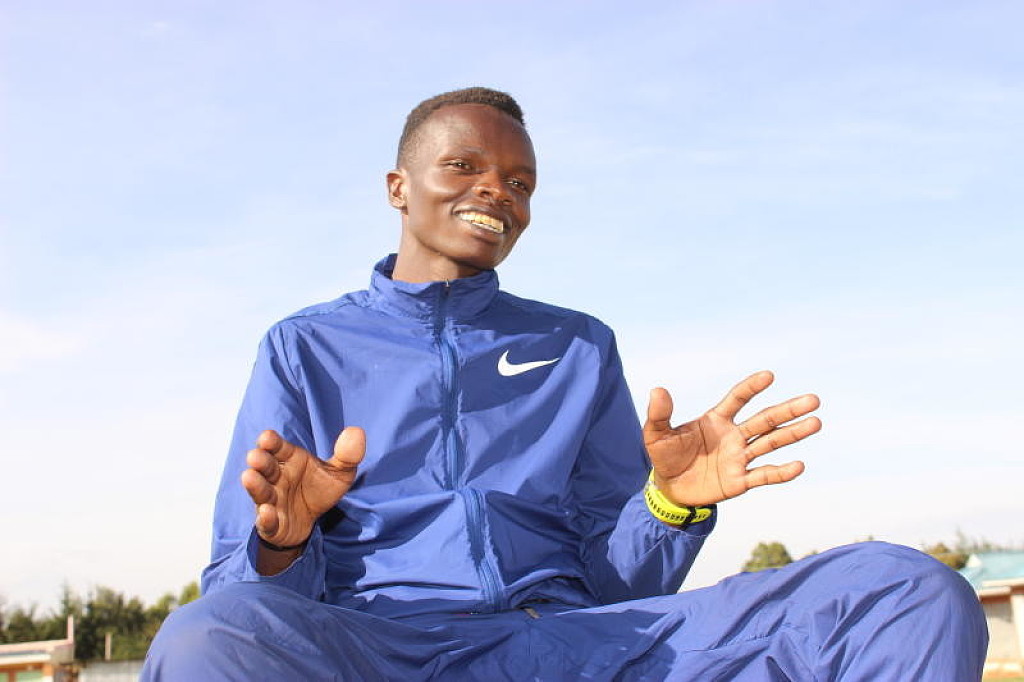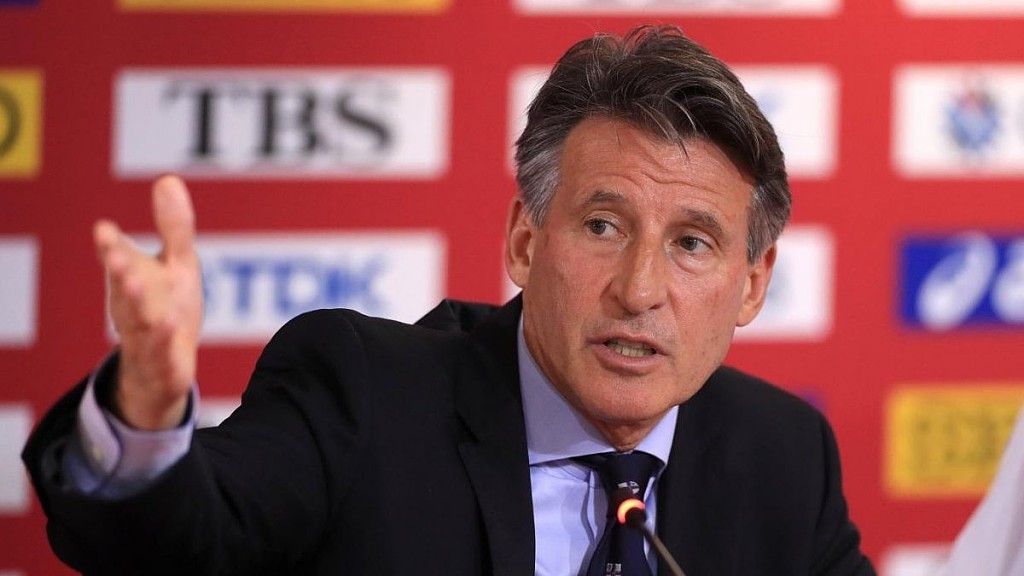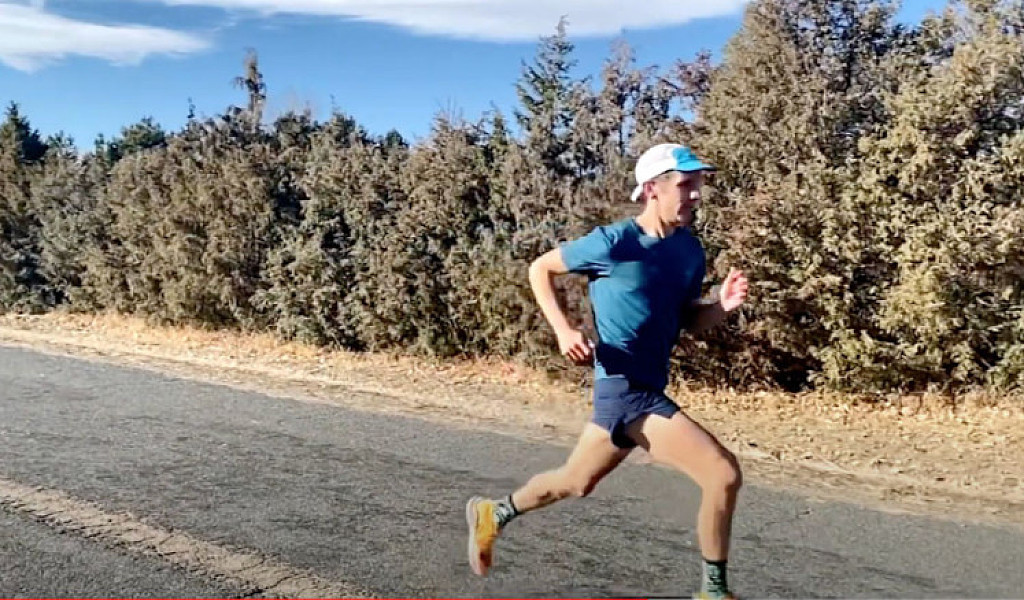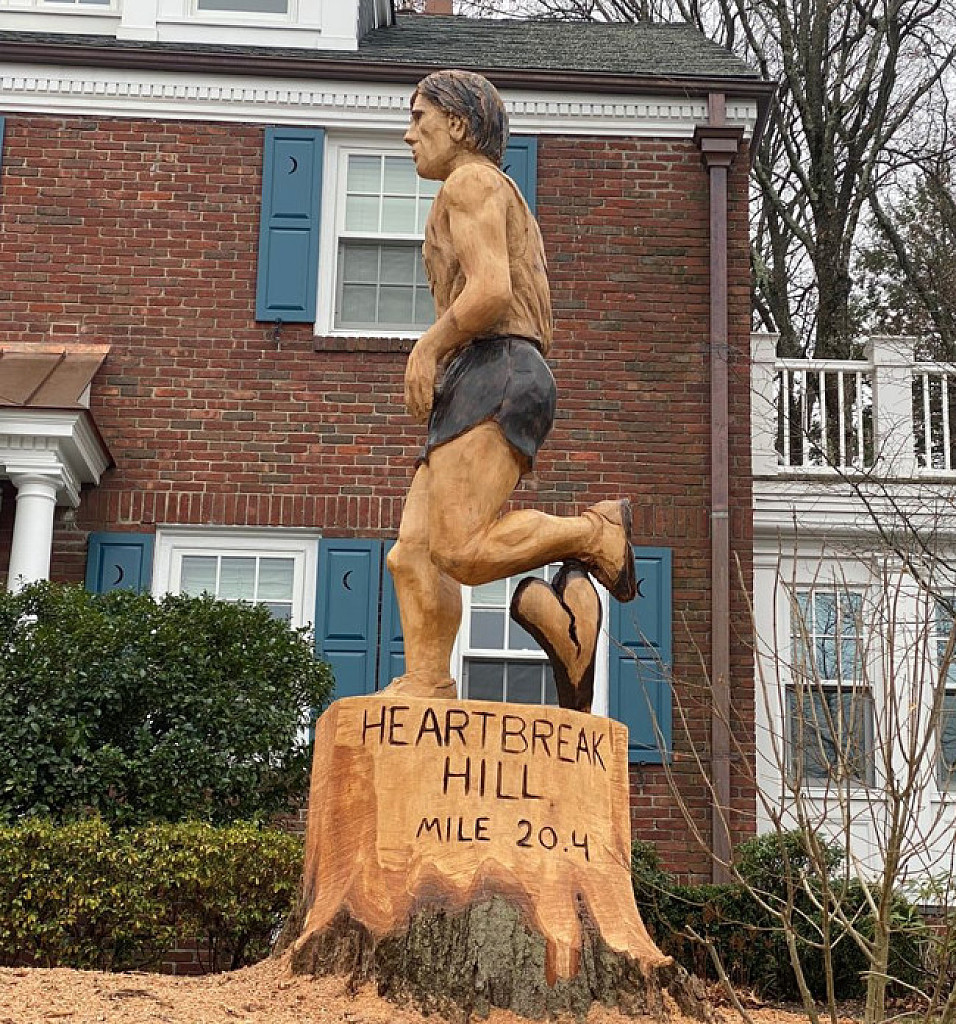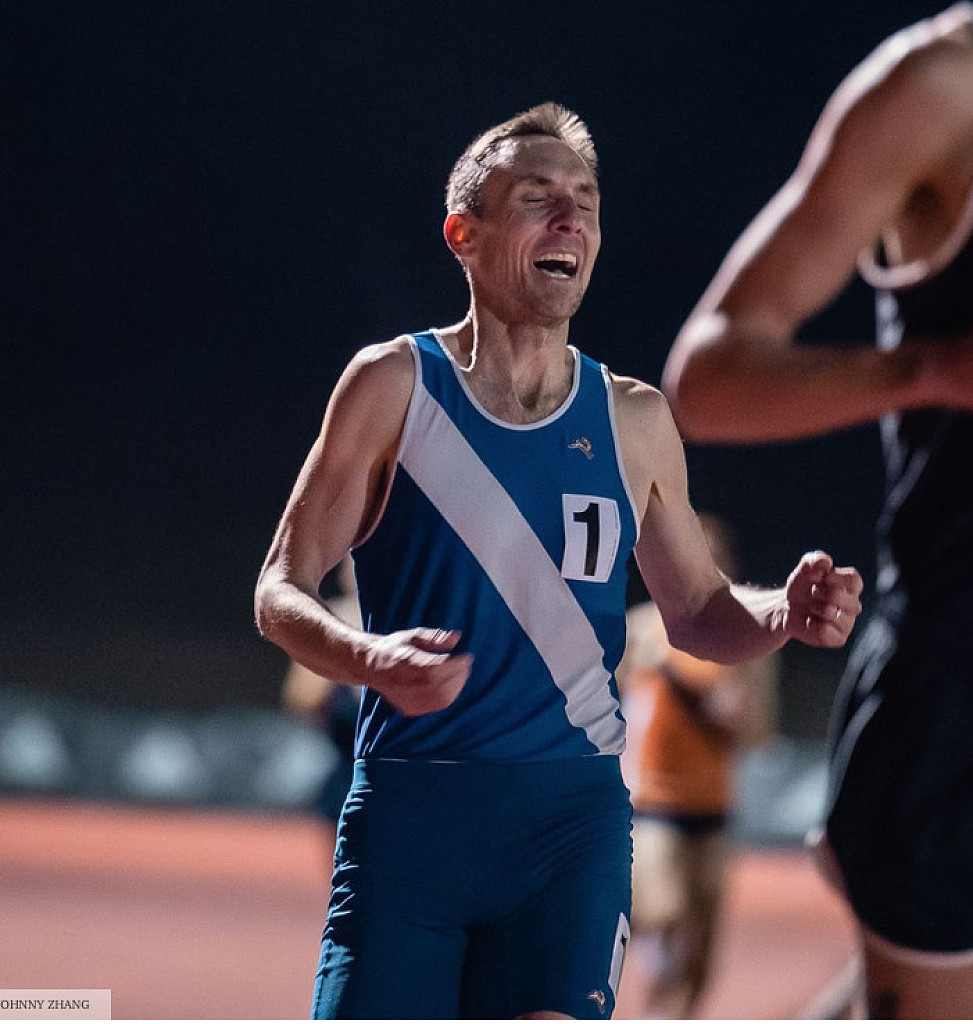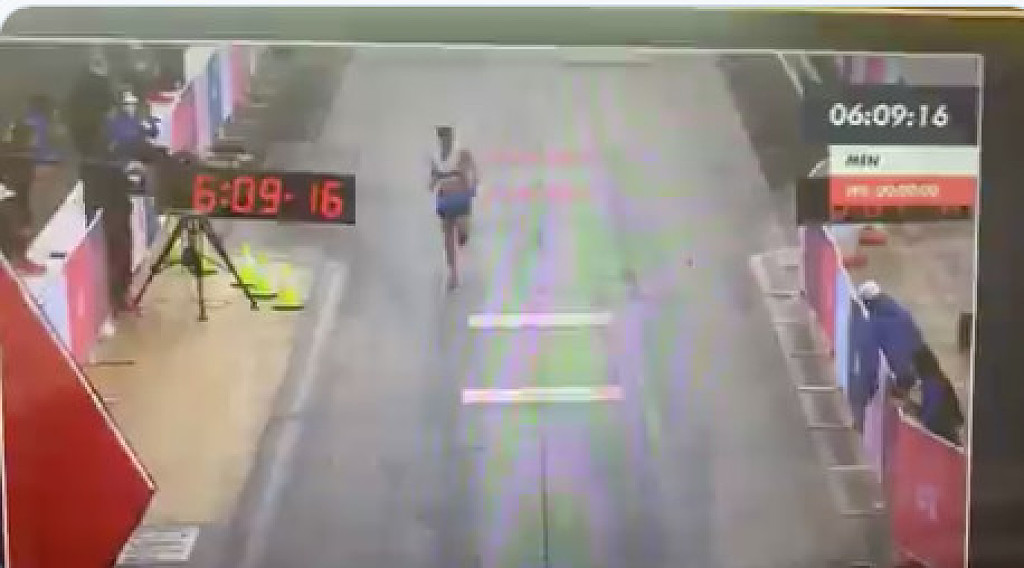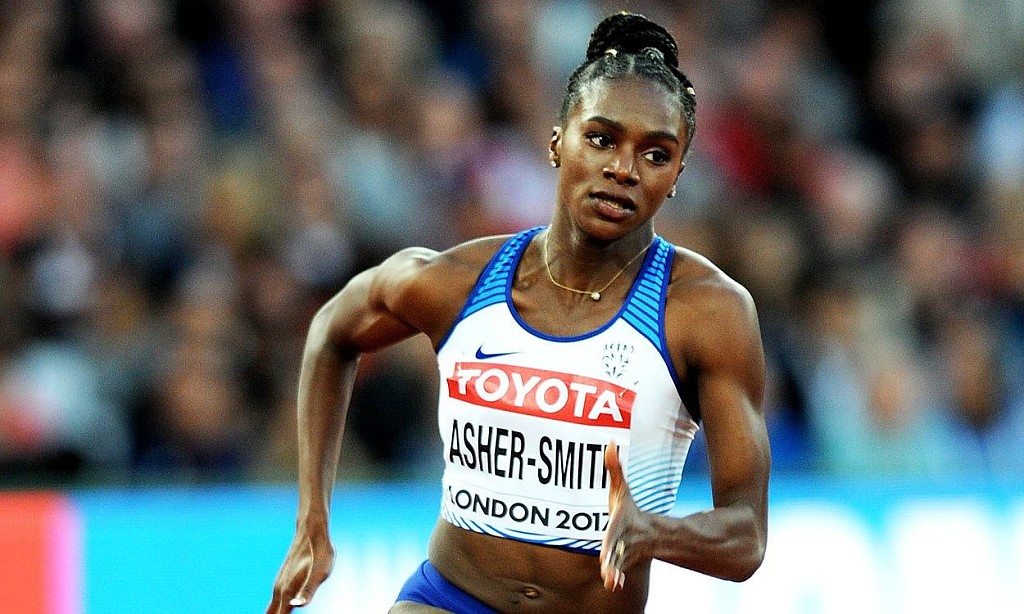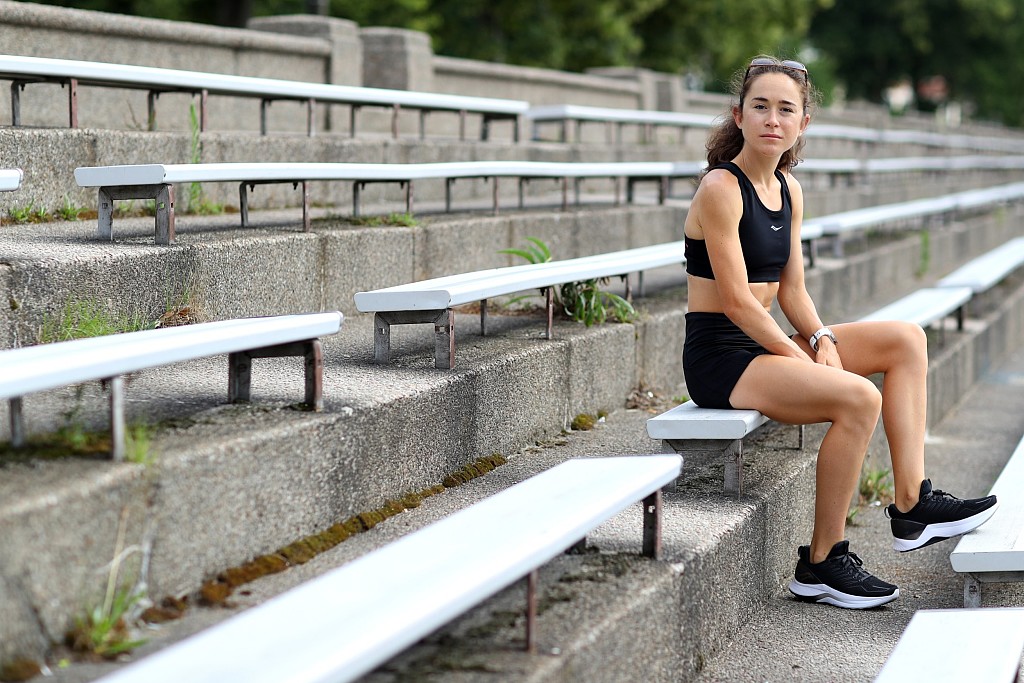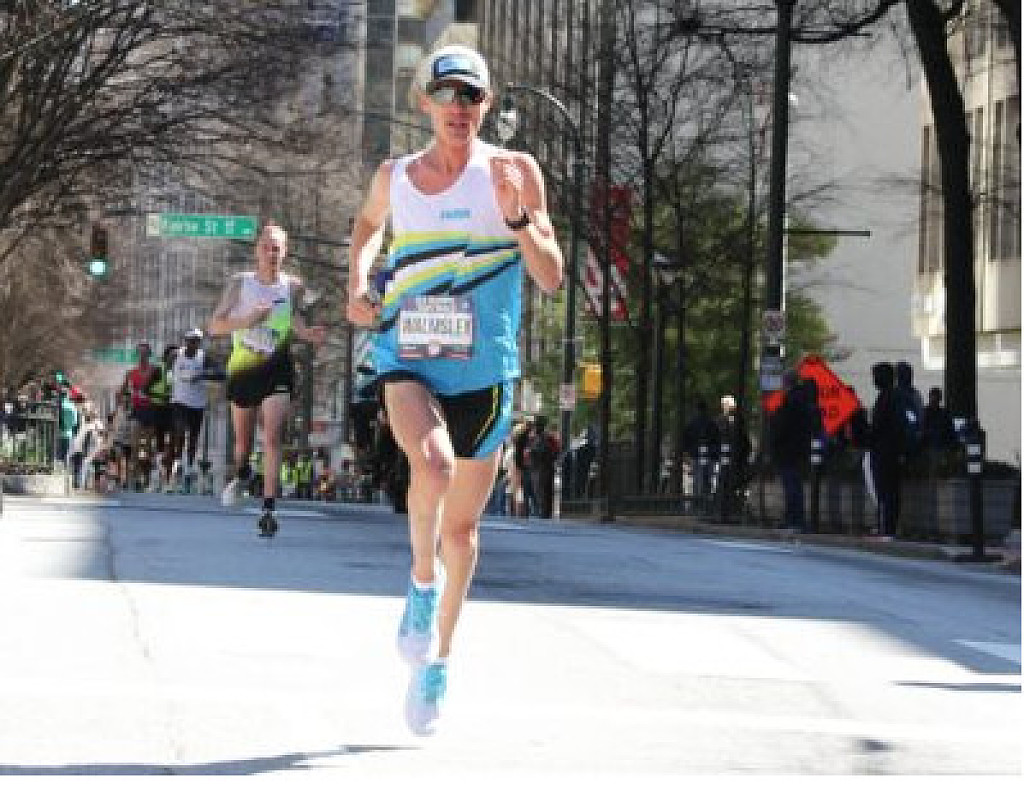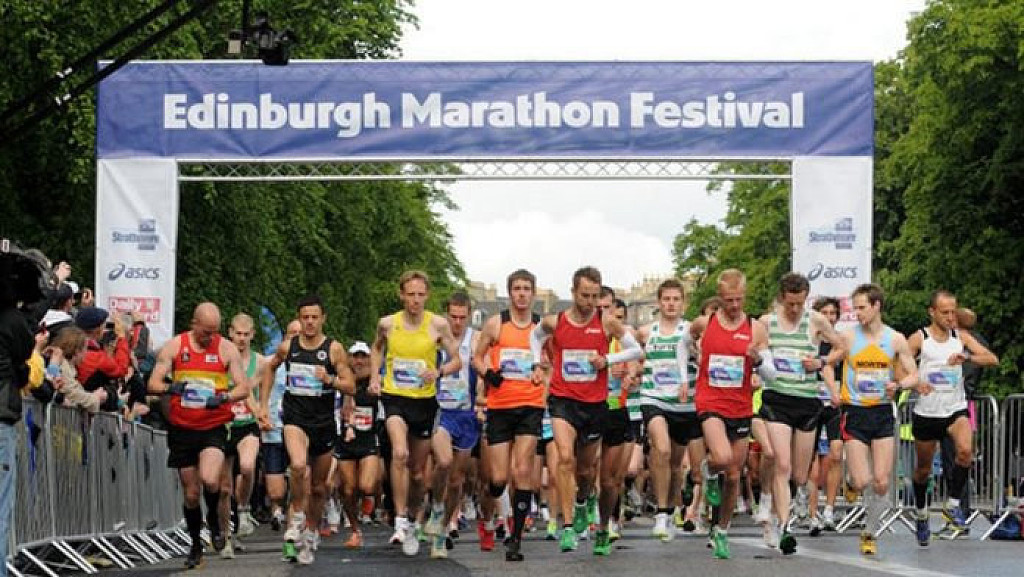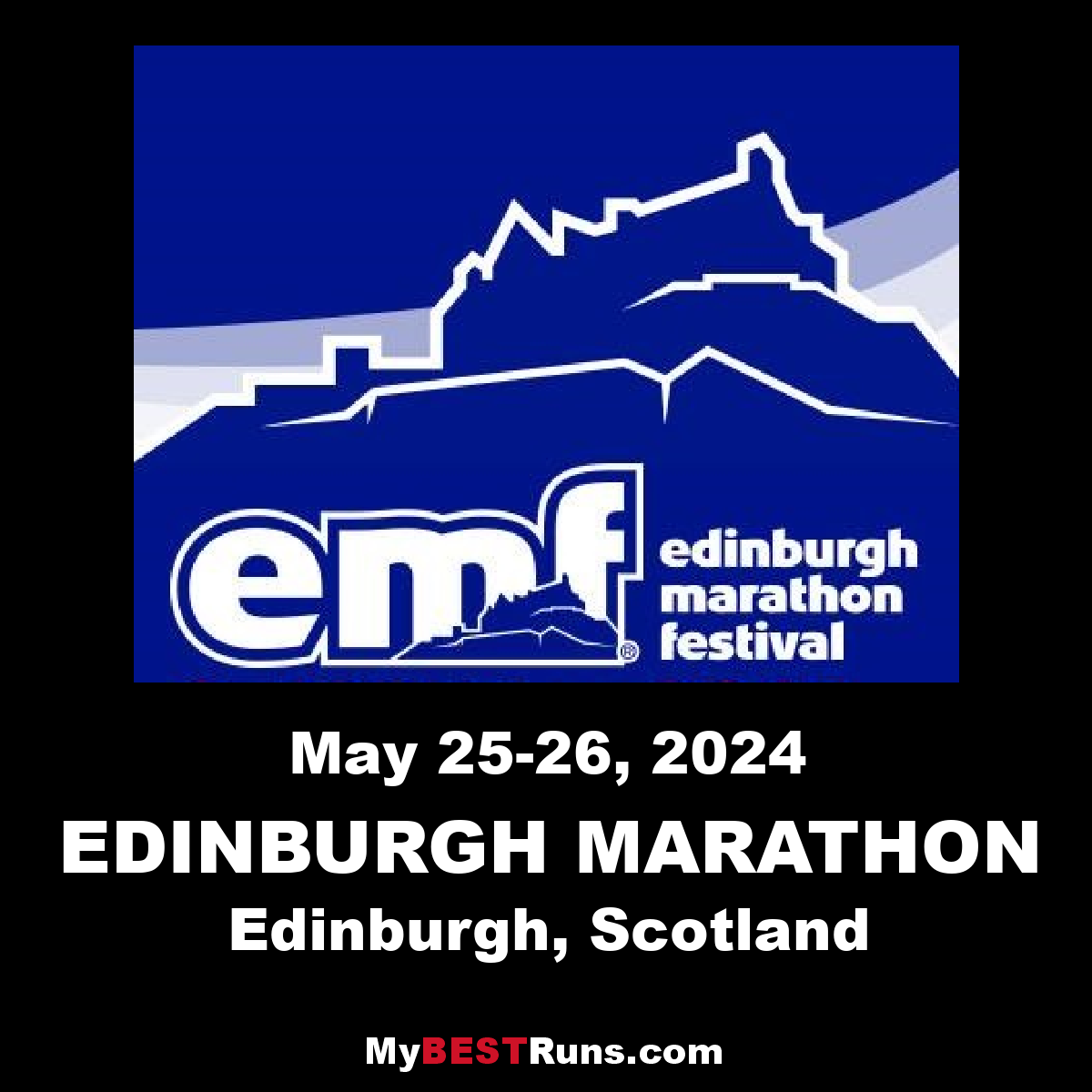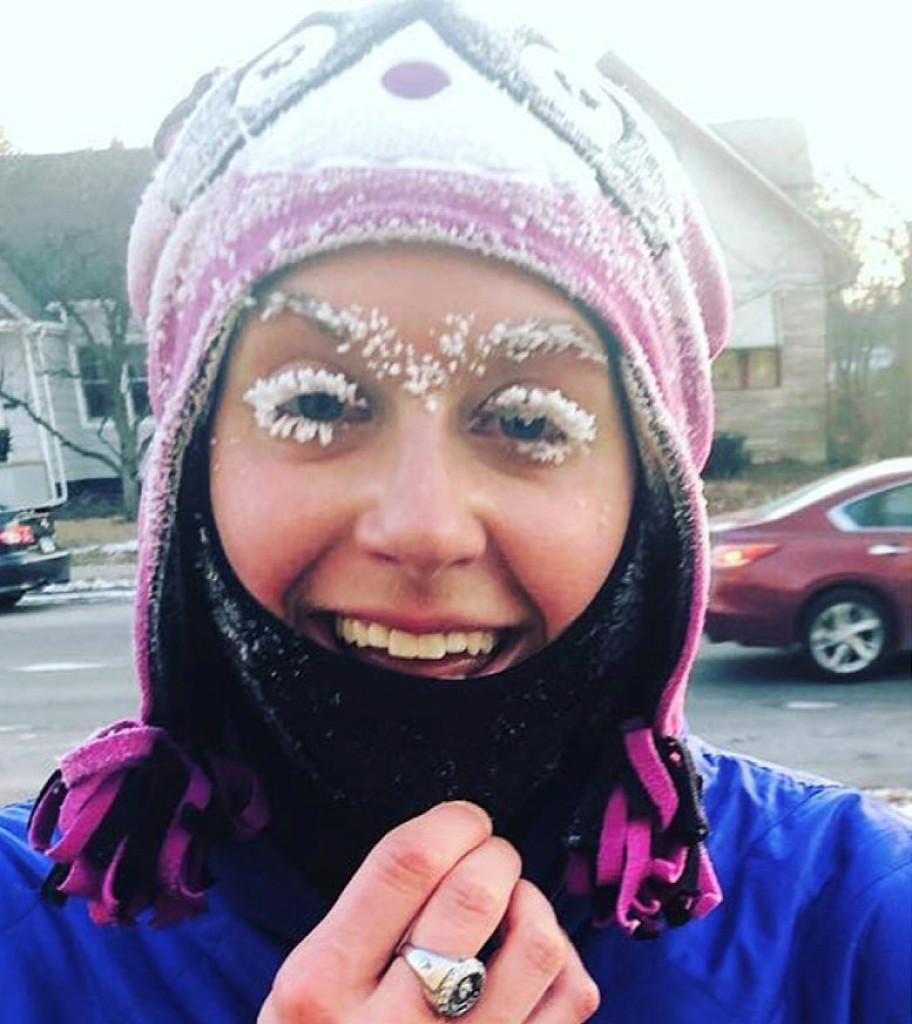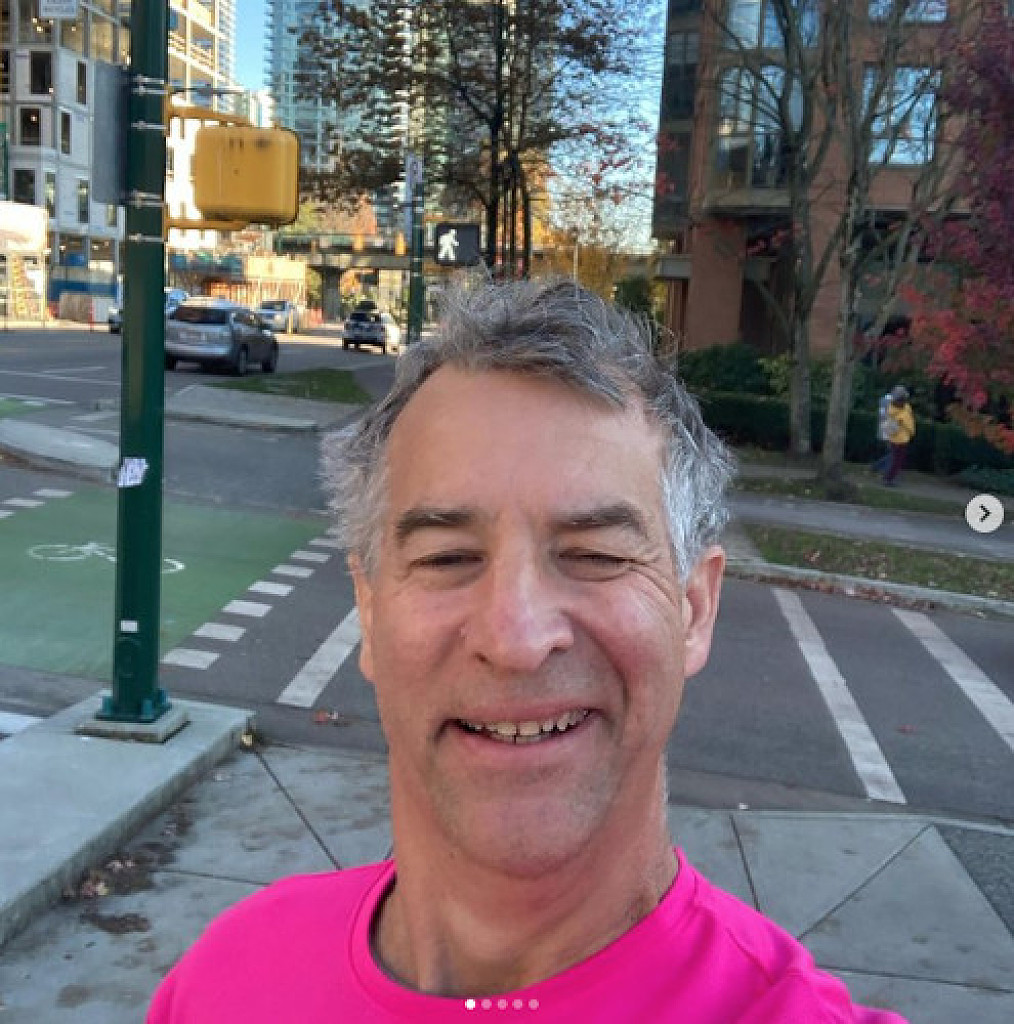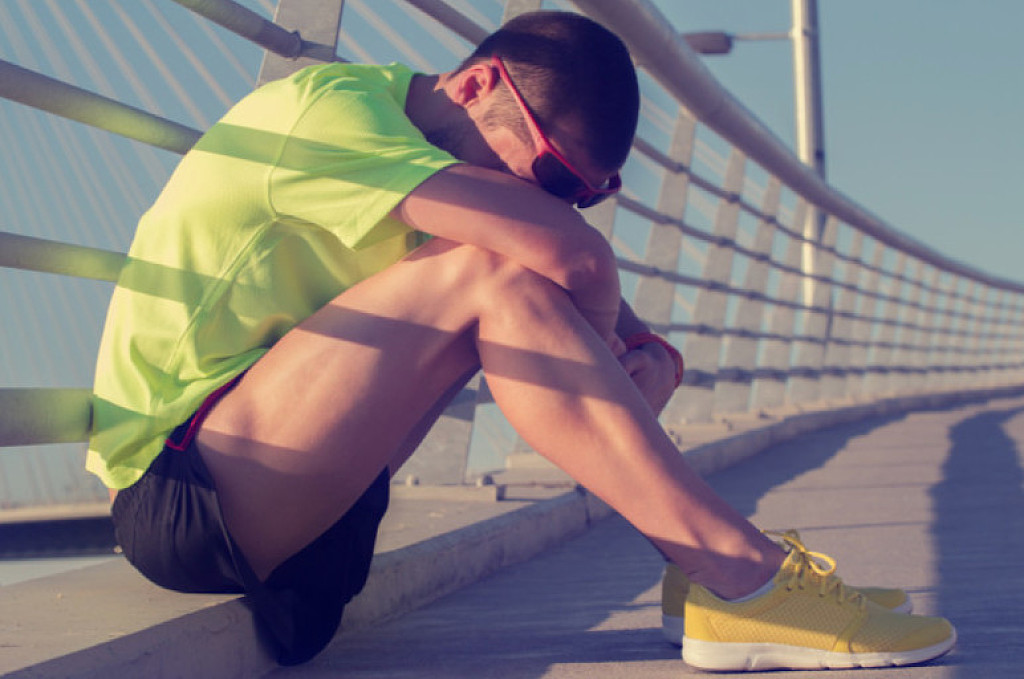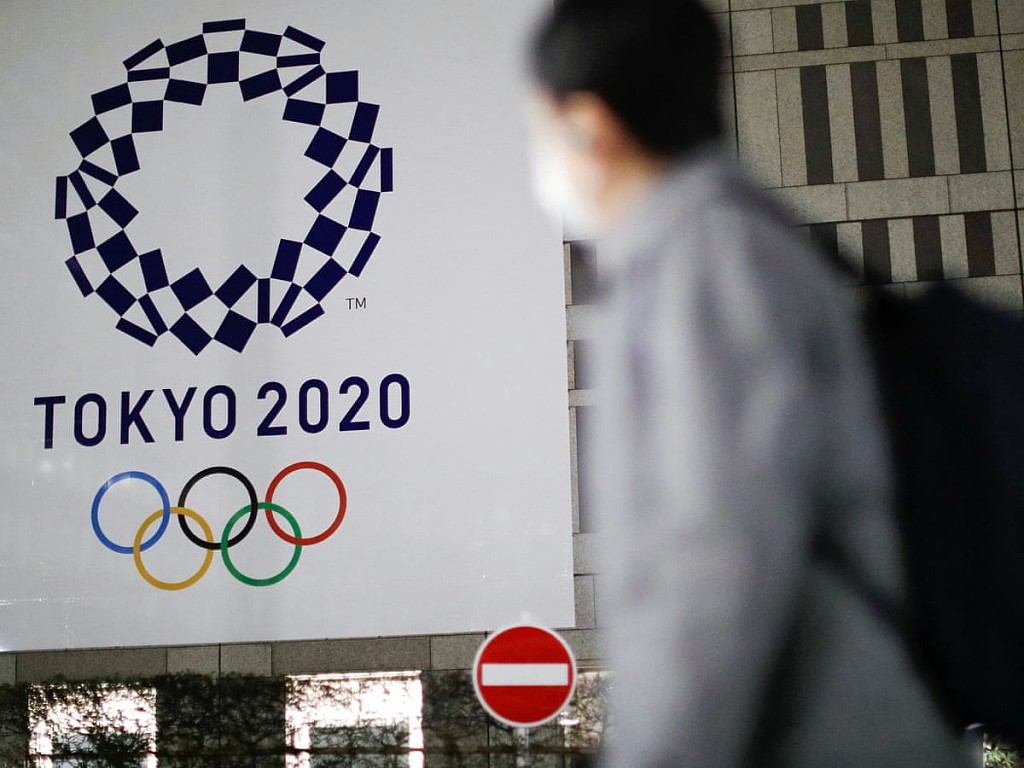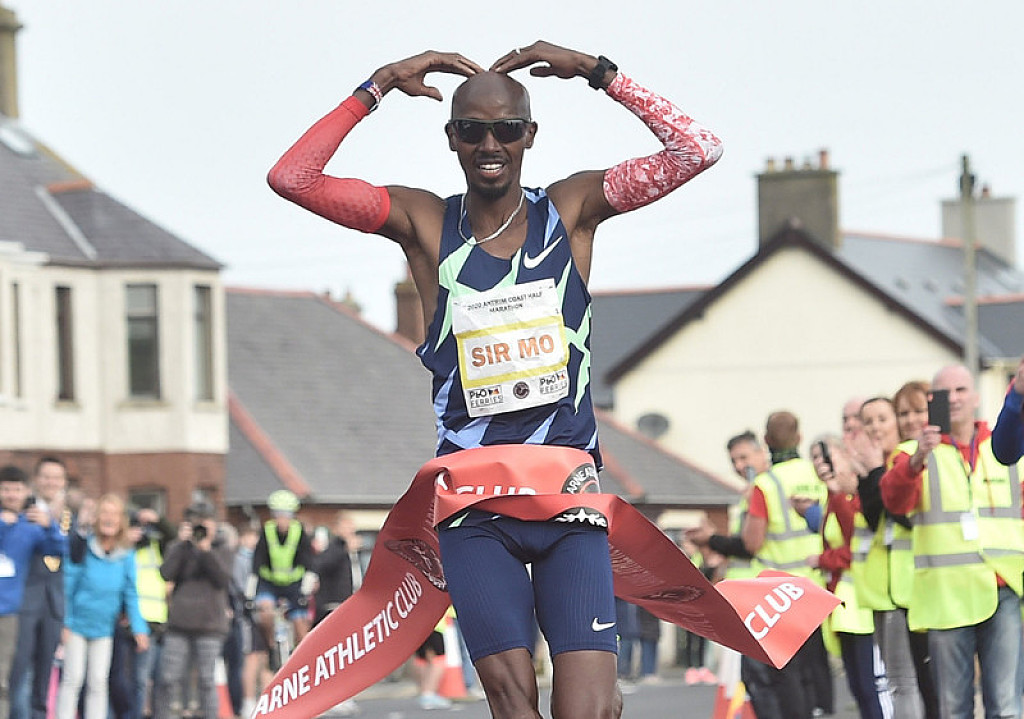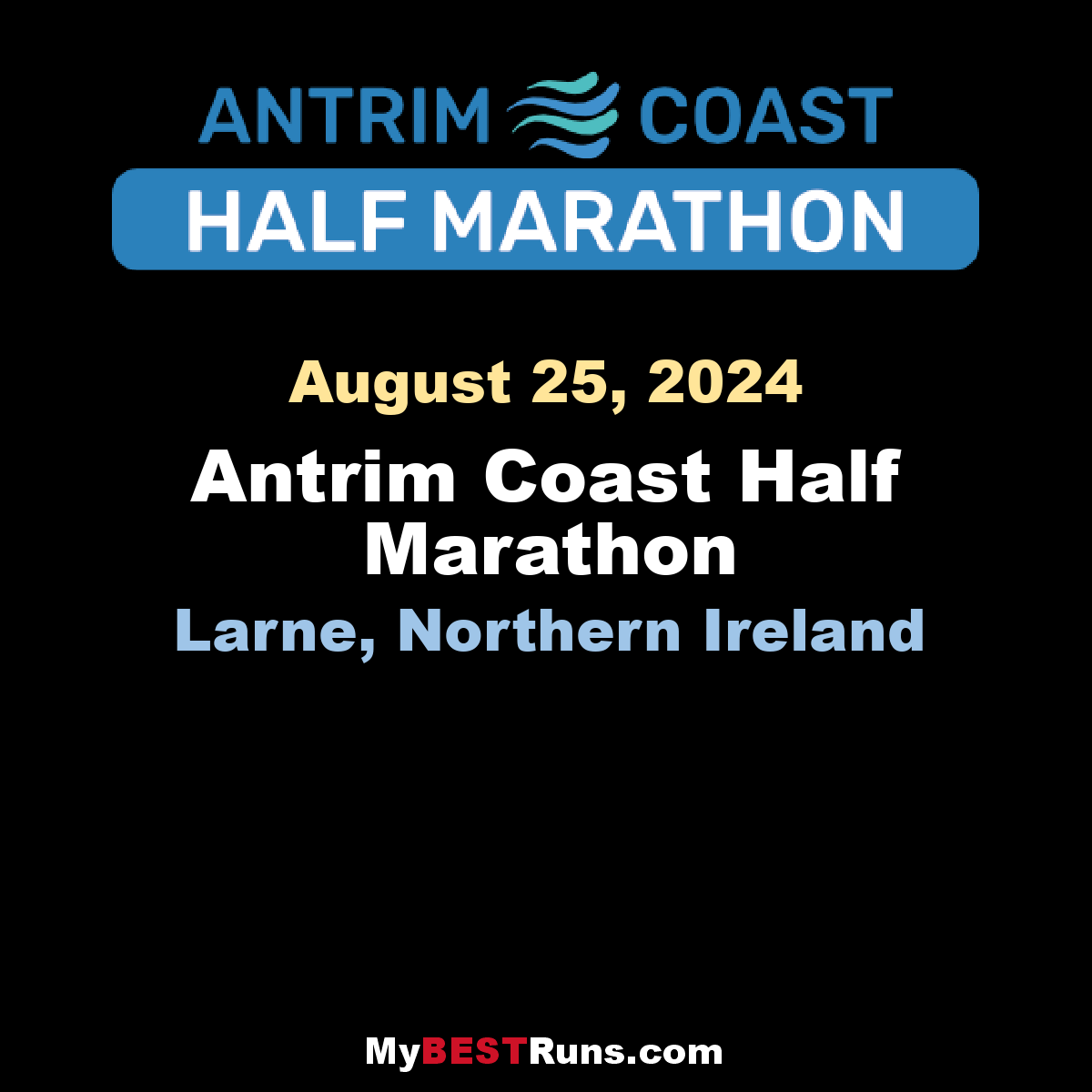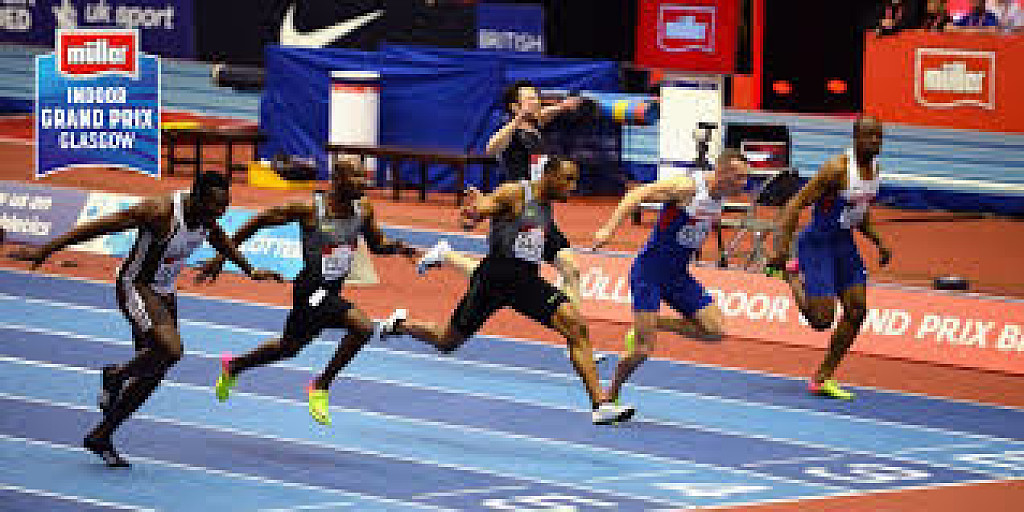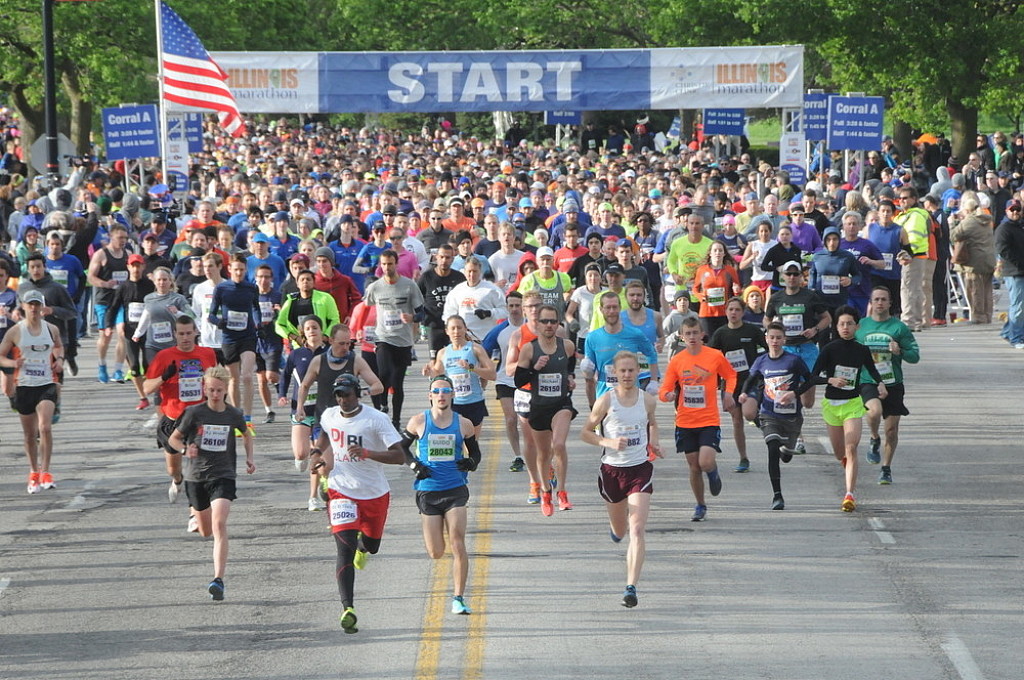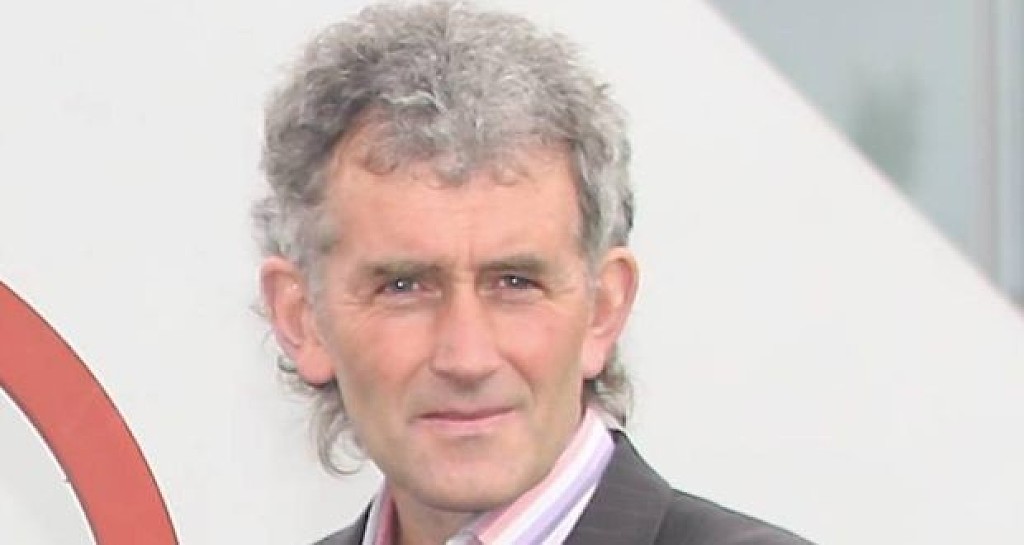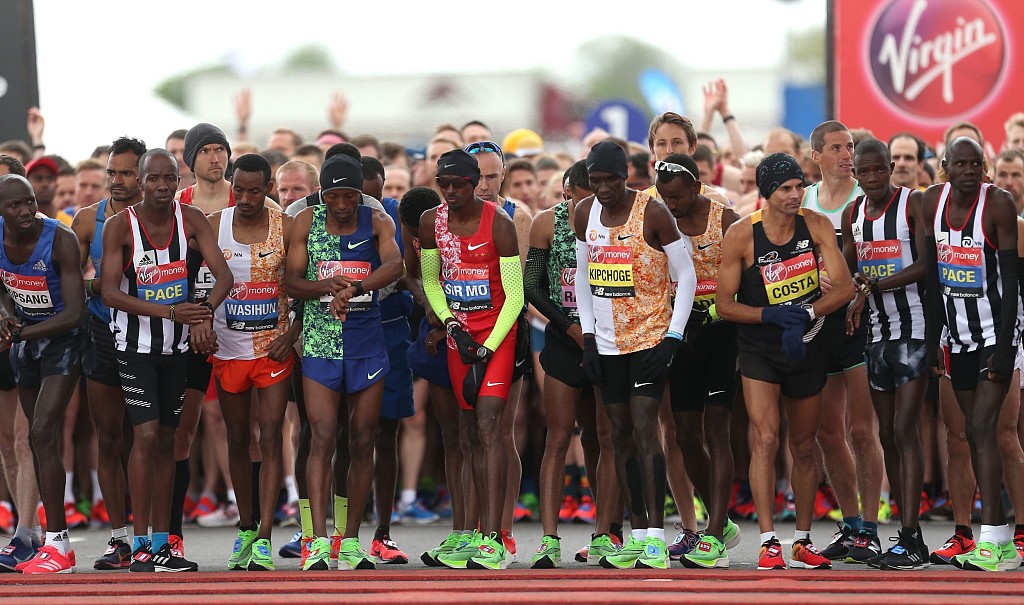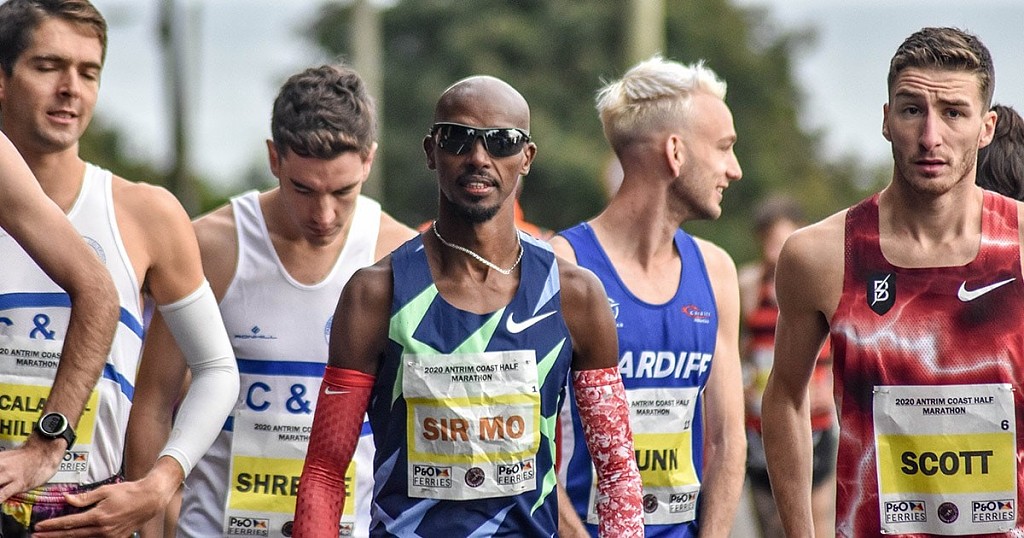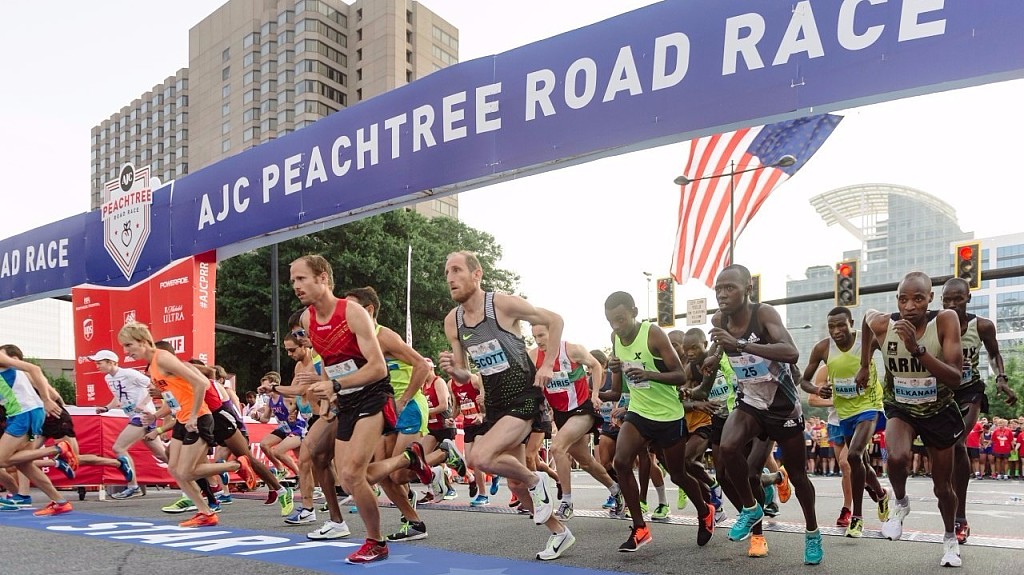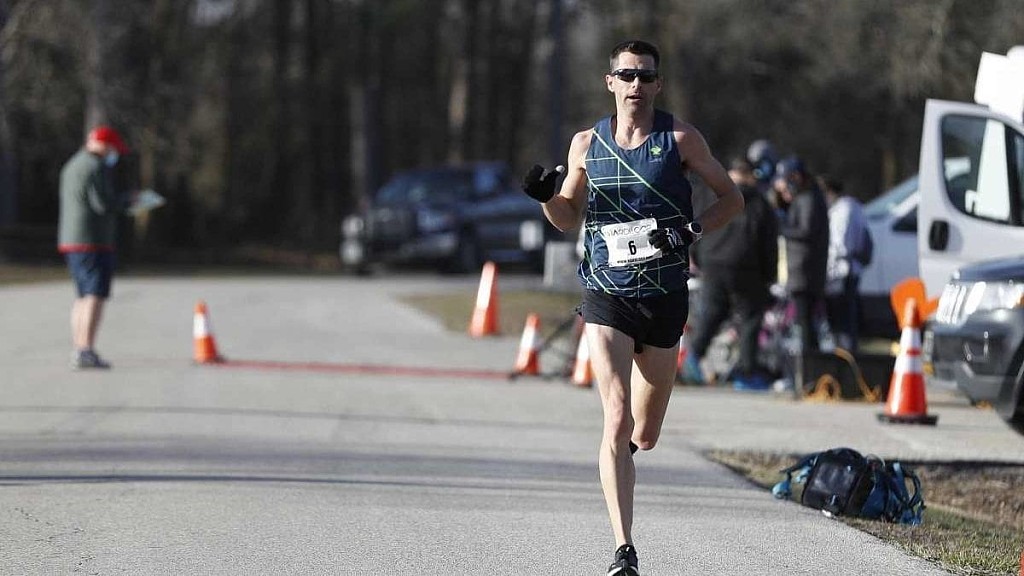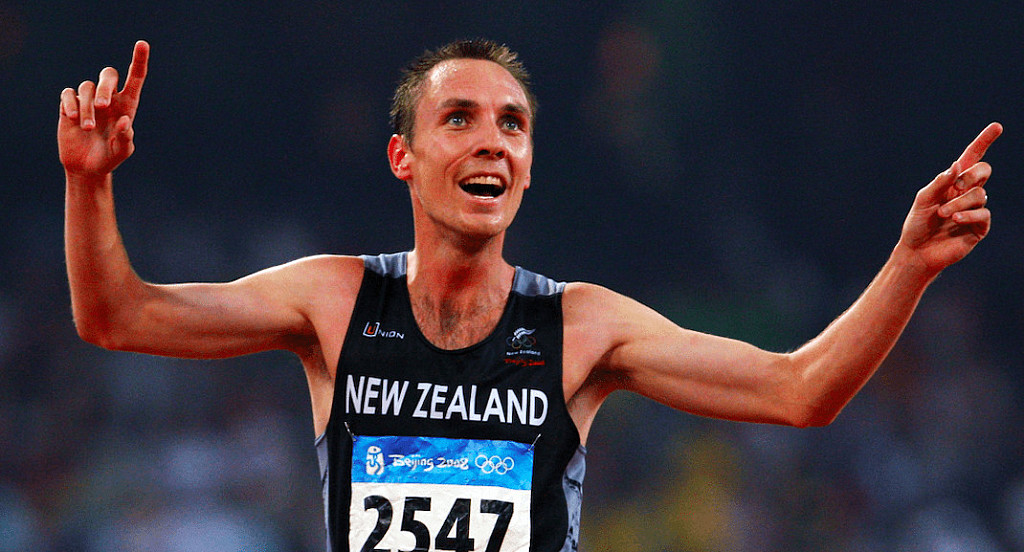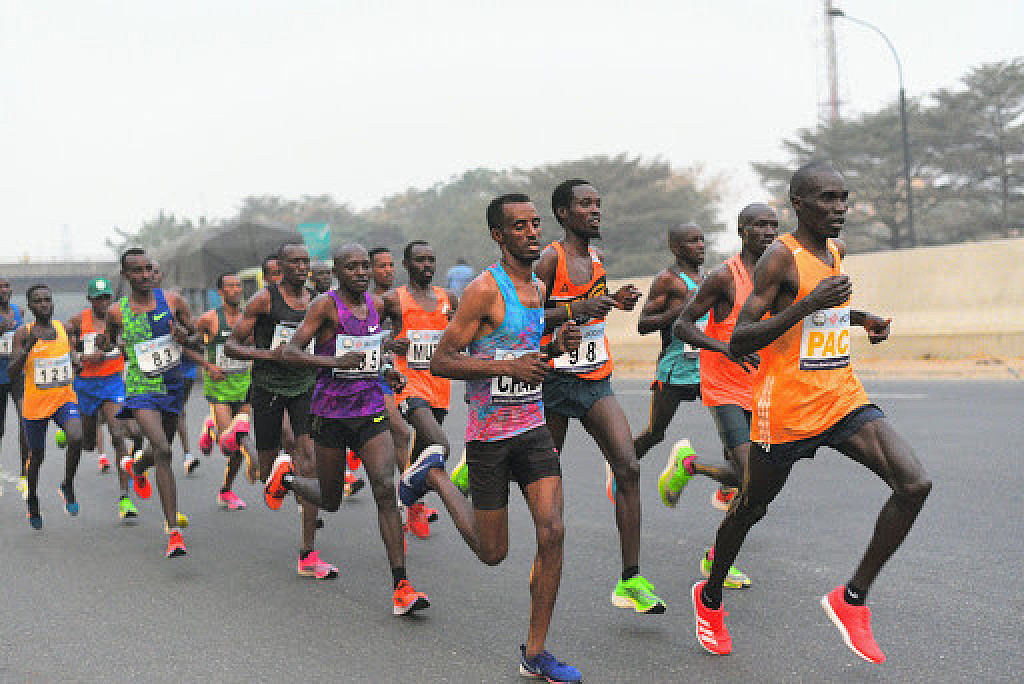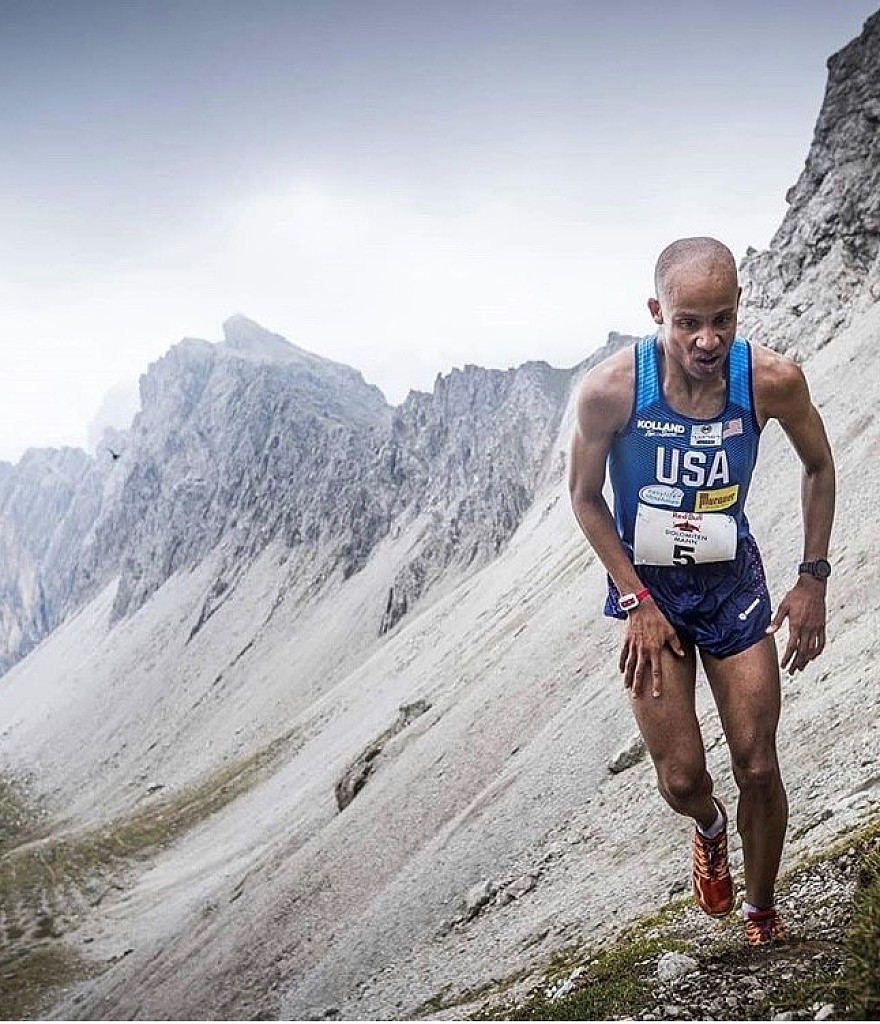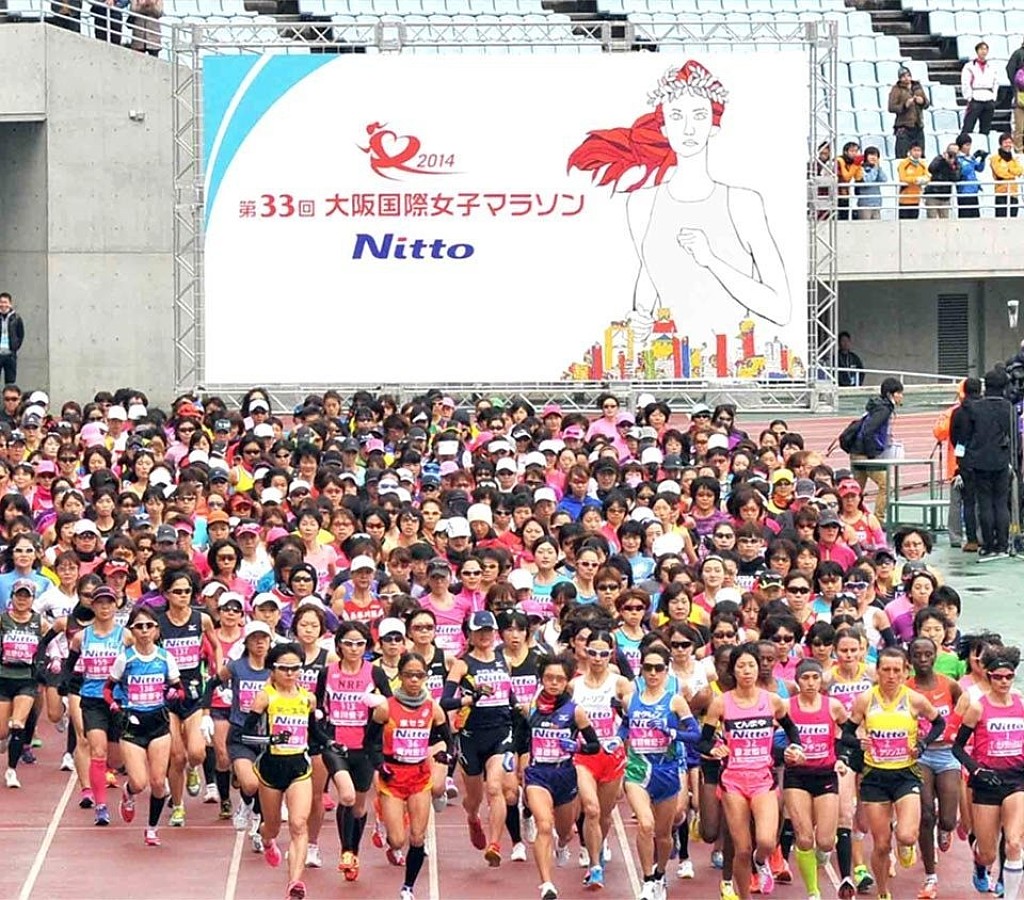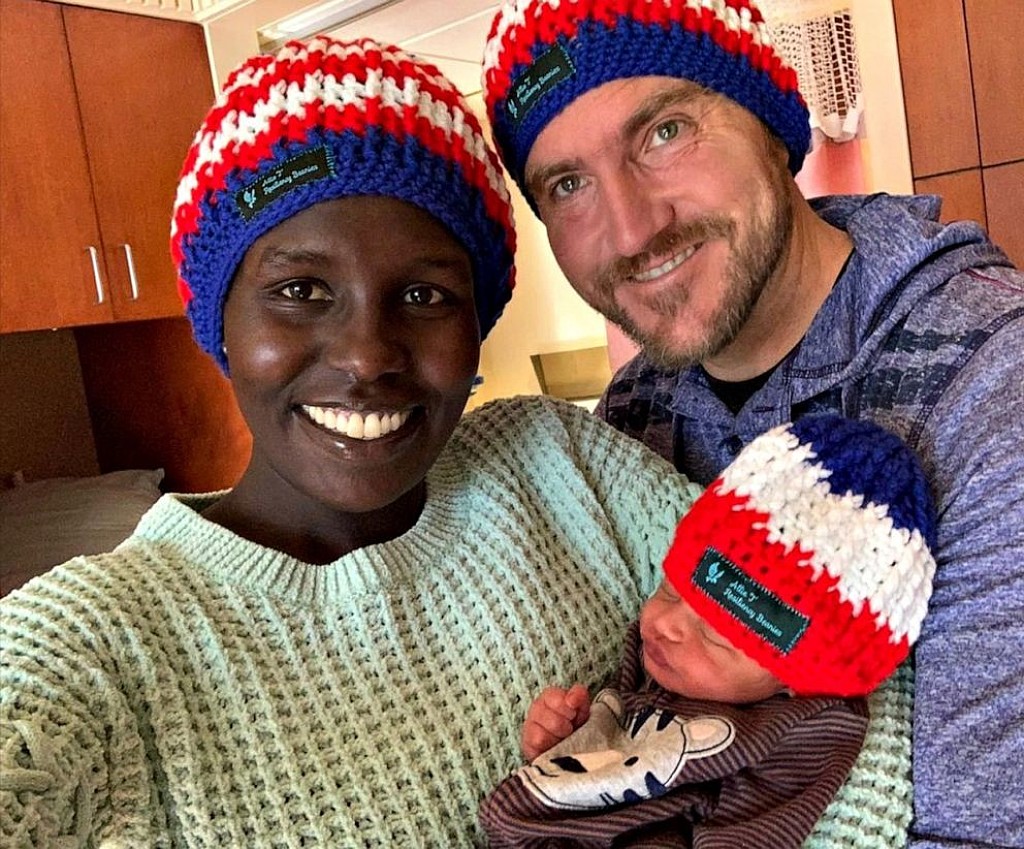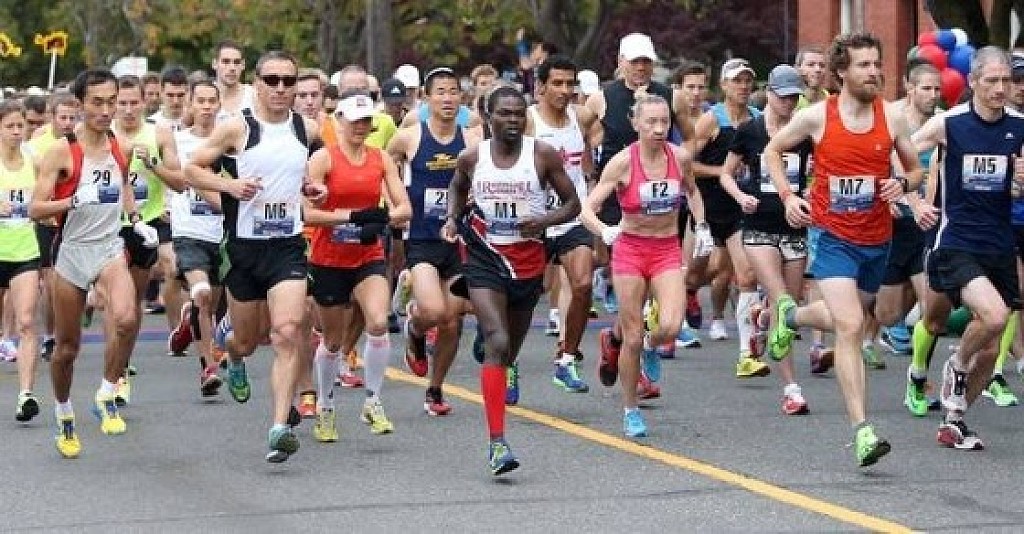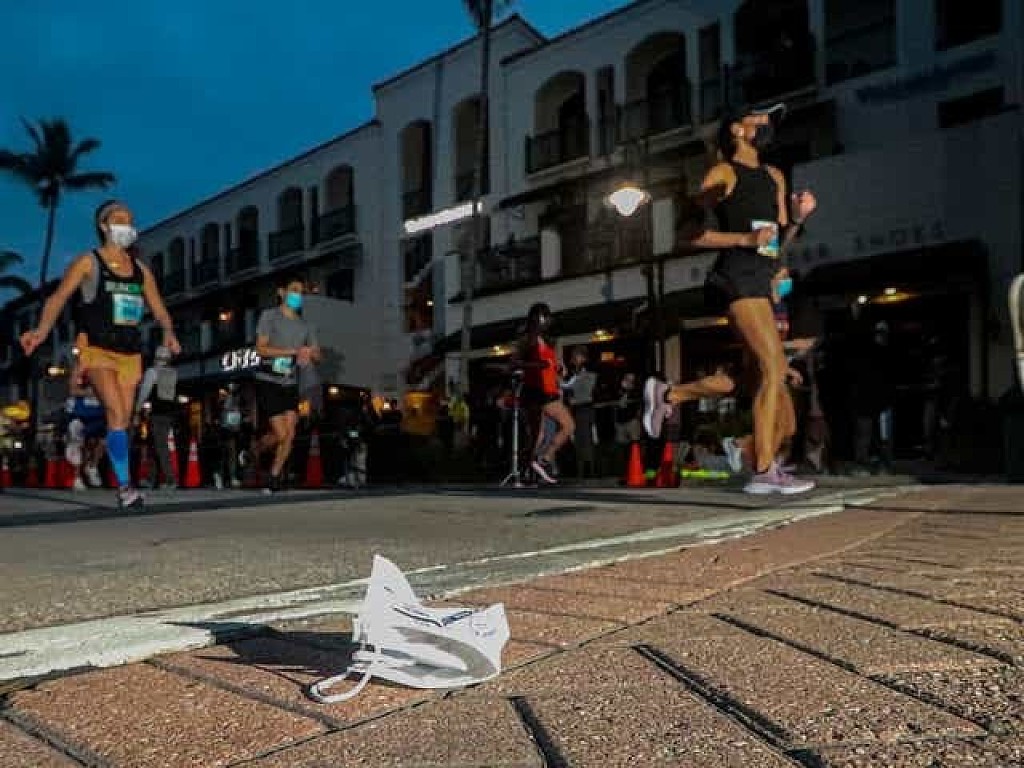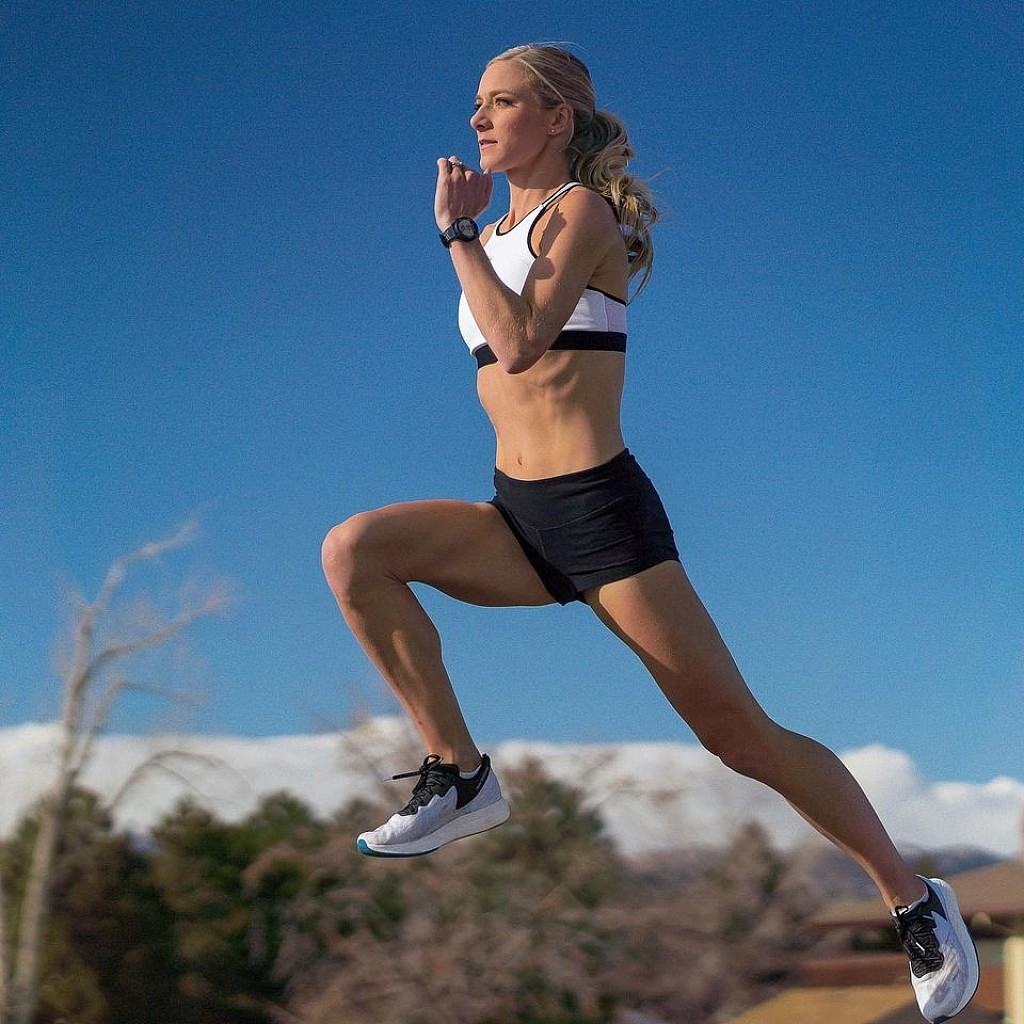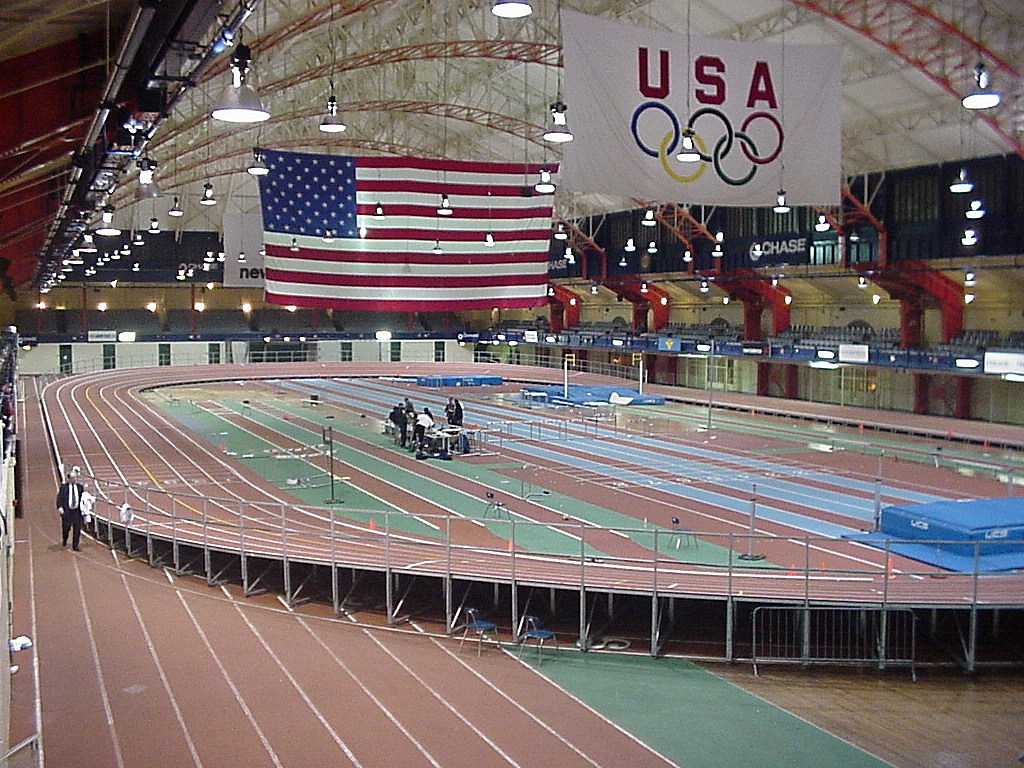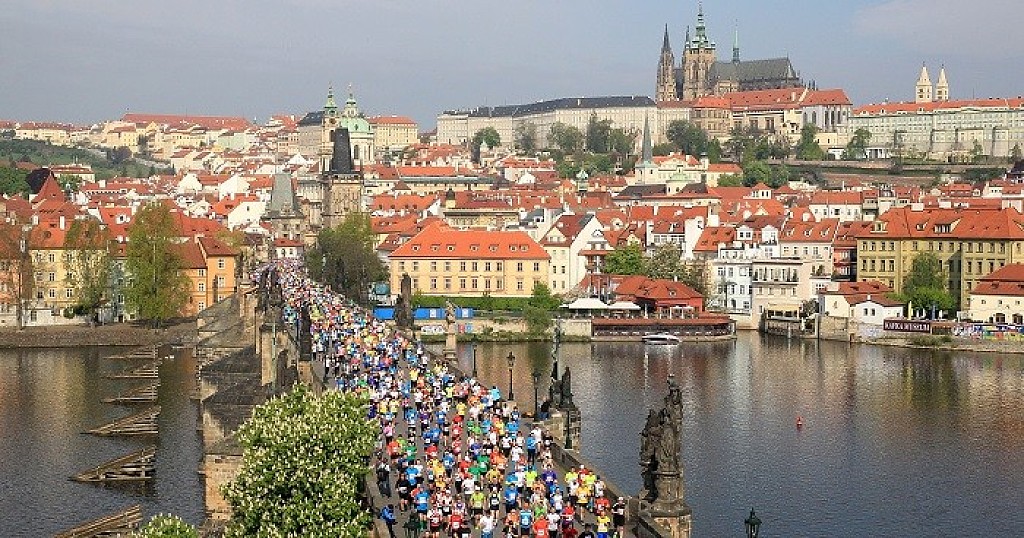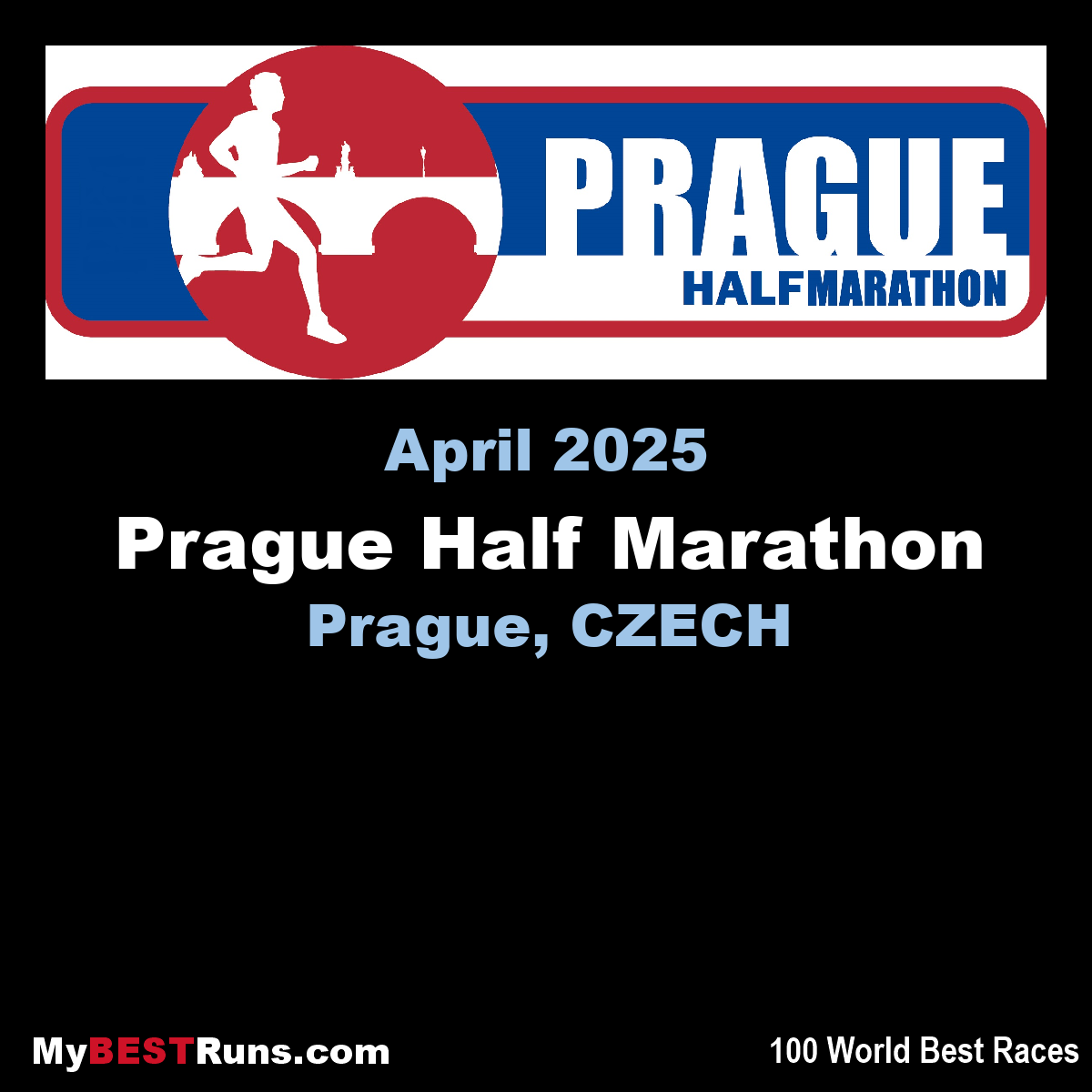Running News Daily
Running News Daily is edited by Bob Anderson in Mountain View, California USA and team in Thika Kenya, La Piedad Mexico, Bend Oregon, Chandler Arizona and Monforte da Beira Portugal. Send your news items to bob@mybestruns.com Advertising opportunities available. Over one million readers and growing. Train the Kenyan Way at KATA Running Retreat Kenya. (Kenyan Athletics Training Academy) in Thika Kenya. Opening in june 2024 KATA Running retreat Portugal. Learn more about Bob Anderson, MBR publisher and KATA director/owner, take a look at A Long Run the movie covering Bob's 50 race challenge.
Index to Daily Posts · Sign Up For Updates · Run The World Feed
Why every athlete should sleep 8 hours as priority
For many of us, getting a whopping eight hours of sleep each night may seem like a far off, lofty dream. However, obtaining a sufficient amount of zzz’s is actually extremely important for your body’s functioning and for overall demeanor. In fact, the current average of sleep is around 6.5 hours, but experts recommend at least 7, ideally 8-9 hours for the everyday adult.
Adequate sleep is even more important for sports players of all kinds, as it is an invaluable aspect of athleticism. The truth is most people know they need more sleep but struggle to clock in those types of hours each night. Below, we’ll take a look at some huge benefits of healthy sleep schedules that may motivate you to make those eight hours a consistent part of your everyday routine.
Being well rested can enhance performance

You may be surprised to find out that professional athletes are typically advised to get even more sleep than the average adult; 8-10 hours each night. While this may seem like a lot, just take a moment to think about how your body feels when you get less sleep than you should. You most likely felt drowsy, weak, and less motivated. Athletes rely on their bodies to compete at the highest levels. A poor sleep routine possesses less concentration, slower reaction times, and an overall worse performance.
In fact, sleep is so important for pro athletes and casual sports players alike that many studies have been conducted on the topic, further proving its advantages. Research done by the American Academy of Sleep Medicine found that collegiate basketball players who extended their sleep patterns to 8.5 hours actually improved diverse skills within the sport, such as sprints and free throws shots. The same goes for professional baseball players who, in one study, increased their nightly average and showed a 13% faster cognitive response time.

Even for professional poker players, healthy sleep patterns are a must. As the sport requires long hours of continual concentration, being well-rested is vital to perform to your optimum ability. The best in the game know how to load their sleep and hit the tables fresh and ready to dominate.
So, as you can see, whether it’s basketball, baseball, or even the world’s most beloved strategy game, players who make sufficient sleep a priority are immediately better off.
Athletes who sleep just five hours are much more likely to experience aggravation, mood swings, and even loss of motivation. Players who get less sleep on a consistent basis may also see a drop in their energy levels, a factor that will immediately affect performance in the short and long-term.
A full night’s rest can prevent weight gain
A huge factor of athleticism is consistently working out and having a body that is in shape. Trainings, practice, and even solo trips to the gym are invaluable for the athlete whose performance is linked to a healthy interior. Keeping off the pounds is important for the everyday individual, but even more essential for athletes. For runners, there are even dangers associated with over-activity if you’re not already in shape.
An adequate, consistent amount of sleep can help produce less ghrelin, the hormone that makes your brain think you’re hungry, and more leptin, the one that gives your body the feeling of being “full.” The balance of these two hormones is especially important for athletes who must maintain great fitness for their sport.
(01/29/2021) ⚡AMPby Runners Tribe
Osaka Women´s Marathon is focused just on Japanese elite runners
Due to increasing infection rates in Japan the number of participants in the 40th Osaka Women’s Marathon on 31 January has been limited to 99 and the traditional course through the city changed to a 2.8km lap (x 15) in Nagai Park followed by the finish in the Yanmar Nagai Stadium.
For the same reasons foreign athletes have not been invited and the focus is entirely on the Japanese elite.
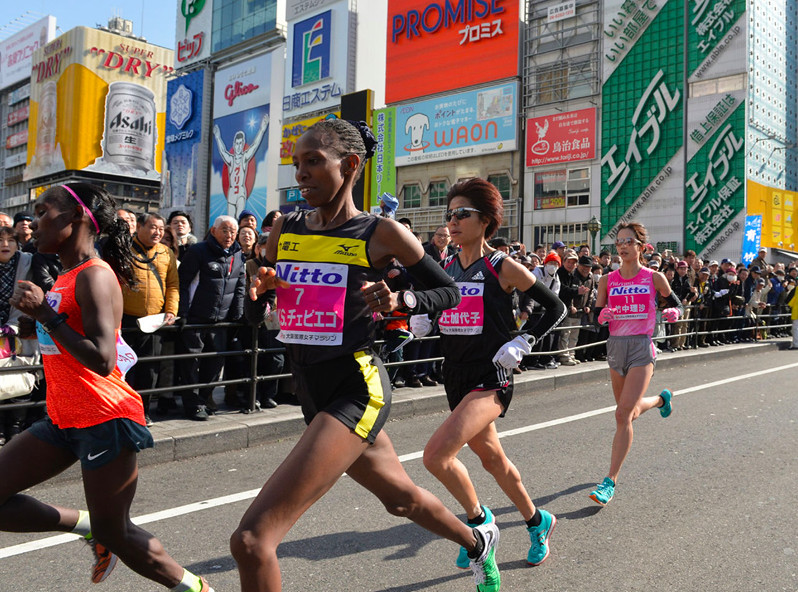
Among those running are Mao Ichiyama (JPN) and Honami Maeda (JPN), who have already qualified for their country’s Olympic team at the Marathon Grand Championships. Ichiyama won the Nagoya marathon in 2:20:29 last year, while Maeda won the Olympic qualification in 2:25:15 in September 2019.

Her best time of 2:23:48 was second in Osaka in 2018, and in the same year she was seventh in 2:25:23 in the Berlin Marathon.
The organizers plan to attack the national record for the women’s marathon of 2:19:12 (set by Mizuki Noguchi at the 2005 Berlin Marathon). The two top runners, in another departure from tradition, will be paced by a total of six men, including the unattached runner Yuki Kawauchi (JPN) and Juji Iwata (JPN).
With personal bests of 2:08:14 and 2:08:45 respectively they are likely to maintain pacing duties until shortly before the stadium entrance.
(01/29/2021) ⚡AMPby Helmut Winter
Osaka International Womens Marathon
The Osaka International Ladies Marathon is an annual marathon road race for women over the classic distance of 42.195 kilometres which is held on the 4th or 5th Sunday of January in the city of Osaka, Japan, and hosted by Japan Association of Athletics Federations, Kansai Telecasting Corporation, the Sankei Shimbun, Sankei Sports, Radio Osaka and Osaka City. The first...
more...2021 Pittsburgh Marathon has been cancelled due to the pandemic
The 2021 Pittsburgh Marathon is effectively cancelled.
The city won’t grant a permit for the Pittsburgh Marathon this year, “effectively cancelling” the race.
“It is obviously a disappointment,” said runner Morgan Price. “But I’d rather people not get sick, especially since people who typically run marathons are typically concerned about their health and the health of others.”
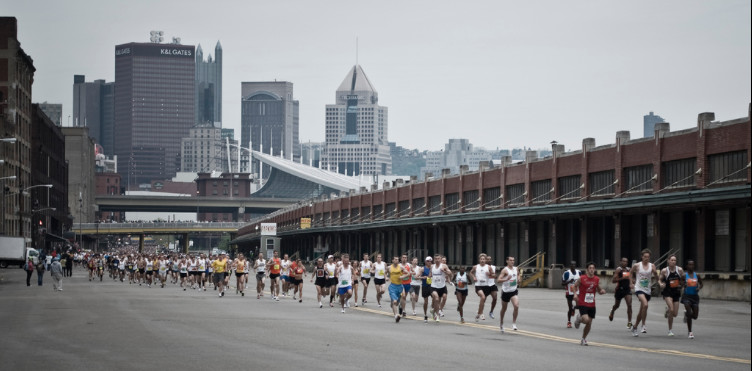
City officials and P3R tried to plan a safe way to have the marathon, but the city ultimately decided May would be too soon to hold such a large event.
“All of us at the City of Pittsburgh are optimistic that we will be able to host in-person events as soon as it is safe to do so,” said Mayor Bill Peduto in a press release. “We will continue to work closely with P3R in the coming weeks and months to host in-person races and other events starting this summer.”
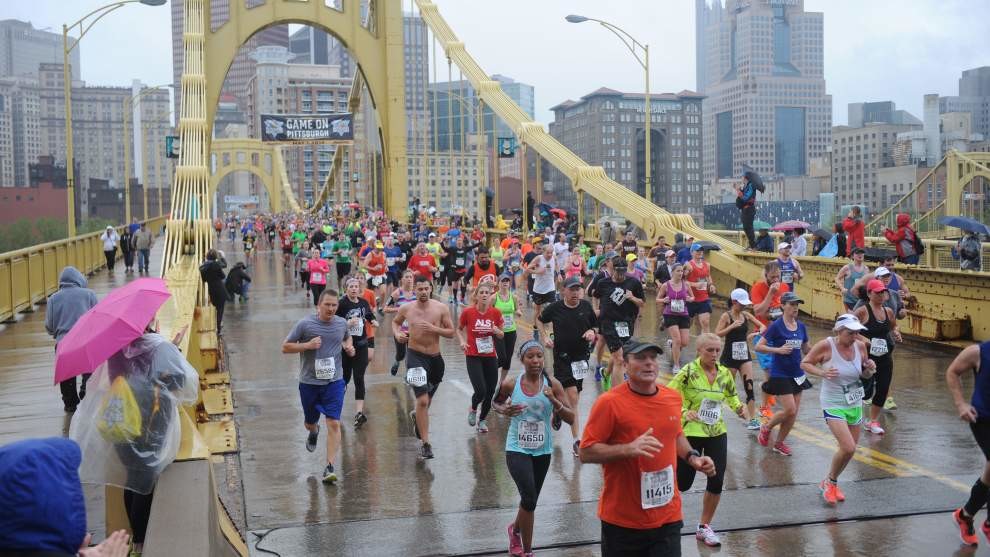
Registered participants have the option to race virtually. If that doesn’t work, they can get a refund of their registration fee.
This year’s race would have been Price’s first, but the runner is adapting with the times.
“Unfortunately, just didn’t work out that way,” Price said.
“Last year, I decided I wasn’t going to do it at all. But I’m thinking I might just do the virtual option. I don’t want to keep getting to 20 miles and quitting, so I do want to finish it,” Price added.
(01/29/2021) ⚡AMPby Bryant Reed
Dick's Sporting Good Pittsburgh Marathon
This race is your game - however you decide to play it. As a competitor. A fund raiser. An enthusiast. A veteran. A team player. It's whatever you want it to be. It's whatever you make it. It's YOUR game..... Run it. Play it. Own it. Love it. Runners will race on the North Shore of Pittsburgh, cross each of...
more...Medical workers who are elite runners are enthusiastic about receiving COVID vaccine
While some Americans are hesitant to receive a COVID-19 vaccine, a small group of elite runners who are also medical workers are enthusiastic about it after receiving their doses during this country's first wave of inoculations. Besides sore arms, brief chills, dizziness, and some nausea, these athletes report that receiving the vaccine has had no negative effects on their training. They feel good about being personally protected, but even better about being able to help protect their families and communities.
"I did this for everybody, obviously my family, my kids," said marathoner Roberta Groner, who is an office supervisor and registered nurse at a large family medical practice in New Jersey. "But also in the healthcare world we're around patients and we should be protecting them as well. Just building a stronger and safer community. The more people are vaccinated, the less spread we will have over time."
Only 3.8 million Americans, or 1.2%, are fully vaccinated, according to the Centers for Disease Control & Prevention, while 20.7 million have received their first dose (6.3%).
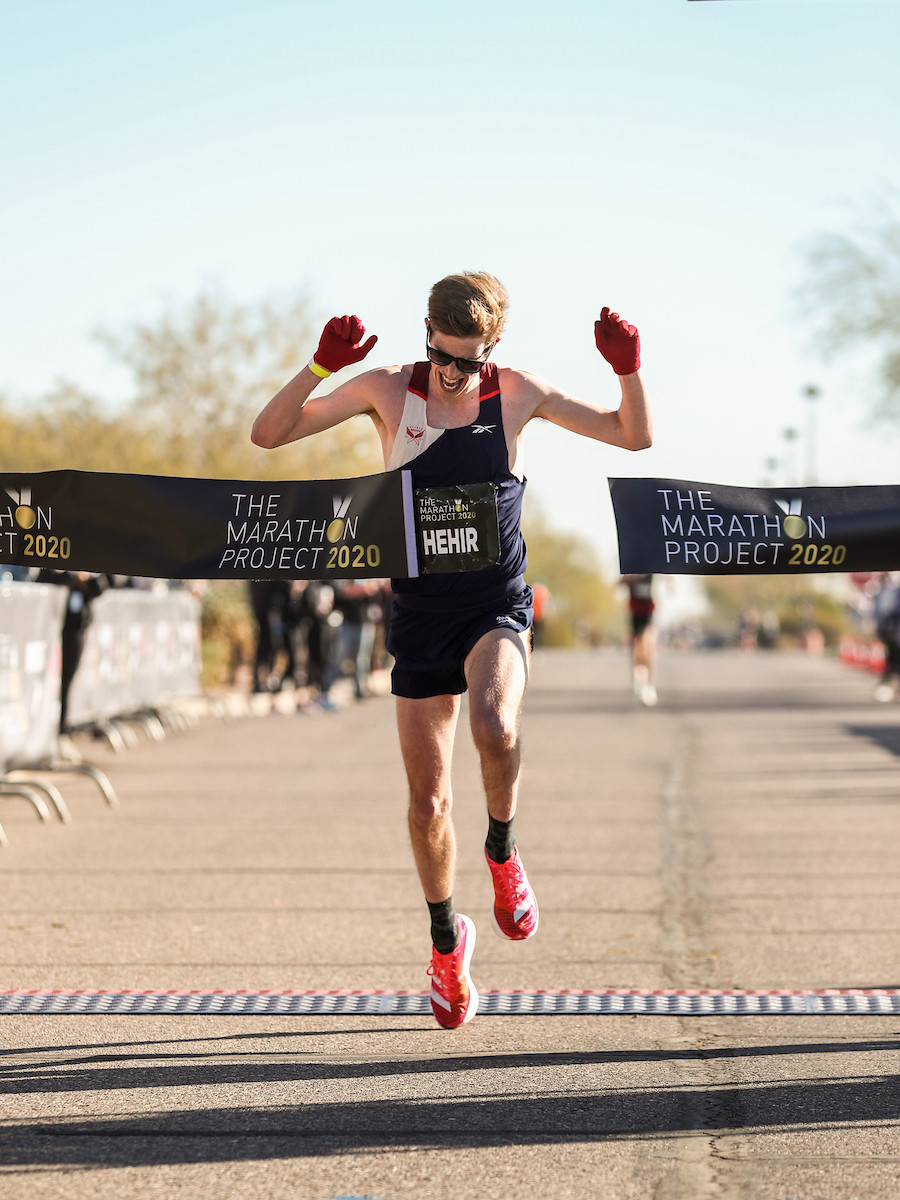
Groner, 43, finished sixth at the World Athletics Championships Marathon in September, 2019, a little less than six months after she set a personal best of 2:29:09 at the Rotterdam Marathon. She was among the first Americans to get vaccinated, receiving her first dose of the Moderna vaccine on December 22, then the second on January 19. She reported that she only had a sore arm after the first shot, but got chills the night after the second. Nonetheless, she was able to do a planned workout the next morning before going to work.
"That evening I had chills," she told Race Results Weekly in a telephone interview yesterday. "I don't know if I had a fever; I never checked. By the next morning I was fine. Got up, did a big workout and went to work." She continued: "I didn't decrease my mileage for the week. I ran 76 miles last week, so keeping on target with that. I didn't miss work or anything. My arm didn't get sore the second time."
Martin Hehir, 28, a fourth year medical student in Philadelphia who won The Marathon Project last month in Arizona with a personal best 2:08:59, had a similar experience to Groner, at least so far. He has received just the first dose of the Pfizer vaccine and will get the second on February 5.
"So, I felt totally fine," he said by telephone yesterday. "The old pinch in the arm. Arm was a little sore for maybe day or so, kind of on par with when I get the flu shot, anything like that. Totally felt normal, like a normal vaccine."
Hehir is ready for a more robust immune response after his second dose, and explained why.
"The whole thing, is based on some basic immunology," said the Reebok Boston Track Club athlete who is studying to become an anesthesiologist. "Your body sees something for the first time which is that first dose. It's slow and sluggish and has to figure out how to make the right antibodies. The second time around when it sees something there is a much more immunological response because your body is kind of primed. So, that's exactly what happens when you get the second booster dose. Your immune system ramps up. It's acting as if it has to fight something off."
As the pandemic grinds on, elite runners have seen their opportunities to compete shrink drastically. Mass-participation road races have all but stopped, and although small "micro races" have given athletes some chances to compete they offer little if any financial compensation. Everyone agrees that widespread vaccination is the only way that these events will come back.
"If there is any shot at having races again any time soon it's important that we get this vaccine out early, quickly, and widespread, not just in the United States, but the world," said Erin Finn, 26, twice the 5000-meter runner-up at the NCAA Indoor Championships for the University of Michigan. She is now a second year medical student there. "The quicker we get the vaccine, the less time the virus has to mutate and become resistant."
Like Groner, Finn was one of the first people to be vaccinated. She got her first dose of the Pfizer vaccine on December 30, and the second on January 20. She received an e-mail just a few days after Christmas inviting her to get her shot, something she called her "after Christmas present." Her parents, who are primary care physicians, have also been vaccinated.
"I'm feeling, I guess, just really lucky that Michigan was able to vaccinate all of its medical students so quickly," Finn told Race Results Weekly yesterday over the telephone. "I'm just feeling lucky to know that my family is safe, and if someone asks us how did it go we can just be a reinforcement that this vaccine is really, like, a blessing and nothing to be scared of, but instead something that unites us. I'm just really excited, to be honest."
All of the athletes stressed that while receiving the vaccine provided them with a good level of protection, that they needed to maintain all of their regular anti-COVID protocols, like mask-wearing, hand washing and social distancing. The science is not clear on whether vaccinated persons can still spread the virus, so they urged others to keep up all of their mitigating practices after they received their shots. They stressed that getting vaccinated was not a license to return to pre-COVID behaviors.
"There's a couple of things that we still don't know, and one is whether it prevents transmission, "Finn said. "And, while there is good theory to believe that it stops transmission, but we don't know that yet. It's important to still wear a mask, as frustrating as that is. In the mean time, the recommendations are for you not to change your conduct. We're still learning about the vaccine and we're still in the storm of the pandemic."
(01/28/2021) ⚡AMPby David Monti
Registration boom leads to tighter standards for Lake Biwa
Entries for the Lake Biwa Mainichi Marathon on 28 February closed on 22 January. With most other races cancelled or postponed due to the coronavirus crisis Lake Biwa this year received nearly double the normal number of applications for entry.
Putting on the race with such a large field poses problems and prevent the organisation from safely executing all planned coronavirus countermeasures. As a result revised entry standards will be applied based on World Athletics scoring points as follows: 10000m: 30:40; half marathon: 1:07:29; marathon: 2:27:30.
After proof of qualification from each entrant was checked on 25 January notifications were sent to all those who were unable to participate under these new standards. Information regarding refund of entry fees was included. Those eligible to participate will be notified around 5 February, on which date there will be a virtual press conference to announce the elite athlete field.
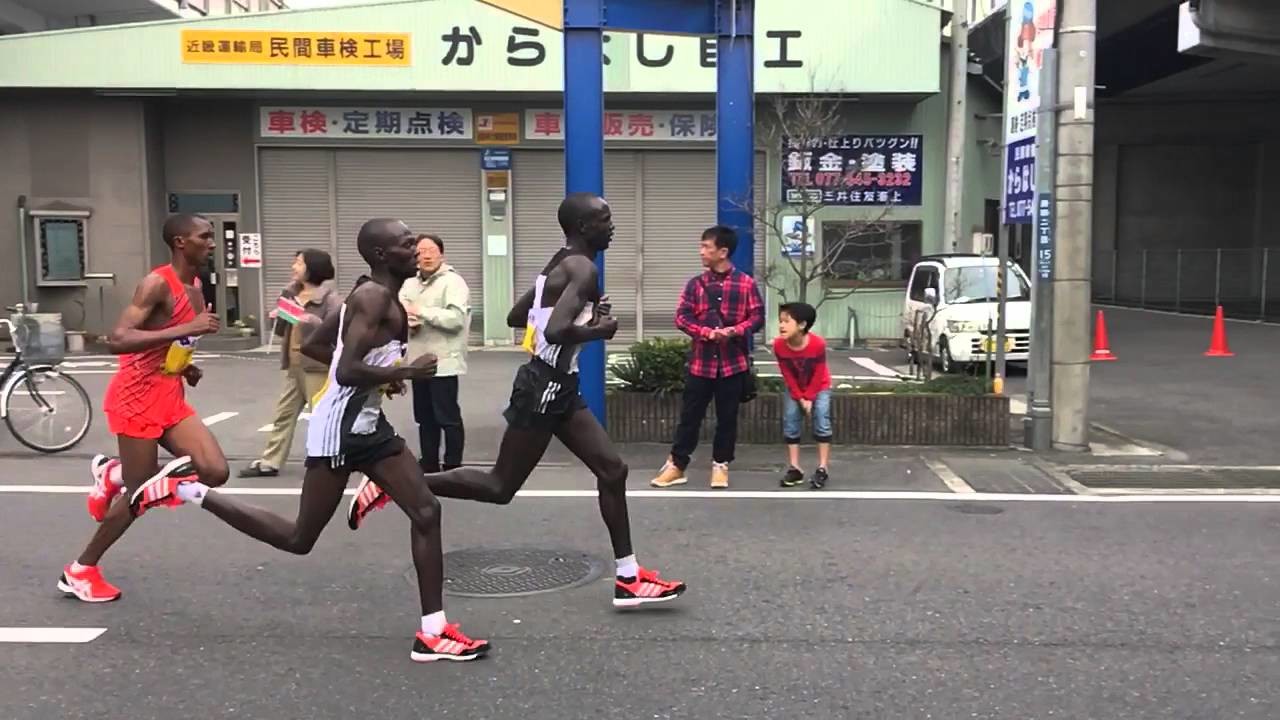
Further operational changes may become necessary as the situation regarding the virus evolves, said the organisers.
There are multiple reports where people have claimed that Lake Biwa has also rejected all entries from abroad, after initially being open to international participation.
(01/28/2021) ⚡AMPby Brett Larner
Osaka Marathon
In 2022 the Lake Biwa Mainichi Marathon and Osaka Marathon were held together. For 2023 the name of the marathon will be Osaka and both men and women can run the race. The original male-only competition was first held in 1946 and, having taken place every year since then, it is Japan's oldest annual marathon race. The early editions of...
more...Australia is planning to vaccinate athletes before Tokyo Games
Australia aims to vaccinate its Olympians against COVID-19 before they head to the Tokyo Games, federal sport minister Richard Colbeck has said.
Advice from the body coordinating the vaccination rollout plan suggested that athletes would likely be inoculated before the July 23-Aug. 8 Games, Colbeck said in comments published by the Canberra Times on Thursday.

"If our plans work OK it may very well be conceivable that Olympic athletes, for example, we'll get to them before they head off to the Games anyway," he was quoted as saying.
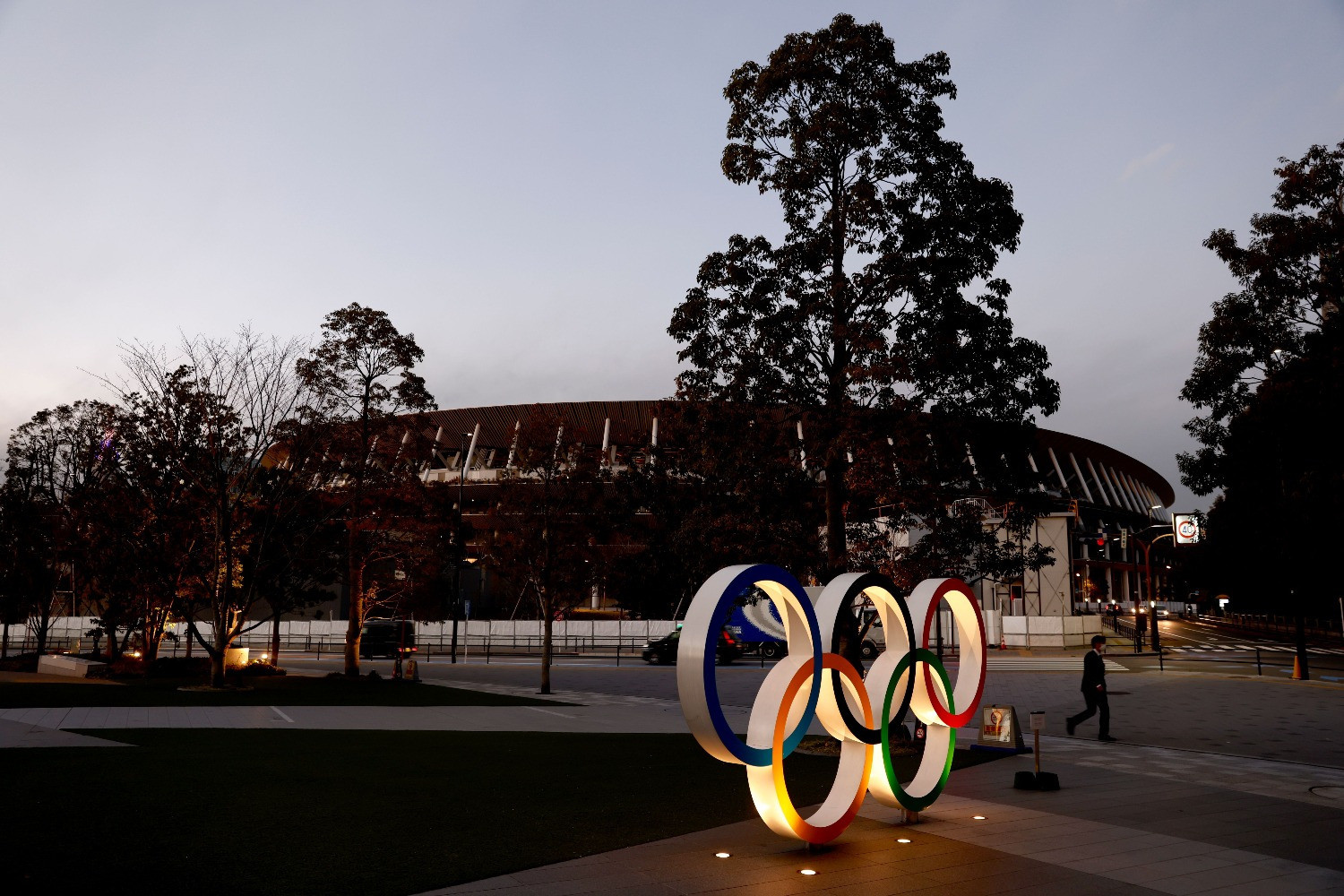
Colbeck later issued a statement saying that "older Australians, frontline workers and those with underlying medical conditions" would be prioritised and that "most athletes" would be vaccinated in a later phase of the rollout.
A number of national Olympic committees are planning to vaccinate their athletes before the Games.
Israel's Olympic Committee said it had already vaccinated half its Olympic delegation and would complete the process by the end of May.
South Korea's Prime Minister Chung Sye-kyun said, "Of course the athletes should be given the vaccine if they are going to participate," when asked in an interview with Reuters on Thursday.
South Korea has said it will decide whether to vaccinate the 157 athletes signed up so far when Japan comes to a formal decision to go ahead with the Games.
The International Olympic Committee President Thomas Bach said on Wednesday the governing body was not in favour of athletes "jumping the queue" for COVID-19 vaccines.
The Australian Olympic Committee (AOC) said it hoped athletes could be vaccinated but said vulnerable people and health workers must come first.
"We are recommending and encouraging our athletes to get vaccinated but support the IOC position that it’s not mandatory," an AOC spokesman said.
(01/28/2021) ⚡AMPby Reuters
Tokyo 2020 Olympic Games
Fifty-six years after having organized the Olympic Games, the Japanese capital will be hosting a Summer edition for the second time, originally scheduled from July 24 to August 9, 2020, the games were postponed due to coronavirus outbreak, the postponed Tokyo Olympics will be held from July 23 to August 8 in 2021, according to the International Olympic Committee decision. ...
more...2021 Belfast City Marathon event will take place on September with virtual half marathon on regular May date
Belfast Marathon organizers hope this year's event on Sunday September 19, will have a mass field while a virtual half marathon will take place on the race's regular May Bank Holiday date.
Last year's event was cancelled because of Covid-19 after organizers had initially moved it back to September.
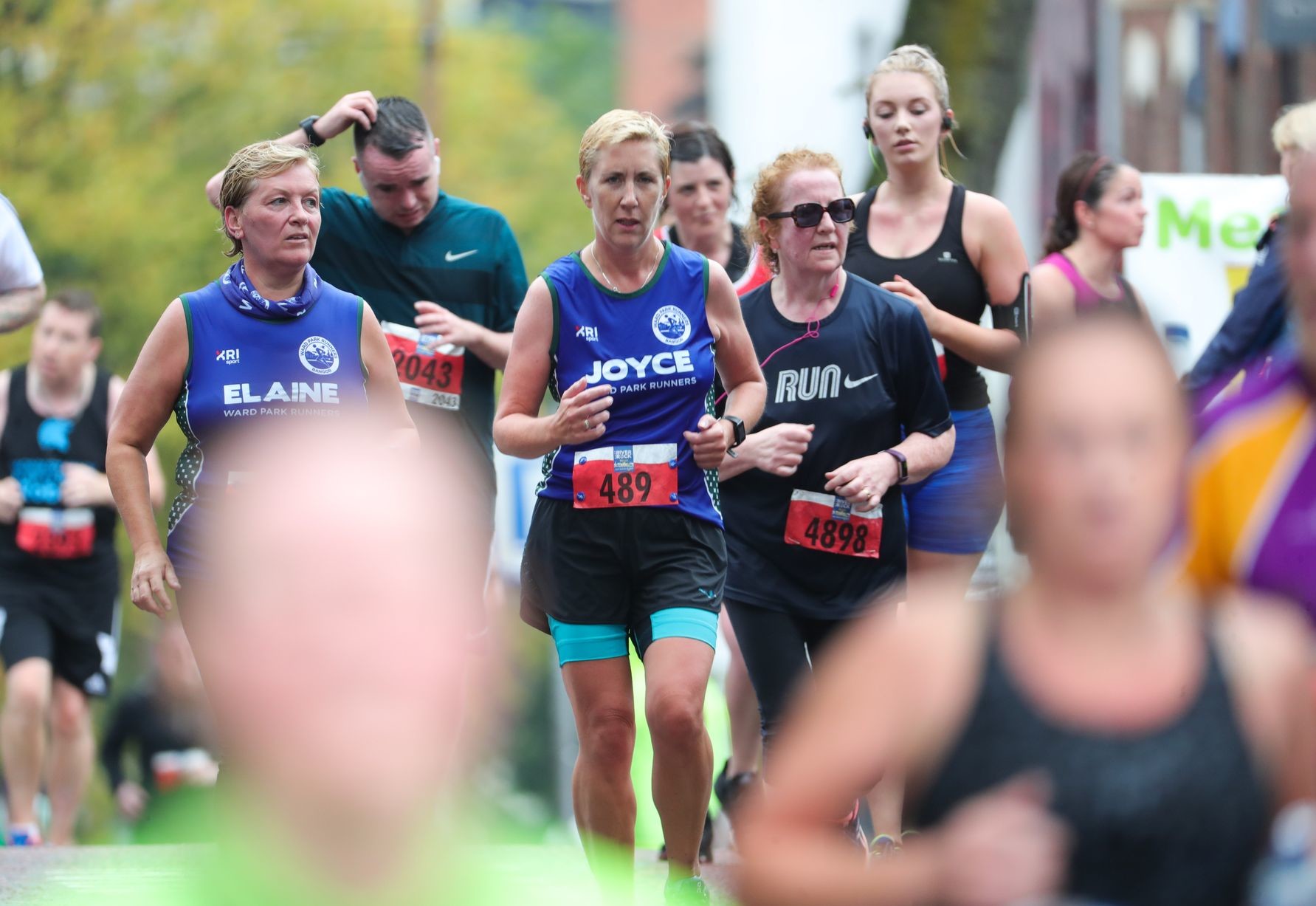
Like many city marathons including London, the Belfast organizers are now plumping for an autumn date.
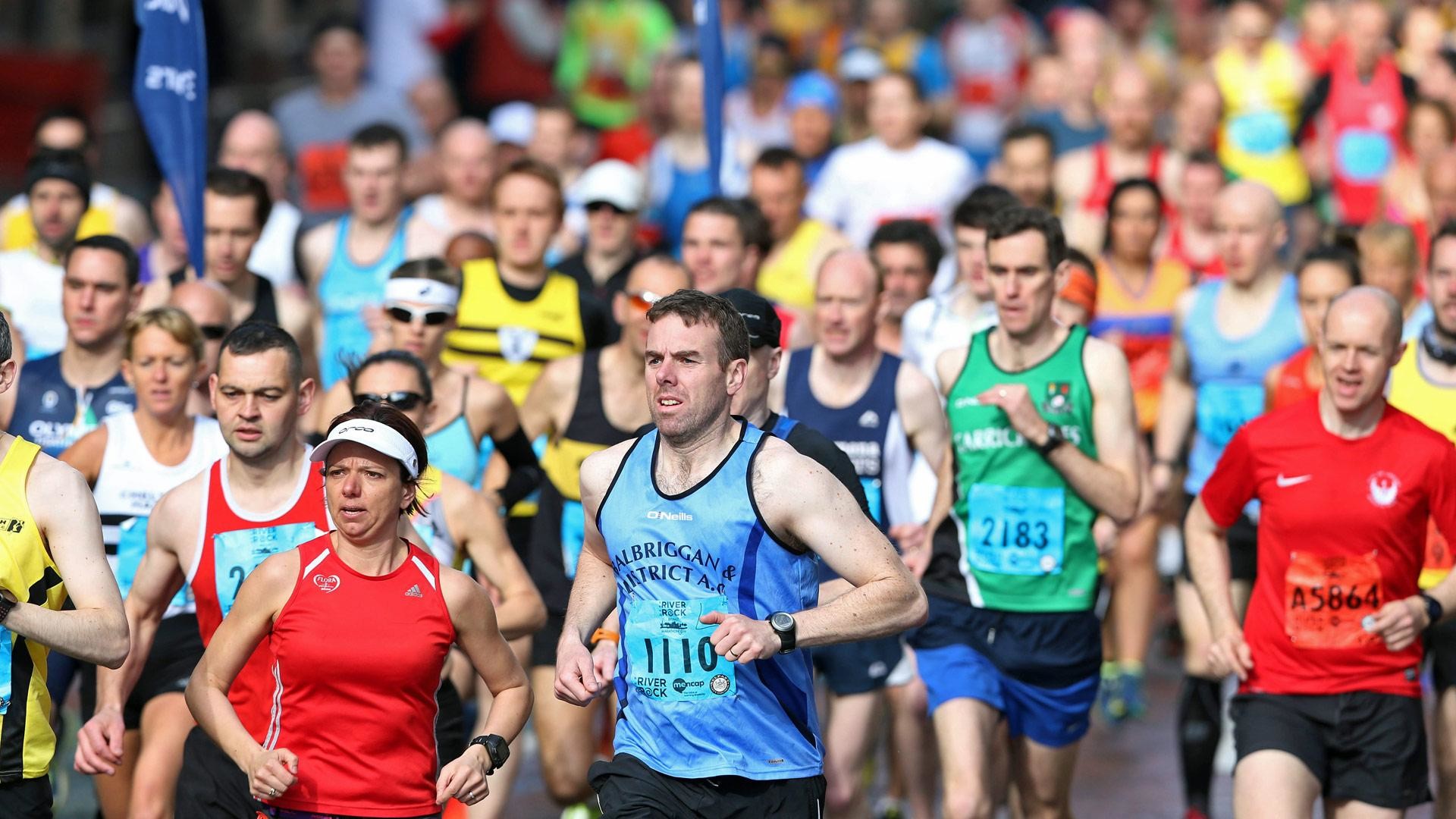
They will hope the rollout of the Covid vaccine can make the event happen.
"Moving the Half Marathon virtually will enable everyone to get involved safely," said Belfast City Marathon chairman John Allen.
"It is important at this time that we try to keep some type of routine and we believe that this temporary change of order will help motivate people physically and mentally.
"The 39th Deep RiverRock Belfast City Marathon will now take place on Sunday September 19, and we are encouraging all to support our event as we work together to bring back some 'normality' safely.
"The 2021 race will return to a Stormont start and finish in Ormeau Park with a few revisions, including a new team relay changeover point on Montgomery Road."
The virtual Belfast Half Marathon will take place from 1-3 May with all runners completing their 13.1 miles close to their home, following government guidelines for exercise and social distancing.
Entrants must complete the distance in one session and upload their results before midnight on Monday May 3.
(01/28/2021) ⚡AMPBelfast City Marathon
The event has grown with the inclusion of new sponsors which now include Deep River Rock, Belfast City Council, U105, ASICS, Daily Mirror, Translink, Athletics Northern Ireland, Linwoods, Belfast Live, Centra, White's Oats, Podium 4 Sport, U105 and Tayto. The route will remain the same - starting at the City Hall and finishing at Ormeau Park. The race starts at...
more...Great North Run Organizers Make Plans for September and searching ways to make the event safe for all who enter
Great North Run organizers make plans for September despite COVID-19.
Organizers of The Great North Run are making plans for the iconic half marathon to go ahead in September, despite the COVID pandemic that has the world in its grip. They are in search of ways to make the half marathon safe for all who enter.
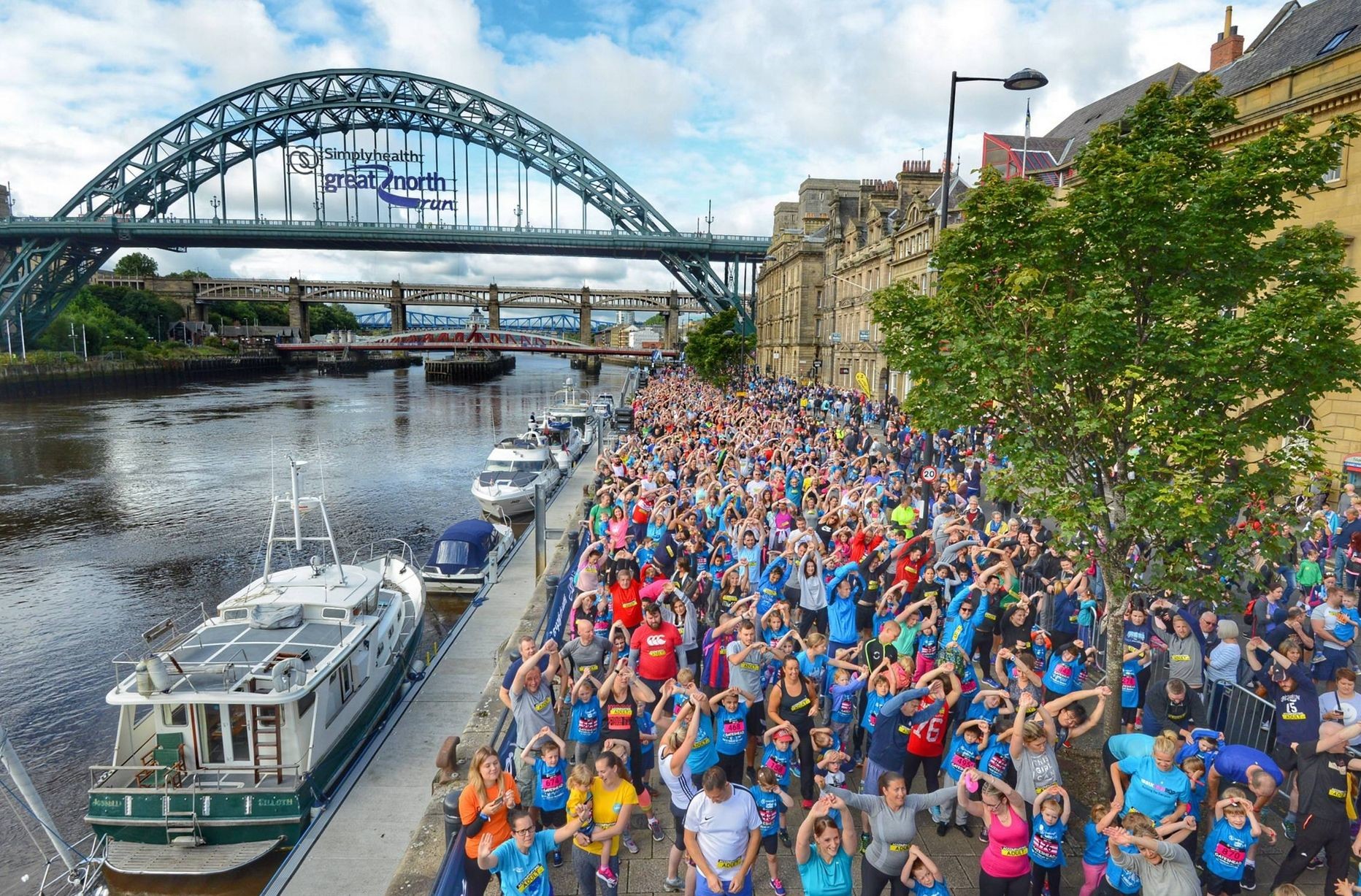
Last year the event was cancelled and it is thought that the loss of the event cost the local economy around £30 million. Although a Virtual Great North Run took place. Last year should have been the 40th anniversary but unfortunately the event had to be postponed due to the pandemic, and rescheduled for Sunday, September 12, 2021.
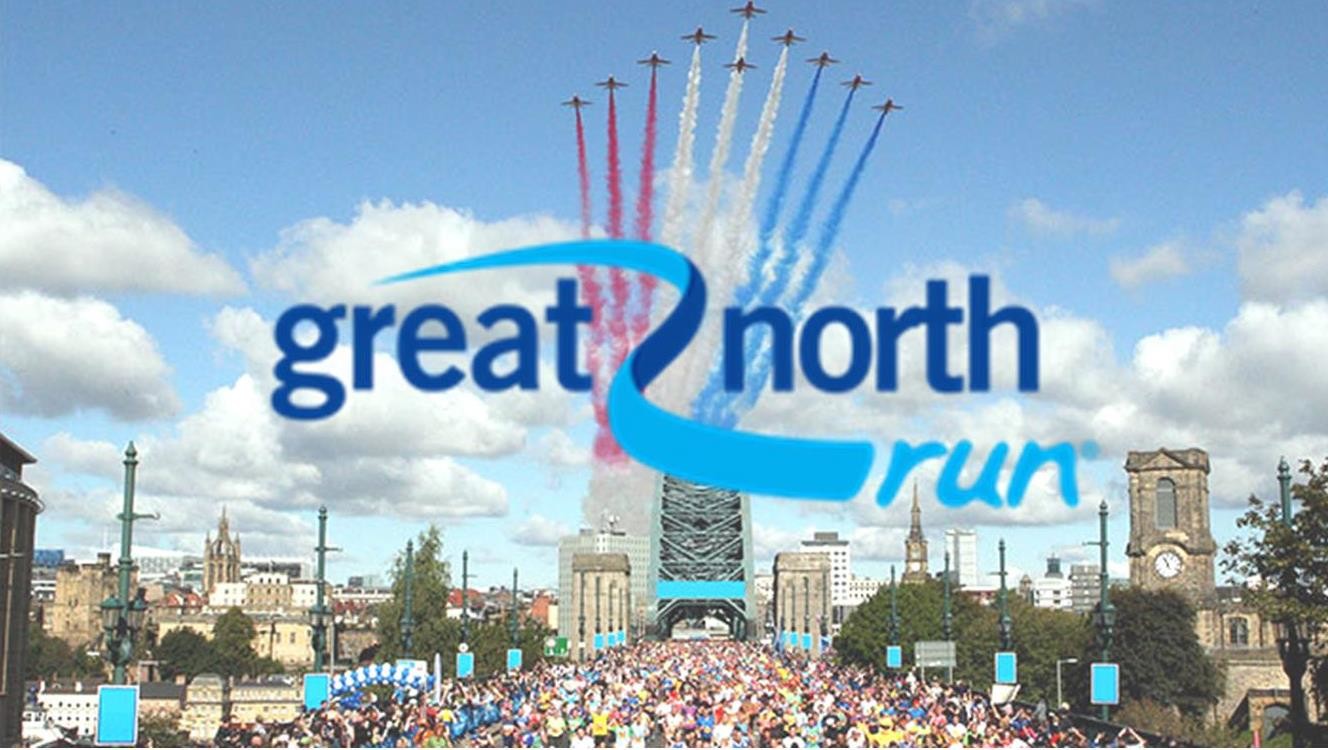
Paul Foster, CEO at The Great Run Company, said, “This year’s Great North Run is scheduled to take place on Sunday 12 September. As always, our runners safety is our number one priority and we’re working really hard behind the scenes to make sure the event can be delivered in a Covid secure way.
“Like everyone, we are closely monitoring the ongoing situation and will update our customers if there are any changes to the planned programme.”
The global pandemic is still affecting the world and as new strains of the virus are being discovered the future of events is uncertain for the second year in a row. It was only announced last week that the Glastonbury music festival will not be happening in 2021.
(01/28/2021) ⚡AMPby Alex Glenn
Great North Run
Great North Run founder Brendan Foster believes Britain is ready to welcome the world with open arms after the launch of the event's most ambitious plan to date. The Great World Run campaign seeks to recruit one runner from every country in the United Nations – 193 in total – to take part in the iconic half marathon in...
more...With six months to go until the Summer Games, Florida's chief financial officer has offered his state as an Olympic backup plan
Jimmy Patronis, Florida’s chief financial officer, has reached out to International Olympic Committee (IOC) president Thomas Bach to offer his state as a backup site for the upcoming Summer Games in case the Tokyo event is cancelled.
In a letter that Patronis sent to Bach and posted online, he mentioned the rumors that the Japanese government is planning on axing the Games once and for all, adding that “there is still time to deploy a site selection team to Florida.” Florida, like Japan and most of the world, is still trying to flatten the curve of COVID-19.
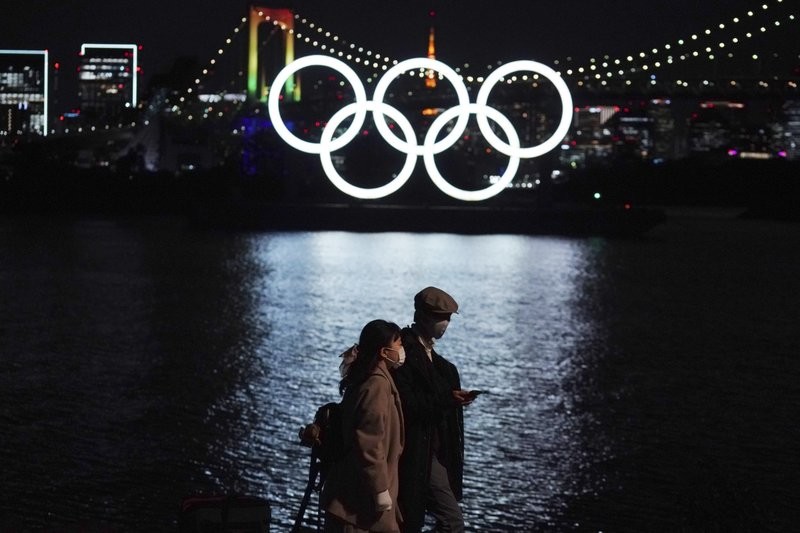
Covid-19 cases continue to surge across the globe, increasing doubts surrounding the Olympics every passing day. News that the Japanese government is second-guessing its plans to host the Olympics was first reported by the British newspaper The Times. This report cited a senior member of the ruling commission in Japan who said the fate of the Tokyo Games has already been decided behind closed doors, and that the Olympics will not go ahead as planned after already being postponed one year due to COVID-19.
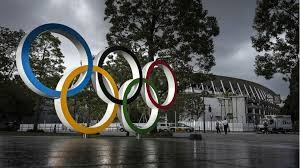
High-ranking officials in the Japanese government, including the country’s prime minister, Yoshihide Suga, have since denied that the Games are in jeopardy. Patronis either didn’t see these followup reports or he simply doesn’t believe them to be true, because he moved forward with his letter to Bach, referring to the “reports of leaders in Japan ‘privately’ concluding that they are too concerned about the pandemic for the 2021 Olympics to take place.”
Patronis pointed to Florida´s pre-pandemic tourism numbers, noting that the state welcomed 900 people per day. In 2019, he said, 131 million people visited Florida, adding that the state is well equipped for “a major undertaking of this sort” thanks to “ample hotel capacity and well-maintained transportation networks.” He continued, writing, “Florida has 20 commercial airports, 31 urban transit systems, 12 major universities that have existing sporting facilities – and we have world- renowned health care facilities in each of our regions.”
Patronis celebrated his state´s willingness to remain open throughout much of the pandemic, noting that this had huge benefits for the economy. He didn’t mention the state’s COVID-19 stats, which currently sit at 1.6 million cases and more than 25,000 deaths (compared to 369,000 cases and a little over 5,000 deaths in Japan).
The IOC has not published a response to Patronis, who sent his letter on Monday, but he did leave Bach his office phone number, asking him to reach out so they could set up a meeting. “Whatever precautions are required,” he wrote, wrapping the letter up, “let’s figure it out and get it done.”
(01/27/2021) ⚡AMPby Ben Snider-McGrath
Tokyo 2020 Olympic Games
Fifty-six years after having organized the Olympic Games, the Japanese capital will be hosting a Summer edition for the second time, originally scheduled from July 24 to August 9, 2020, the games were postponed due to coronavirus outbreak, the postponed Tokyo Olympics will be held from July 23 to August 8 in 2021, according to the International Olympic Committee decision. ...
more...Los Angeles Marathon 2021 postponed until fall due to coronavirus
The 2021 Los Angeles Marathon was rescheduled for a second time Tuesday due to the ongoing coronavirus pandemic, with the 36th edition of the annual race now set for sometime in the fall.
In November, the marathon was postponed from its original date of March 21 to May 23, pending final approval of all city partners, applicable health departments and other governmental agencies. But organizers couldn't make that date either, they said Tuesday.
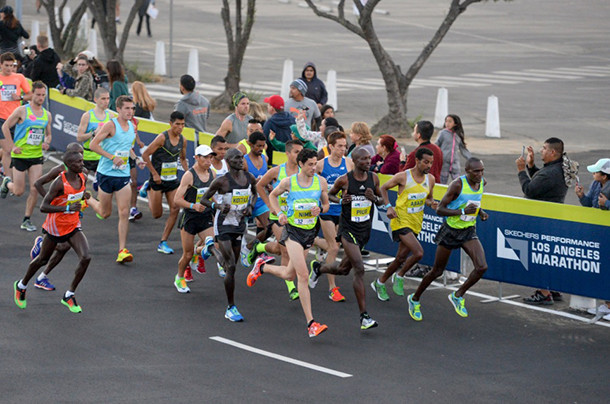
"Given the current state of the pandemic in the Los Angeles area and the pace of the vaccine roll-out, the Rose Bowl Half Marathon & 5K, the LABig5K and the Los Angeles Marathon presented by ASICS will be rescheduled for the fall 2021," marathon officials tweeted.
"We are currently exploring available dates with our host cities and venues. This process will take some weeks and a decision regarding new dates will be announced as soon as possible. All decisions will be made with the health and safety of all athletes, volunteers and city officials as our top priority."
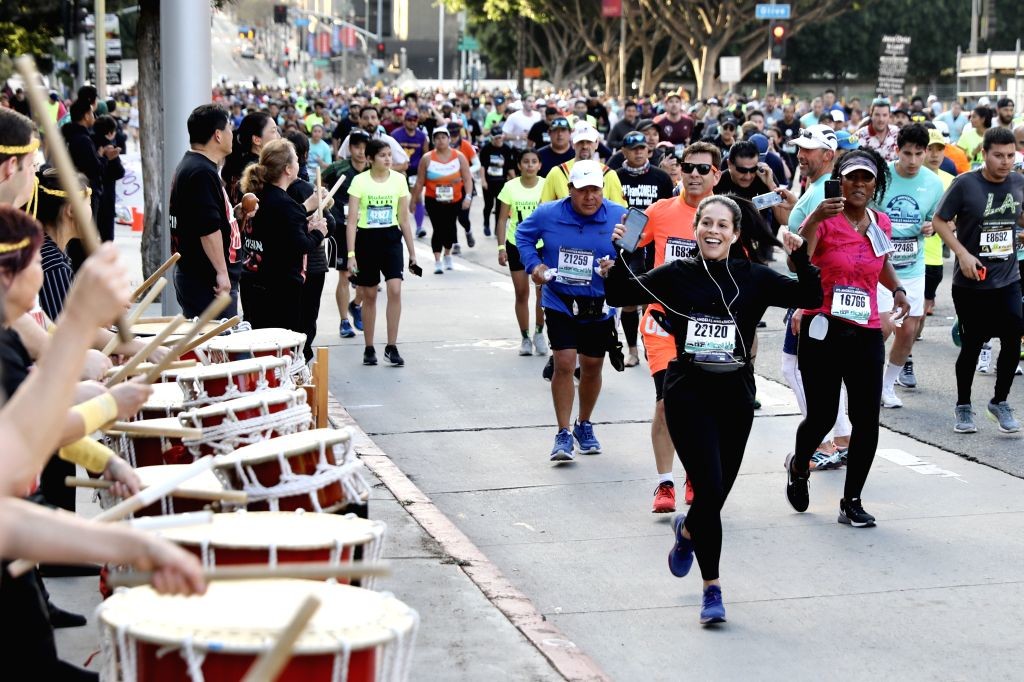
The LA Big 5K is customarily run on the eve of the marathon.
The McCourt Foundation, which runs the marathon and the Rose Bowl 5K and Half Marathon, announced a major course change to the Los Angeles Marathon last year, replacing the "Stadium to the Sea'' course it had been run on since 2010 to a "Stadium to the Stars'' course from Dodger Stadium to Brentwood where runners will double back on San Vicente, Sepulveda and Santa Monica boulevards, ending at Avenue of the Stars in Century City.
The change was made because "the dramatically increased costs quoted by the city of Santa Monica for the 2021 running of the marathon, and future events, made remaining in Santa Monica financially infeasible,'' according to the foundation.
(01/27/2021) ⚡AMPby City News Service
Los Angeles Marathon
The LA Marathon is an annual running event held each spring in Los Angeles, Calif. The 26.219 mile (42.195 km) footrace, inspired by the success of the 1984 Summer Olympic Games, has been contested every year since 1986. While there are no qualifying standards to participate in the Skechers Performnce LA Marathon, runners wishing to receive an official time must...
more...Kibiwott Kandie has promised fireworks at next month's Ras Al Khaimah Half Marathon when he comes up against former world record holder Geoffrey Kamworor and world champion Jacob Kiplimo
Kandie, who won the event last year in 58:58, said he is unperturbed by the threat posed by the two elite rivals.
"I am not tense because I know I have been training hard despite the minor hiccups that I have experienced. Kamworor and Kiplimo will be tough nuts to crack but I am only focused on retaining this title because it will provide the right platform for me to push on for the rest of the year," Kandie said.
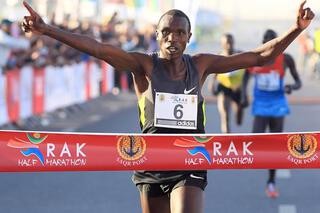
In particular, Kandie is wary of the threat posed by Ugandan Kiplimo who he trounced at the Valencia Marathon in December on his way to setting a new world record of 57:32.
Before that, Kiplimo had beaten Kandie to the finish line at the World Half Marathon Championship in Gdynia, Poland in October to claim the crown.
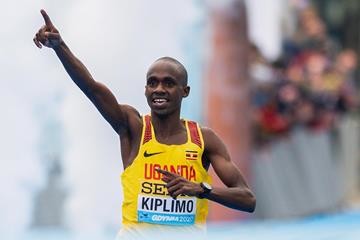
"Of course I know the thought of revenge has crossed his mind. I know he badly wants to win against me but I will try my best to stop that from happening. Kamworor's entry has further muddied the waters but all is well; it is such competitions that build you into a strong athlete," he said.
Before docking in the United Arab Emirates for RAK Half Marathon, however, Kandie will first have to battle with fellow military athletes for top honours in this Friday's Kenya Defence Forces Cross Country Championships at the Moi Air Base in Eastleigh, Nairobi.
"The championships will be a test of my preparedness for the major international competitions because there is not much difference between the KDF Cross Country event and the international ones. The competition this Friday will be as tough as that of international events," he said.
Kandie has also revealed he will resume intense training for the 10,000m race in which he plans to compete at the Tokyo Olympics. After the Olympics, he will be targeting one of the major marathons sometime in November.
For Kamworor, the RAK Half Marathon represents a comeback opportunity having spent last year on the sidelines after a motorbike accident in June. In 2019, he set a half marathon world record of 58:01 at the Copenhagen Half Marathon.
The A-list for the men's race also includes Ethiopian Shura Kitata, who upstaged the odds to trounce world marathon record holder Eliud Kipchoge to the London Marathon title.
It will be similarly battle royale in the women's division as World 5,000m champion Hellen Obiri faces off against world marathon record holder and compatriot Brigid Kosgei. The RAK Half Marathon will be staged on February 19 after registration closes on January 31.
(01/27/2021) ⚡AMPby Omondi Onyatta
Rak Half Marathon
The Ras Al Khaimah Half Marathon is the 'world's fastest half marathon' because if you take the top 10 fastest times recorded in RAK for men (and the same for women) and find the average (for each) and then do the same with the top ten fastest recorded times across all races (you can reference the IAAF for this), the...
more...2021 Boston Marathon rescheduled for October 11
October 11 has been announced as the date for this year's Boston Marathon - should the health situation allow for the race to take place.
The Boston Marathon is usually held on the third Monday of April, but that was deemed impossible this year because of the coronavirus pandemic.
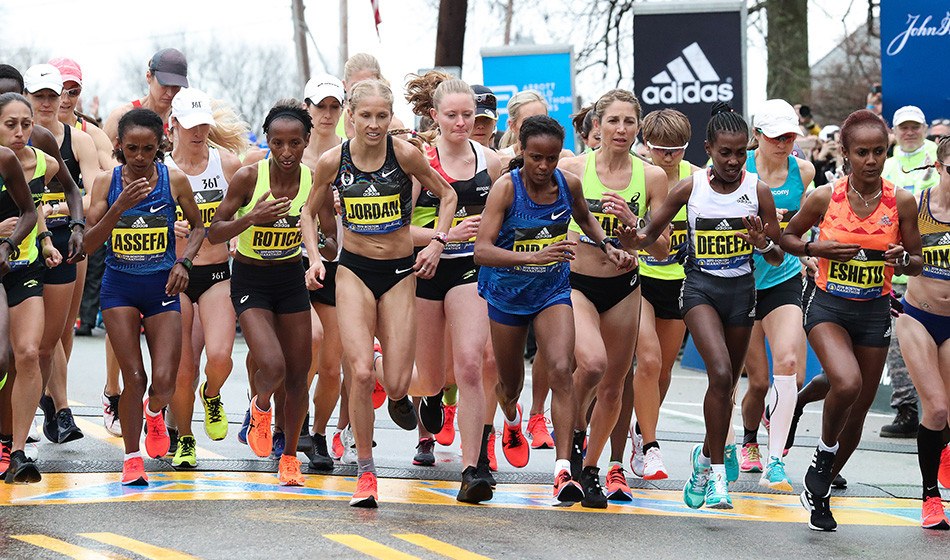
Organisers the Boston Athletic Association (BAA) had previously said that the race would not go ahead "at least the fall of 2021", and October 11 has now been chosen as the new date.
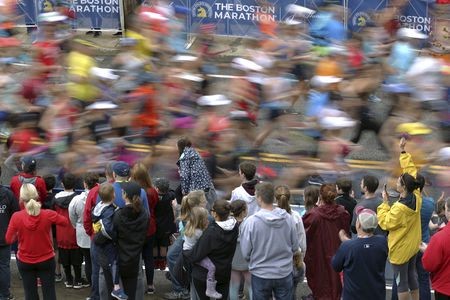
That is one day after the Chicago Marathon.
Should road races not be permitted by then, it appears likely that the 2021 Boston Marathon would be cancelled, as the 2020 edition was.
That was the first cancellation in the event's 124-year history.
"We announce the 2021 Boston Marathon date with a cautious optimism, understanding full well that we will continue to be guided by science and our continued collaborative work with local, city, state, and public health officials," said BAA President and chief executive Tom Grilk.
"If we are able to hold an in-person race in October, the safety of participants, volunteers, spectators, and community members will be paramount."
Massachusetts must reach Phase 4 of its re-opening plan for road races to be permitted.
It is presently in the first stage of Phase 3.
The Boston Marathon is one of the six World Marathon Majors.
Four were cancelled last year - Boston, New York, Chicago and Berlin - while the London Marathon was an elite-online event moved to a loop course in a park and the Tokyo Marathon's mass-participation race was scrapped.
This year's London and Tokyo races have both been moved to October already, while the Chicago Marathon is usually in October.
The six World Marathon Majors are now timetabled for a six-week span, making it difficult for many if any elite runners to take part in more than one.
All six are now scheduled to follow the Tokyo 2020 Olympics also.
The 2021 Boston Marathon is set to be the 125th edition of the race, and organisers say a virtual race option is planned as well as the in-person contest.
Massachusetts must reach Phase 4 of its re-opening plan for road races to be permitted.
It is presently in the first stage of Phase 3.
The Boston Marathon is one of the six World Marathon Majors.
Four were cancelled last year - Boston, New York, Chicago and Berlin - while the London Marathon was an elite-online event moved to a loop course in a park and the Tokyo Marathon's mass-participation race was scrapped.
This year's London and Tokyo races have both been moved to October already, while the Chicago Marathon is usually in October.
The six World Marathon Majors are now timetabled for a six-week span, making it difficult for many if any elite runners to take part in more than one.
All six are now scheduled to follow the Tokyo 2020 Olympics also.
The 2021 Boston Marathon is set to be the 125th edition of the race, and organisers say a virtual race option is planned as well as the in-person contest.
(01/27/2021) ⚡AMPby Ali Iveson
Boston Marathon
Among the nation’s oldest athletic clubs, the B.A.A. was established in 1887, and, in 1896, more than half of the U.S. Olympic Team at the first modern games was composed of B.A.A. club members. The Olympic Games provided the inspiration for the first Boston Marathon, which culminated the B.A.A. Games on April 19, 1897. John J. McDermott emerged from a...
more...5000m champion Hellen Obiri added to Ras Al Khaimah Half Marathon line-up
Obiri, who won world titles at 5000m and cross country in 2019, will be making her half marathon debut. The Kenyan has limited road running experience, but her few outings to date have been promising; she clocked 29:59 for 10km on Madrid’s downhill course at the end of 2018.
World half marathon silver medallist Melat Kejeta of Germany and world marathon bronze medallist Helalia Johannes are the other recent top additions to the field, and they will face a formidable line-up of stars, as previously announced by the organisers.
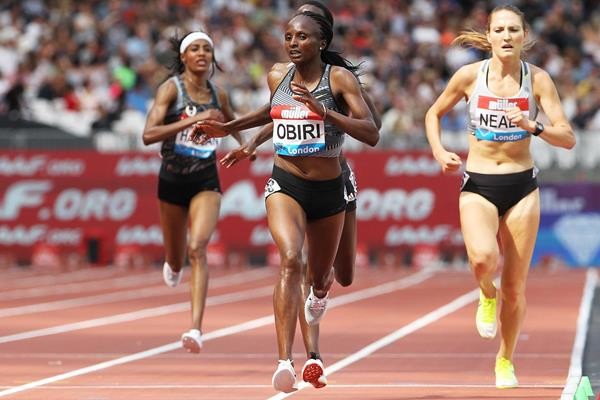
World marathon champion Ruth Chepngetich, who recently set a half marathon PB of 1:05:06, will make her Ras Al Khaimah debut. Peres Jepchirchir, who won the world half marathon title last October in a women-only world record of 1:05:16, will return to the scene of her 2017 triumph when she set a world record of 1:05:06.
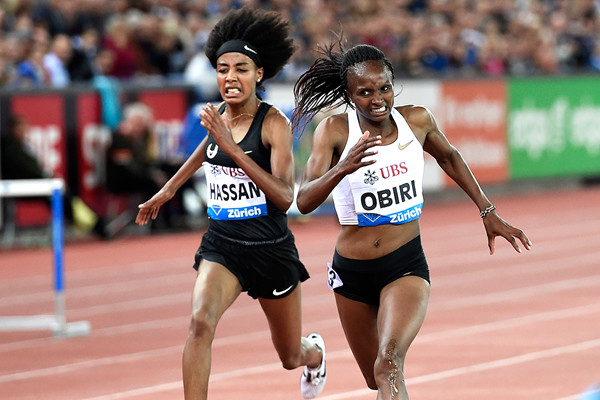
The three fastest women in history – world record-holder Ababel Yeshaneh, Ethiopia’s Yalemzerf Yehualaw and marathon world record-holder Brigid Kosgei – will also line up in Ras Al Khaimah.
Yeshaneh and Kosgei have clashed twice to date, both races resulting in world records. Their first duel came at the 2019 Chicago Marathon, which Kosgei won in a world record of 2:14:04 while Yeshaneh placed second in 2:20:51. Just four months later, Yeshaneh levelled the score by winning in Ras Al Khaimah in a world record of 1:04:31. Kosgei was runner-up in 1:04:49, the second-fastest time in history.
Yehualaw, meanwhile, finished third at the recent World Athletics Half Marathon Championships in Gdynia, just a few seconds behind Jepchirchir. Six weeks later, she won the New Delhi Half Marathon in 1:04:46, the second-fastest time in history.
USA’s Sara Hall, who placed second at this year’s London Marathon, and South Africa’s Gerda Steyn are also in the field.
(01/26/2021) ⚡AMPby World Athletics
Rak Half Marathon
The Ras Al Khaimah Half Marathon is the 'world's fastest half marathon' because if you take the top 10 fastest times recorded in RAK for men (and the same for women) and find the average (for each) and then do the same with the top ten fastest recorded times across all races (you can reference the IAAF for this), the...
more...2021 Cellcom Green Bay Marathon will be held virtually due to COVID-19, for second year in a row
For the second year in a row, the Cellcom Green Bay Marathon will be held virtually because of the coronavirus pandemic.
When the decision was made to not hold the event in-person, a new question was on the table.
"What can we do to help our community and help?" said Alissa Cotter, race director. "In particular, the people who are suffering the most right now from the pandemic?"
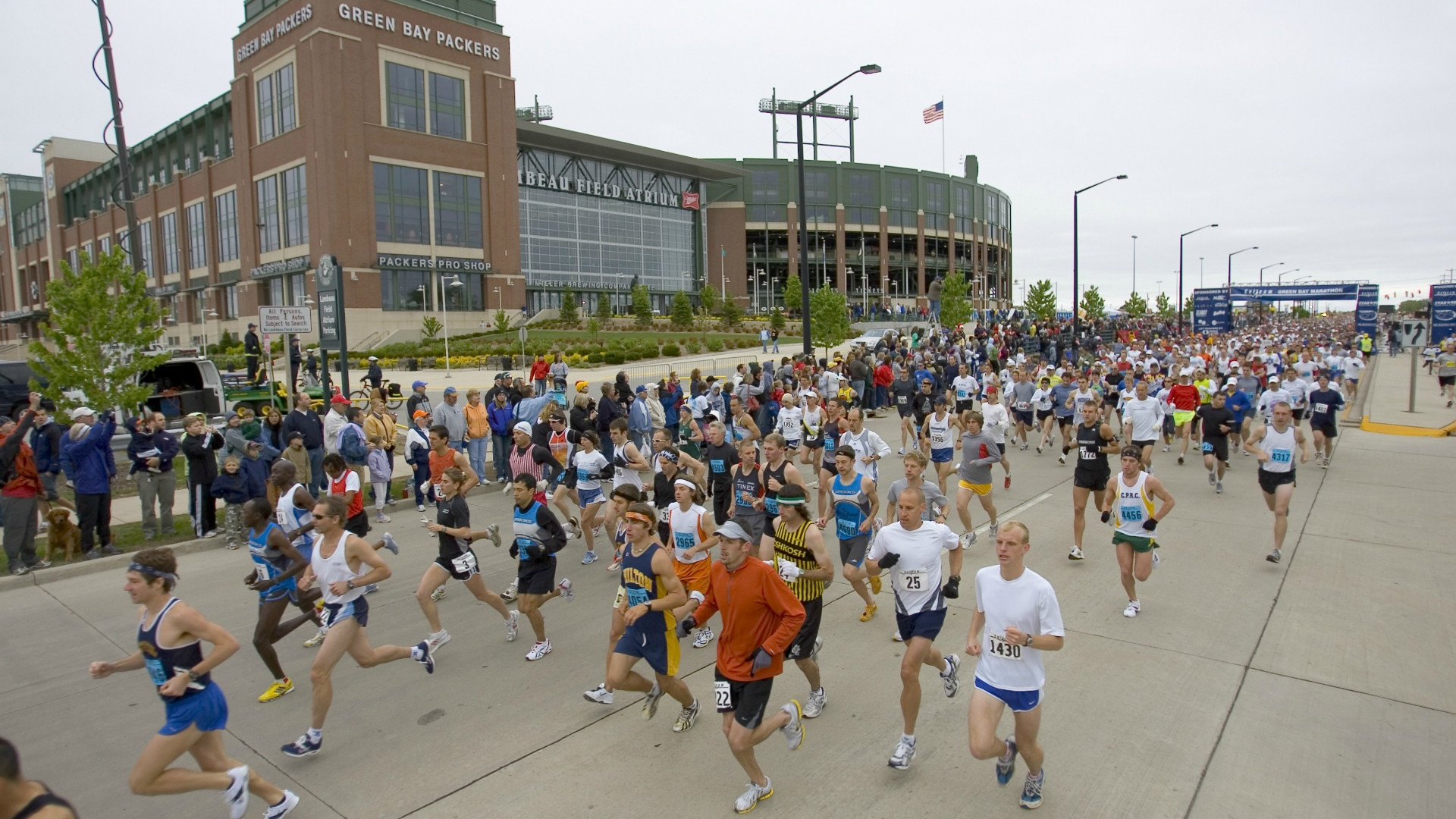
That question led to a decision to focus fundraising for the 22nd marathon on COVID-19 relief.
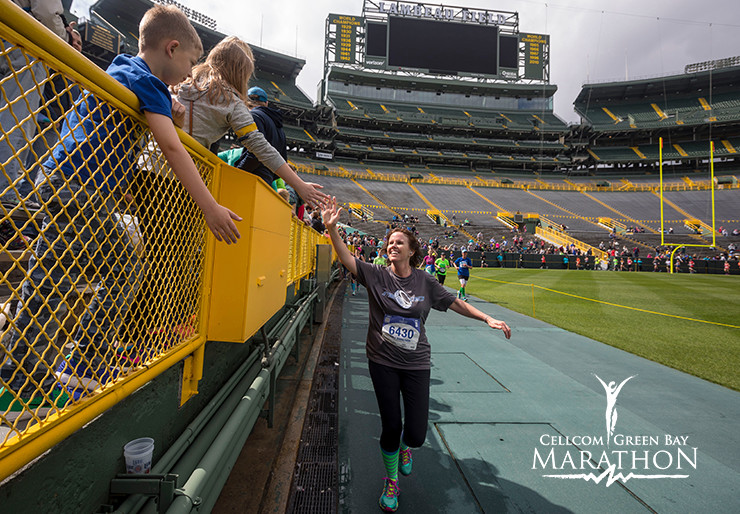
Proceeds from this marathon will go to local charities supporting those who have struggled the most during the pandemic.
In all, the marathon will share proceeds with seven organizations: Casa ALBA Melanie, New Community Shelter, Onedia Nation Emergency Food Pantry, Paul's Pantry, Russell Leicht DAV Chapter 3, St. John the Evangelist Homeless Shelter, Inc. and The Gathering Place.
"(The funds will) be used to keep our mental health services going," said Michael Roberts, executive director at The Gathering Place, a non-profit that provides support groups and other services to those struggling with mental health and addiction.
The virtual marathon will take place during the month of May and will include the familiar options for runners of registering for a marathon, half marathon, relay or 5K. Participants can choose which day during the month to run. Additionally, the marathon will now offer a 100 Miles in May Challenge that encourages runners, walkers and cyclists to travel 100 miles during the month.
"It was gut wrenching to make the decision to convert to virtual," Cotter said of the 2020 marathon. "It was so hard, there's so much time and energy and this is just a huge labor of love for the people who are involved in it. We work so hard and the end result is of course, race weekend."
Cotter added that in June, she fully expected the 2021 race to be in-person. However, by early fall her hopes were waning as the coronavirus showed no sign of letting up. Ultimately, the decision was made to hold this year's marathon virtually.
(01/26/2021) ⚡AMPby Alexandria Bursiek Kloehn
Cellcom Green Bay Marathon
The Cellcom Green Bay Marathon and Half Marathon courses are considered to be fast and flat, by race industry comparisons. The courses finish with a “tailgate” themed party in the Lambeau Field parking lot! The marathon starts in front of Lambeau Field and pass along tree-lined streets in west Green Bay and the village of Ashwaubenon. Then the marathoners head...
more...Mo Farah believes the Olympic Games will go ahead this summer and claims athletes have been told they will get Covid vaccines
Farah, who has won gold in both the 5,000 and 10,000 meters at the last two Games in London and Rio, has previously said he is targeting success in the longer distance only in Tokyo.
However, the Games are again under threat from the coronavirus pandemic, which were originally postponed by 12 months in March last year.
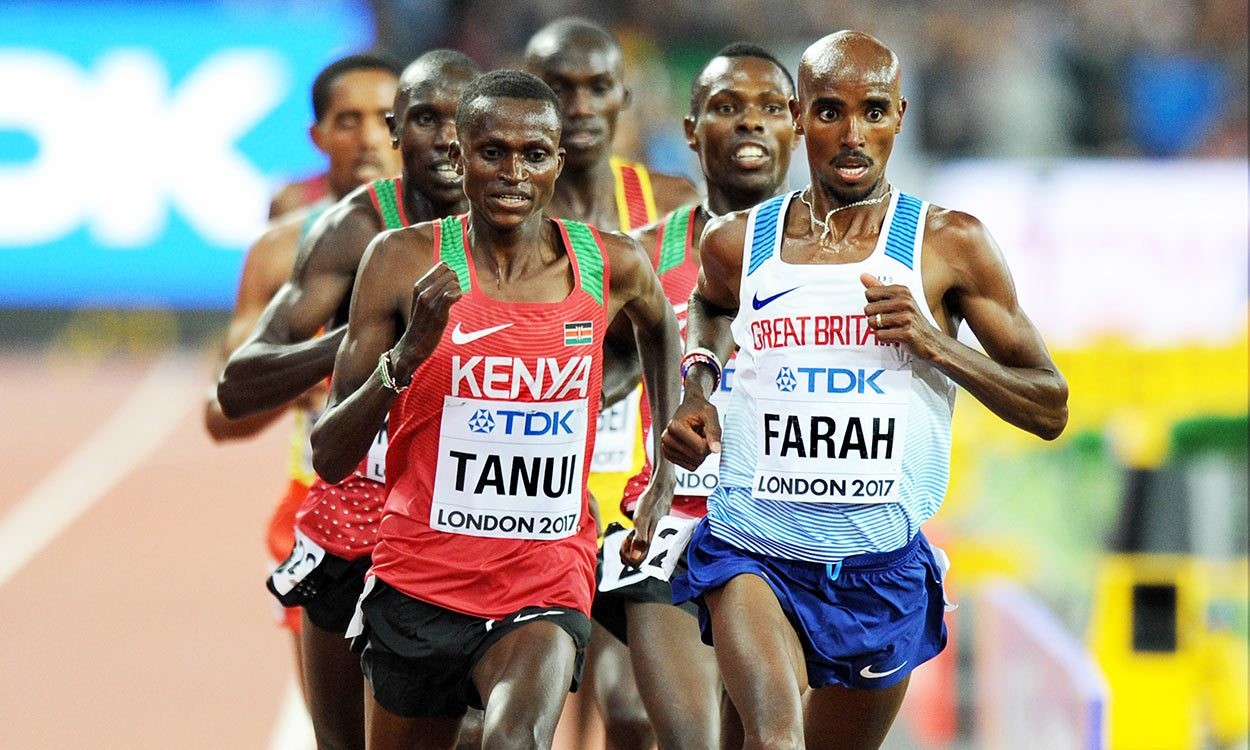
The idea of vaccinating athletes has been floated by International Olympic Committee member Dick Pound, and Farah told TalkSsport: “I think most people in a career want to go to an Olympics and take part in an Olympics. The key thing is to stay safe and see what the country can do.
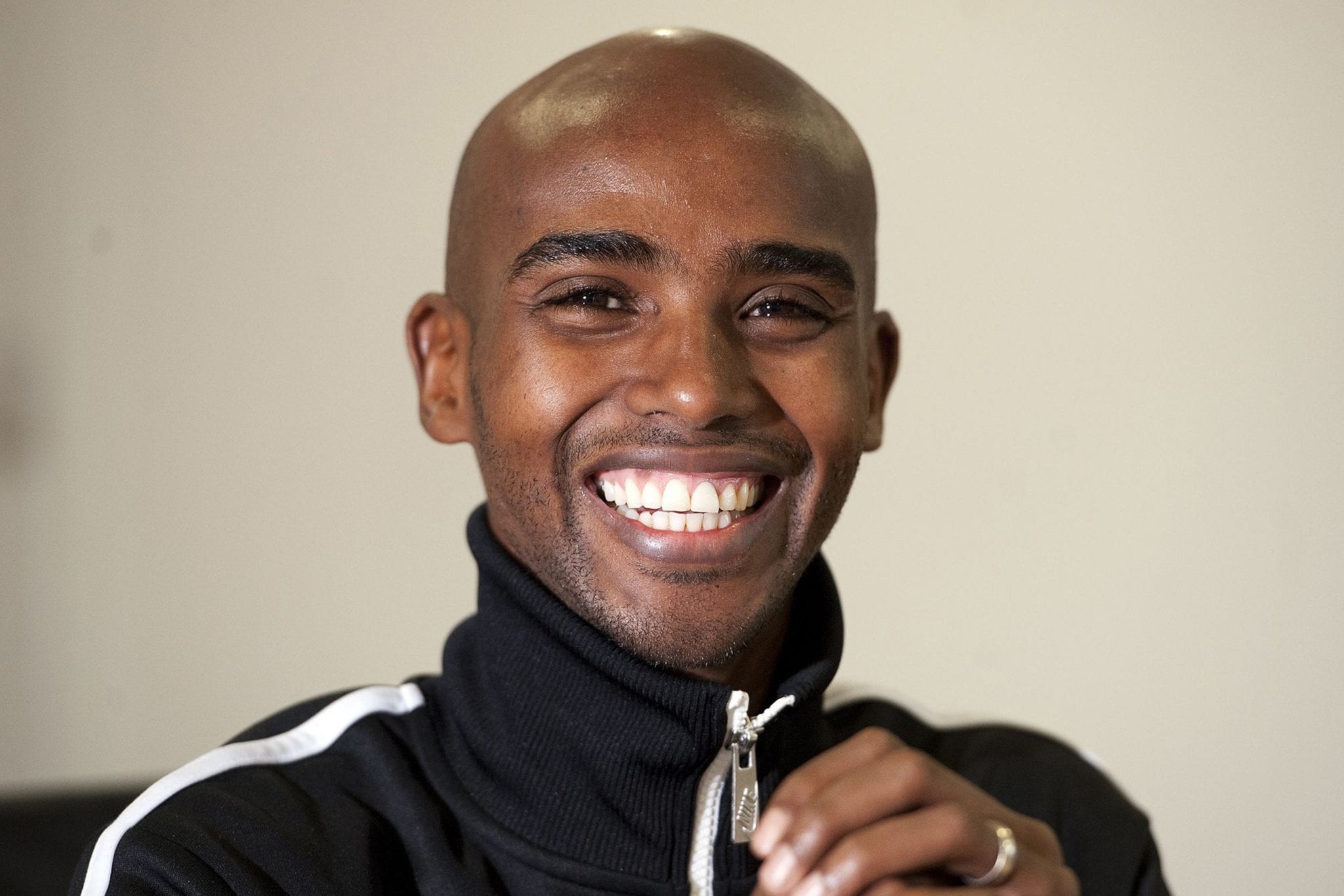
What they have said to us is basically everyone will be able to get Covid injections and after that it’s less risk of spreading the disease, and then from there just see what happens and take one day at a time.
“I think [the Games] will go ahead but at the same time, for me I have had the experience of taking part in three Olympics and I have to see it as another race and see what happens.”
It is understood the British Olympic Association is not involved in any active conversations with the government in regard to vaccinating athletes, and its chief executive Andy Anson said earlier this month: “The priority has to be the people who need it most – frontline workers, the elderly and the vulnerable.
“There will come a time, hopefully ahead of the Olympic Games when the athletes can be considered for vaccination, but we’ll only do that when it’s appropriate.”
IOC president Thomas Bach has previously said there is “no reason whatsoever” to further delay the Games, which are due to start on 23 July.
(01/26/2021) ⚡AMPby The Guardian
Tokyo 2020 Olympic Games
Fifty-six years after having organized the Olympic Games, the Japanese capital will be hosting a Summer edition for the second time, originally scheduled from July 24 to August 9, 2020, the games were postponed due to coronavirus outbreak, the postponed Tokyo Olympics will be held from July 23 to August 8 in 2021, according to the International Olympic Committee decision. ...
more...Half marathon world record holder, Geoffrey Kamworor is back after injury lay-off
Geoffrey Kamworor, a former world half marathon champion and half marathon world record holder, has announced his return to after a one-year break.
The 28-year-old Kamworor, who last competed at the National Cross Country Championships on February 15 last year, has joined a rich field heading for the Ras Al Khaimah (RAK) Half Marathon due on February 19 in the United Arab Emirates.
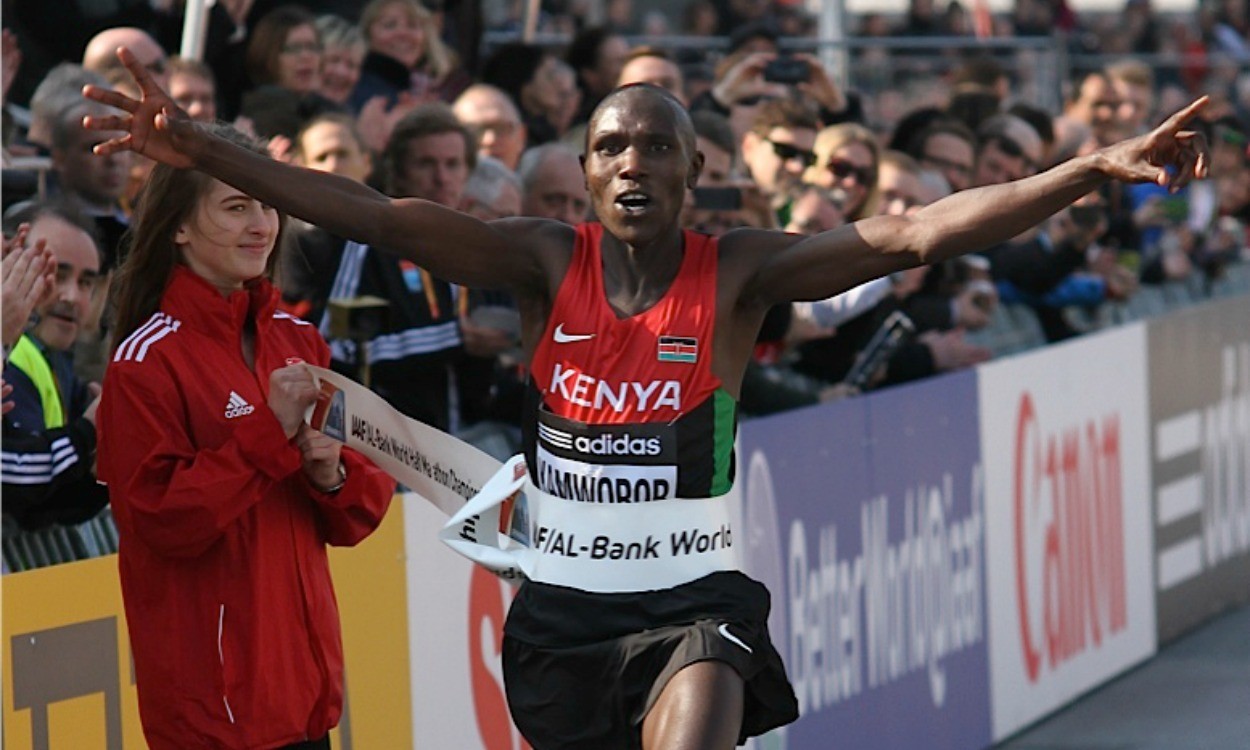
Kamworor, who has won the world half marathon title thrice in 2014, 2016 and 2018, has fully recovered from injuries sustained in a freak accident on June 25 last year in Eldoret.
Kamworor was hit from behind by a speeding motorcycle, sustaining injuries on his head and above the ankle and had to be operated on at St Luke's Hospital in Eldoret.
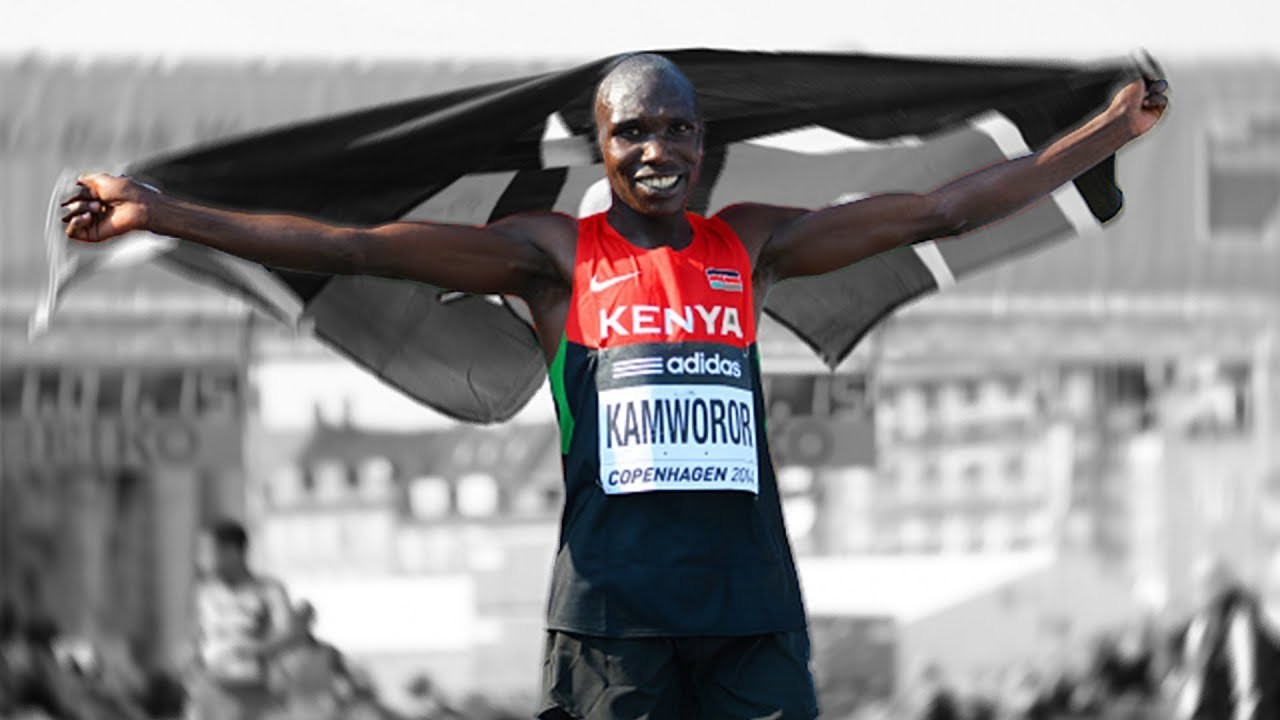
“It's time to race again!” said Kamworor on his Facebook page.
“After months of working hard to recover from my injury, I'm very excited to be on the starting line again in RAK to get my season going.”
The accident saw Kamworor, who won the RAK Half Marathon in 2013, fail to defend his world half marathon title on October 17 last year.
Uganda’s Jacob Kiplimo cashed in on Kamworor’s absence to win in a Championship Record (CR) time of 58:49.
Kenya’s Kibiwott Kandie settled for silver also inside the CR time in 58:54 as Amedework Walelegn from Ethiopia went for bronze in 59:08.
Kamworor held the previous CR of 59:08 set when winning the 2014 race.
Kamworor has also had his half marathon world record being snapped by compatriot Kibiwott Kandie, who claimed the Valencia Half Marathon victory in 57:32 on December 6, becoming the first man to run a half marathon under 58 minutes.
The field in RAK looks sumptuous with Kamworor joining Kandie, who is the defending champion, and Kiplimo, the world half marathon champion, and 2017 and 2018 RAK champion Bedan Karoki.
(01/26/2021) ⚡AMPby Ayumba Ayodi
Rak Half Marathon
The Ras Al Khaimah Half Marathon is the 'world's fastest half marathon' because if you take the top 10 fastest times recorded in RAK for men (and the same for women) and find the average (for each) and then do the same with the top ten fastest recorded times across all races (you can reference the IAAF for this), the...
more...Cancellation of Olympics in 2021 Would Result in Estimated $43.5 Billion Loss
After being postponed for a year, there are just six months to go until the start of the Tokyo Olympics. The coronavirus continues to spread, and with no signs of it slowing down the possibility of the worst case scenario, the Olympics' cancelation, has become more than just a possibility. Kansai University professor emeritus Katsuhiro Miyamoto, 76, has estimated that the cancelation of the Games would result in an economic loss of over 4.5 trillion yen [$43.5 billion USD].
The one-year postponement from last year has already resulted in a 640.8 billion yen loss [46.2 billion USD]. Should the Games go ahead? Another postponement? Cancel them? There is also the option being explored by the Organizing Committee of staging the Olympics without spectators.
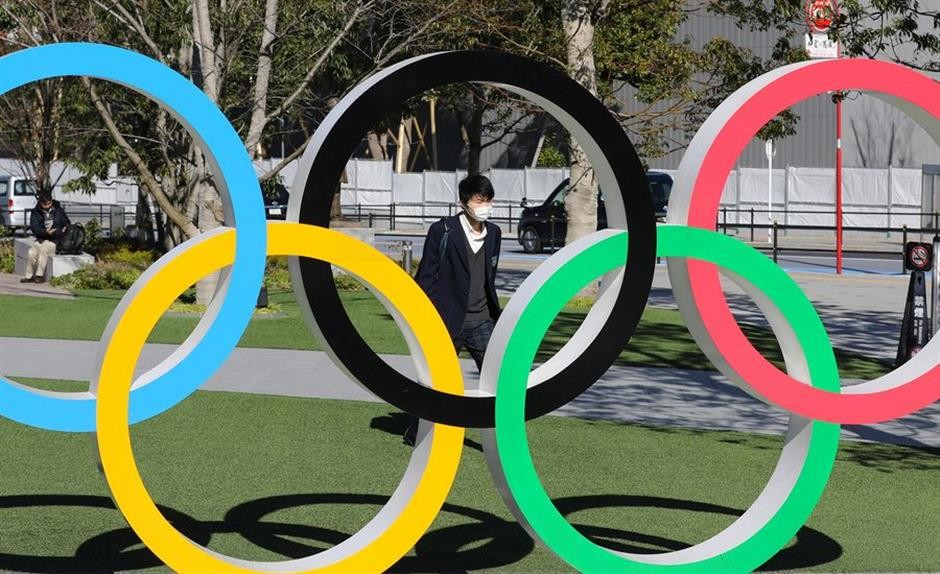
Government sources say that with the loss that another postponement would incur to local governments, it is not a realistic option. Tokyo has projected a direct economic effect of over 5.2 trillion yen [$49.4 billion USD[ in building and maintenance of facilities and infrastructure to put on the Games. Professor Miyamoto estimates that the loss of revenue from operating expenses, participants' consumption, domestic consumption and the like that would follow a cancelation of the Olympics would result in a loss of just under 3.5 trillion yen [$33.4 billion USD].

Another 1 trillion yen [$10.1 billion USD] would disappear as the result of the loss of the legacy effect of post-Olympic facility usage, education and urban development, bringing the total loss from a complete cancelation to over 4.5 trillion yen [$43.5 billion USD]. This would be equivalent to about 1% of Japan's gross domestic product, roughly on the scale of the 4.2 trillion yen [$40.5 billion USD] spent at all department stores nationwide last year. "On top of the coronavirus, cancelation would be another serious hit to the economy," commented Professor Miyamoto.
If the Games do go ahead, they face a rough road forward. The event would all but definitely be downsized, with the likelihood high that events would be closed to spectators. According to preliminary calculations, halving the number of spectators and cutting back the opening and closing ceremonies would still result in a loss of almost 1.4 trillion yen [$13.4 billion USD[. Staging it without any spectators would bring the loss to over 2.4 trillion yen [$23.3 billion USD]. "The Olympics should go ahead even without spectators, but how other countries hit hard by the coronavirus would be able to deal with the situation remains unclear," said Professor Miyamoto. "If the International Olympic Committee made the decision to cancel the Games, the economic and political fallout would be extremely severe."
In preparation for the Tokyo Olympics, 42 venues in 9 prefectures have almost been completed along with investment in accommodations, road improvement and other infrastructure by local governments. "80% of the economic spillover occurs prior to the Games," commented Professor Miyamoto. A private research institute in the U.K. claimed that the 2012 London Olympics resulted in an economic spillover effect of around 2 trillion yen [$19.3 bilion USD], with 82% of the effect coming before the Games opened.
If the Tokyo Olympics were canceled, the value of properties such as the main stadium built for the Games would be significantly reduced by not being able to apply the "Olympic" brand name to them. There is concern about additional losses to the financial burden of maintaining them under those circumstances. "The investment in preparations has already been made and they are all but completed," said Professor Miyamoto. "If the Olympics were canceled it would have a tremendous impact on consumer sentiment, and the value of the Olympic Village and other facilities would be significantly reduced."
(01/25/2021) ⚡AMPby Brett Larner
Tokyo 2020 Olympic Games
Fifty-six years after having organized the Olympic Games, the Japanese capital will be hosting a Summer edition for the second time, originally scheduled from July 24 to August 9, 2020, the games were postponed due to coronavirus outbreak, the postponed Tokyo Olympics will be held from July 23 to August 8 in 2021, according to the International Olympic Committee decision. ...
more...Ziyah Holman drops 51-second 400m split for incredible relay comeback
Last weekend, the University of Michigan hosted an indoor track meet in Ann Arbor. In the women’s 4 x 400m relay, the Michigan squad was well back of the lead heading into the final leg. That was when Ziyah Holman, a freshman who was anchoring for her team, threw down an incredible couple of laps to steal the win for her school.
Holman dropped a 51.79 400m split, overcoming a four-second deficit to win in the final stretch and turn her into a viral sensation.

Despite the massive gap between Holman and her competitors, she set off at a blistering pace to chase them down. By the end of her first 200m lap (which she ran in 25.029 seconds), Holman had caught the runner from second-place Ohio State, but she still had a lot of ground to make up if she wanted to catch Indiana’s anchor, who was a couple of seconds ahead.
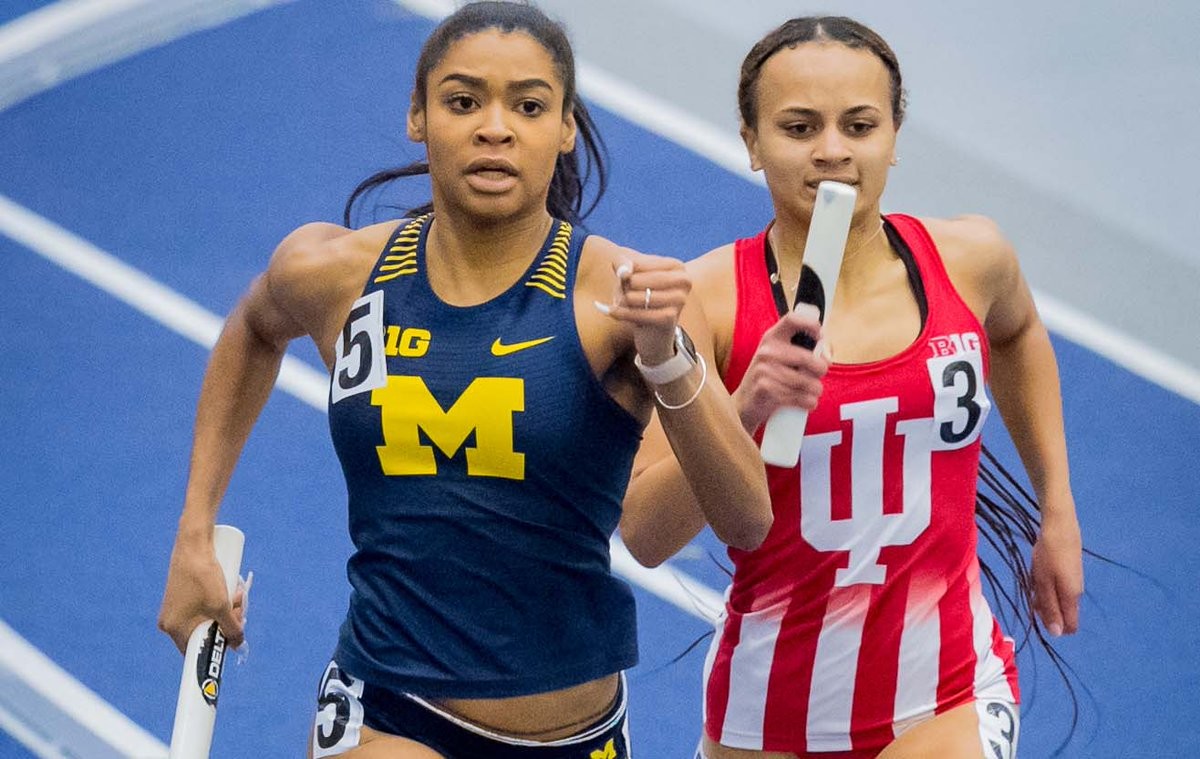
Holman posted a second 200m split of 26.758 seconds, leading her past the Indiana runner in the final straightaway and across the line for the relay win in a time of 3:48.013. In the span of less than a minute and just 400m of running, Holman carried her team from third (and last) place, four seconds back of the lead, to the win, crossing the line with a comfortable gap of about half a second for what is one of the best comebacks the track world has seen in recent years.
Not a fluke
Holman´s big performance in the 4 x 400m is nothing new. Earlier that same day, she won the 600m by four full seconds, stopping the clock in a PB of 1:29.27. In 2019, she helped the American 4 x 400m team to a gold medal and U20 world record at the Pan American U20 Championships in Costa Rica, where they ran 3:24.04. Finally, more recently, Holman beat her 600m PB from last weekend, running 1:28.08 at a meet in Indiana on Saturday to set a Michigan school record.
(01/25/2021) ⚡AMPby Ben Snider-McGrath
Kenyan Daniel Simiu turned into a long distance star when he decided running away from bandits
A 24-kilometer walk to school in neighbouring Laikipia also helped build his career.
For nearly three years since joining the elite ranks in athletics, his name has remained the most confusing one.
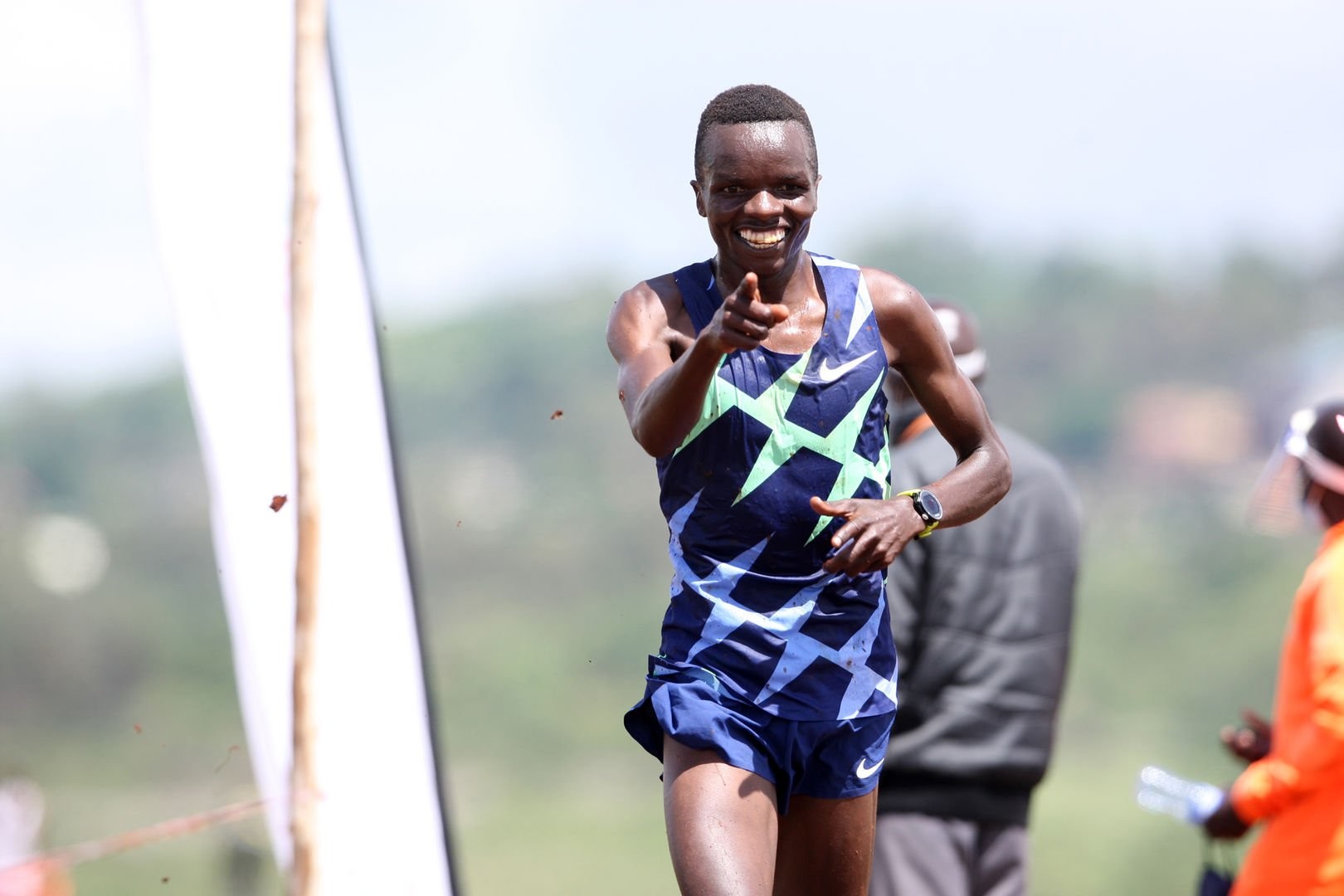
The confusion in his name is however not as scary as the mention of his origin, which is in an area described as one of Kenya’s most dangerous places to live in due to armed conflict.
Is he Simiu or Simiyu? That’s the confusion athletics fans and sports journalists have been treated to as they struggle to understand an Iten-based track and cross country racer who missed the opportunity to represent Kenya in 5,000m at the 2019 world championships in Doha, Qatar.
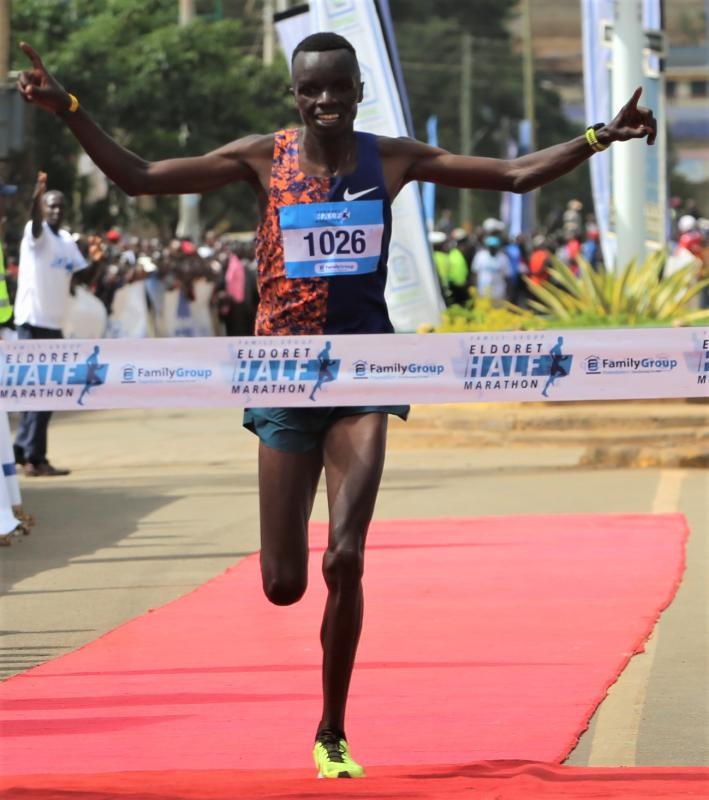
Daniel Simiu Ebenyo, 25, shot to fame after powering to a second place at the national World championships trials.
Even Athletics Kenya race officials have been misspelling his name, recording it as Simiyu – a name that is common among the Luhya tribe of Western Kenya. The confusion about his name aside; who is this man Simiu?
In Iten where he trains, he can walk to town and enjoy a cup of hot tea in the evening without attracting any attention, unlike big names including four-time London Marathon champion Mary Keitany, two-time world champion Edna Kiplagat and multiple world marathon major champion Wilson Kipsang among others.
Simiu’s athletics career started in the volatile Baragoi, Samburu County where he ran away from dreaded cattle rustlers at a young age and turned him from a footballer to a runner.
For many years, Baragoi has been synonymous with deadly banditry attacks, but surprisingly birthed Simiu’s athletics talent.
“A mention of Baragoi scares many people, but that is where I was born and grew up. It is the place I call home,” he said.
“As for the name Simiyu, I just got used to it. Some fans and athletes have asked why I can’t represent Western Kenya in local competitions. The good thing is that many people are getting to know me. What they don’t know is that I come from Samburu.”
He says it was while at Aiyam Day secondary school when a 24km trek to the learning institution and back home would make him an athlete.
Walking to school early in the morning and back in the evening, he explains, was the most dangerous journey, since they crossed bandits’ battle grounds along the narrow paths to the institution.
He says because of the long trek to school, which started at 5.30am he became an athlete by default.
Simiu was expected to be in school but teachers who knew the distance from his home to the institution gave him a 30-minute allowance, and he would arrive at 8am.
“It is while in secondary school that I developed interest in athletics. It started as inter-dormitory competitions and I discovered I was good. I also represented my school but I only reached the regional level. My games teacher Maurice Osuma spotted the talent and encouraged me to train harder,” he explains.
He says the distance to Aiyam secondary school would often become longer during moments when bandits were battling along the way.
“I would be forced to take a longer route to escape being attacked by rustlers. It meant increasing my pace to reach school on time,” he recalls.
He never wasted time. In 2016, upon completing his secondary school education, Simiu travelled more than 400km to Iten to train. His elder sister Pauline Eskon, a road runner had come to Iten earlier and she welcomed him when he arrived in the famous high altitude training base.
Simiu who is in top form this season has his sights on a second attempt to represent Kenya in 5,000m at the Olympic Games.
(01/25/2021) ⚡AMPby Stephen Rutto
Sebastian Coe says, Olympic Games not just financial, it's spiritual
The president of World Athletics says he is concerned for the wellbeing of athletes as they prepare for the delayed Tokyo Olympic Games amid the "rumours" of cancellation.
Lord Sebastian Coe, who is also a current IOC member and former UK member of Parliament, said he would not buy into any discussion around a political divide in Japan after London's Times newspaper reported Tokyo was looking for a way out of hosting the Games.

"As a former politician I'm long enough in the tooth to know you don't actually ever comment about the politics of someone else's country," Lord Coe told The Ticket.
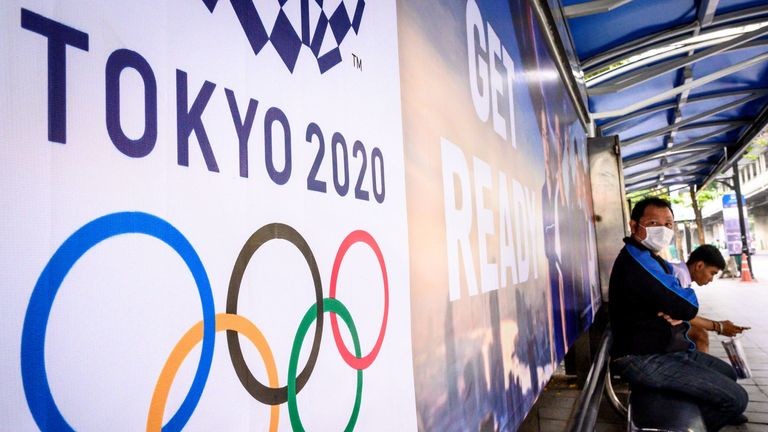
"And I certainly don't want to get into the well-worn fragilities of a coalition government."
Japanese Prime Minister Yoshihide Suga issued a statement on Friday saying the Government and "all our delivery partners" would continue "to make every effort to prepare for a safe and secure Games", and Lord Coe says that is where the focus should be.
"I think the most important thing that I've witnessed in the last few hours, given the nature of that story, is it was immediately knocked down by the Japanese Prime Minister," he said.
"It's probably better for athletes, who I do have concerns about, that they're not swept along from rumour to rumour and losing focus on what they need to really focus on."
The cost of organising the Games has ballooned to more than $20 billion.
Cancellation would not only mean that money — mostly Government funding with some private investment — is sunk, but the IOC's major funding source would also evaporate.
Of course we want the Games but not just for the financial reasons.
"No sport wants to go indefinitely without those big global showcase moments where the world can see, in our case, the most God-given talented athletes on the planet.
Everybody is scenario planning … we're all two-speed organisations at the moment — or should be.
"It's not just financial, I think it is also spiritual — the world needs sport."
"I think we have a responsibility across the sporting landscape to reassure the people of Japan who have shown remarkable resilience.
"I wake up grateful each morning that it is Japan dealing with this challenge and not some parts of the world I could think of."
Above all, Lord Coe remains confident the Tokyo Games will go ahead.
(01/25/2021) ⚡AMPby Tracey Holmes
Tokyo 2020 Olympic Games
Fifty-six years after having organized the Olympic Games, the Japanese capital will be hosting a Summer edition for the second time, originally scheduled from July 24 to August 9, 2020, the games were postponed due to coronavirus outbreak, the postponed Tokyo Olympics will be held from July 23 to August 8 in 2021, according to the International Olympic Committee decision. ...
more...Why And How To Run Strides To Improve Speed On The Trails
If you look at hundreds of elite athlete training logs, short, fast "strides" will be a close-to-universal element. There is variance in timing of strides, distribution throughout the year, speed and duration, but you'll rarely see an athlete exploring the top of their performance potential without them.
That's weird, right? How can running quickly for 30 seconds or less have much relevance for events from 30 minutes to 30 hours? The answer likely lies in how adaptation happens in the interaction between cells and systems of our muscles and bones and capillaries, applied via biomechanics and the nervous system.
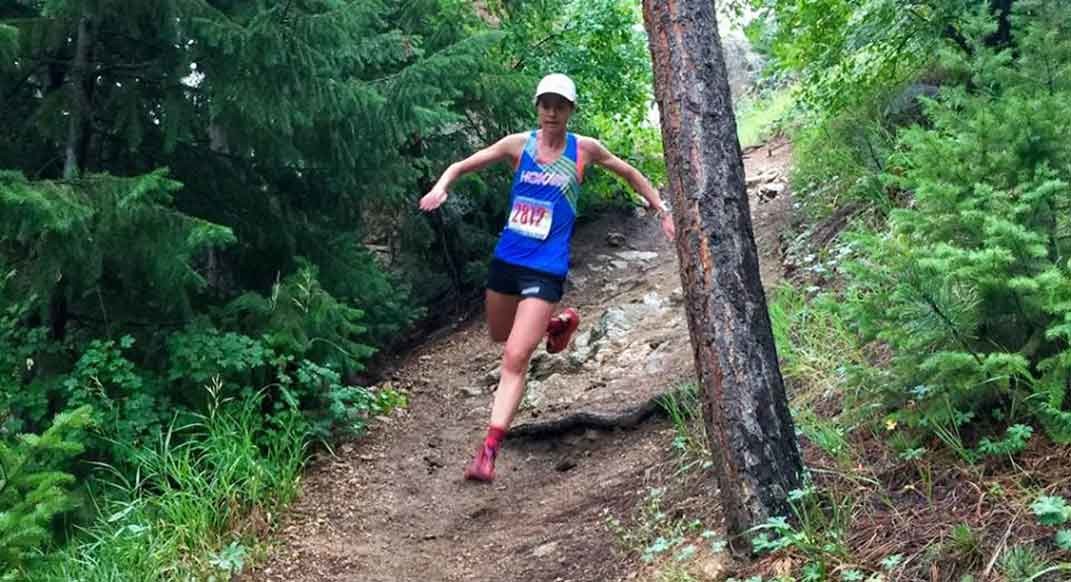
A flow chart that diagrams adaptation would have thousands of arrows, and even then would be simplifying complex processes that often cannot be measured directly. In other words, adaptation is a lot like the lottery for entry into the Hardrock 100. For endurance runners thinking about their own training in an applied, practical sense, I like to break it down to four component parts that work in tandem: the aerobic system, the musculoskeletal system, the biomechanical system and the neuromuscular system.
Systems Overview
The aerobic system powers working muscles via the heart, lungs, and circulatory elements like capillaries. The musculoskeletal system absorbs and transmits power during activity. The biomechanical system describes the efficiency of that power absorption and transmission via movement patterns. And the neuromuscular system is how the brain and nervous system put it all together. Each of those elements has countless component parts, and each feeds back on one another over time.
The problem is that it's tempting to prioritize the aerobic system and musculoskeletal system above all else, using total effort or stress as a proxy for the value of training. That model views runners as "lungs with legs," and it risks missing some of the complex feedback cycles that fall between a breath of oxygen-rich air and running speed on a road or trail.
While there is no 100-percent proven reason that strides work, their importance is likely related to the complex interplay of those elements that go into long-term adaptation. Aerobically, short strides could improve cardiac output, but that benefit is likely minimal. Musculoskeletally, they stress output-per-stride, requiring muscles to maximize efficient power output. There are even theories that strides could positively alter protein expression in slow-twitch muscle fibers, and that underscores the idea that all of these adaptation processes likely have immensely complex explanations. Biomechanically and neuromuscularly, the mix of higher cadence, lower ground contact time, and maximized power could help optimize form and power transfer, along with complex pathways involved in how the brain makes it all possible. If I say "complex" one more time, I complete my punch card that entitles me to a free six-inch sub.
Feeding back development of max sustainable output via strides and similar efforts into normal sub-max training consisting of easy efforts and workouts can raise the ceiling on both. And that's how an athlete can have long-term breakthroughs to previously unthinkable levels.
To simplify it a bunch, an athlete usually will be within a certain percentage range of their short stride speed in longer events. That range is variable and based on a number of individual-specific factors (i.e. muscle fiber distribution, sex, athletic background) and my co-coach/wife Megan and I went into more details in our book and podcast. But the big takeaway is this: maximum sustainable output (sometimes called "speed endurance," though that term means many different things depending on where you look) is often loosely connected to sub-max sustainable output (velocity or power at lactate threshold or harder and aerobic threshold or easier).
Feeding back development of max sustainable output via strides and similar efforts into normal sub-max training consisting of easy efforts and workouts can raise the ceiling on both. And that's how an athlete can have long-term breakthroughs to previously unthinkable levels.
Applied Studies
Many studies support the empirical framework seen in elite-athlete training. A 2018 study in Physiology Reports had 20 trained athletes do 10 sessions of 5 to 10 x 30 seconds fast in a 40-day training cycle where total training volume was reduced by 36 percent. After the intervention, 10K performance improved by 3.2 percent. Perhaps most interestingly, VO2 max didn't change at all (and it actually had a non-significant decrease). Instead, the athletes improved by two percent in their velocity at VO2 max.
In other words, their aerobic systems had not improved, they were just going faster with the oxygen they had. The progress was based in some combination of their musculoskeletal, biomechanical and neuromuscular systems. If you want to get to know me better, I enjoy long walks on the beach and that Physiology Reports study.
A 2017 study in the Journal of Strength and Conditioning Research similarly took 16 trained trail runners and had them complete two weeks of 4 to 7 x 30 seconds hard with 4 minutes of recovery 3 times per week. They improved in their 3K time trial times by about 6 percent, with similar physiological underpinnings. Physiology Reports, baby, I promise you're the only journal for me. I just like the Journal of Strength and Conditioning Research's photo composition on Instagram. It's purely artistic respect!
Running economy improvements seen with the introduction of faster strides would apply to the remainder of training-more sustainable speed in workouts and likely more efficient easy running too.
Do the initial adaptation processes eventually level off or even decrease? That's tough to measure (for more, see this 2017 study in the Journal of Applied Physiology and this 2017 study in the Scandanavian Journal of Medicine & Science in Sports), but I doubt it. Running economy improvements seen with the introduction of faster strides would apply to the remainder of training-more sustainable speed in workouts and likely more efficient easy running too. Add well-rounded training on top of the speed development (plus periodization of different stimuli), and there should be positive feedback cycles that improve the aerobic system.
Training Systems
From the 1950s on, strides have played an important role in training approaches. Starting in the 1950s, Coach Mihaly Igloi had a system predicated on stride-like intervals (see this wonderful article from Coach Steve Magness). In the 1960s and 1970s, Arthur Lydiard pioneered modern training approaches with strides and hills building off base periods. And now, coaches from Renato Canova to Jack Daniels include short, fast bouts of running in various ways. In trail and ultra running, strides have been key component parts of the training of athletes like Clare Gallagher, Hayden Hawks, Jason Schlarb, Katie Asmuth and many others.
All of that was a glorified preamble for the big questions of the day: how do you actually do strides, and how do they fit into a well-rounded training plan? Now, we are venturing into an area where there is even more debate, so I will summarize what Megan and I recommend, but find what works for you.
How To Run Strides
For athletes we coach, strides are 15- to 30-second accelerations to the fastest pace they can go without straining or sprinting, usually with 1 to 2 minutes easy running recovery between. Our usual guideline is to do 4 to 8 of them, with 4 being the sweet spot balancing stimulus and stress. They can be on roads or non-technical trails, flat ground or slight ups and downs.
It's key to avoid full, arms-pumping sprinting due to the risk of injuries and reinforcing biomechanical patterns that are not conducive to long-distance running. The cap at 30 seconds is to prevent too much stress, which could undermine the aerobic system (see this article on base training for more). We like athletes to apply four cues:
Ease into the effort, with the first 5 seconds gradually building pace, emphasizing longer strides before rapid turnover;
Run tall through the hips, with a slight forward lean;
Use long-distance form, with normal arm carriage and a relaxed upper body;
Instead of increasing cadence as high as you can go, emphasize knee drive and output-per-stride at a smooth effort.
Put it all together, and it usually equates to between the speed an athlete could race 800 meters to a mile (for beginner to intermediate athletes) or a mile to 3K or even 5K (for intermediate to very advanced athletes). More slow-twitch athletes can usually go toward the faster end, and faster twitch athletes should stay on the slower end. If you do them on non-technical trails, the paces will be slower, and that's OK too.
When To Run Strides
Now, it's important to consider how flat strides fit in with hill strides. Hill strides primarily emphasize the musculoskeletal system, since the uphill grade usually involves lower cadence and increased power-per-stride. Meanwhile, flat strides emphasize the neuromuscular and biomechanical systems, with higher cadence and more strain on form. A strong cyclist who doesn't run could probably do a good hill stride due to their power, but would likely suffer on a flat stride due to their lack of neuromuscular and biomechanical adaptations.
Hill strides primarily emphasize the musculoskeletal system, since the uphill grade usually involves lower cadence and increased power-per-stride. Meanwhile, flat strides emphasize the neuromuscular and biomechanical systems, with higher cadence and more strain on form.
After a base period of easy running, we like athletes to start with hill strides, improving raw musculoskeletal output first with lower overall risk. If athletes are over 50, prone to injuries, or find themselves going too fast on flat strides, they may never do flat strides at all.
Other athletes usually progress into flat strides after they are fully adapted to the hill stride stimulus. The choice of flats or hills will alternate depending on goals (more hills for ultramarathoners, more flats for road racers) and genetic predispositions (more hills for faster-twitch athletes, more flats for slower-twitch athletes).
Rest between strides starts as near-complete recovery (1-2 minutes), so that fatigue does not impact form or output significantly. Later, the rest may shorten to as little as 30 seconds to get an enhanced aerobic stimulus, particularly closer to races or for faster-twitch athletes.
Most of our athletes do strides one to three times per week. You can generally add them during any easy run, with the caveat that there could be some aerobic drawbacks to doing too many strides too often. Before workouts, they make a great neuromuscular primer. After harder efforts, they can serve as a combo workout stimulus.
A typical weekly breakdown for an intermediate/advanced athlete in the middle of a training cycle may look like this:
Monday: Rest Day
Tuesday: 8-10 miles easy with 5 x 20 seconds fast/1 min easy flat strides
Wednesday: 3 miles easy, workout (like 6-8 x 3 minutes at 10k effort with 2 minutes easy recovery), 4 x 20-30 second hill strides, 3 miles easy
Thursday: 8-10 miles easy
Friday: 4-6 mile easy or x-train
Saturday: 14 miles easy/moderate (20 minutes moderately hard around 1-hour effort)
Sunday: 10 miles easy with 4 x 20-30 seconds fast/2 min easy flat strides
Before you get overwhelmed, let's end the article with a step back to the first principles of strides. The basic idea is that going faster than you'll ever race (but not as fast as you absolutely can) will make you faster overall at all effort levels. That improved running economy is balanced against injury risk and a slight chance of aerobic regression if done too intensely or at the exclusion of other types of training. Start with hill strides, and only do flat strides if you feel confident in your health and discipline to avoid all-out sprinting. You can add them to almost any run, but don't add them to every run.
And most importantly, don't stress about the exact details. Just make sure that you remember one thing: you are an ATHLETE. And exploring your unlimited athletic potential may be a bit more fast (and fun) with strides.
(01/24/2021) ⚡AMPby Trail Runner Magazine
Here’s the Story Behind the New Wooden Sculpture of a Runner on Heartbreak Hill
Heartbreak Hill is one of the most iconic marathon sections in the world, challenging runners on a long, steady uphill around mile 20 of the Boston Marathon. Now, runners will have something new to greet them after they get through that rough part of the race.
A new wooden sculpture of a runner has been built out of what used to be a large maple tree situated at the top of the hill.

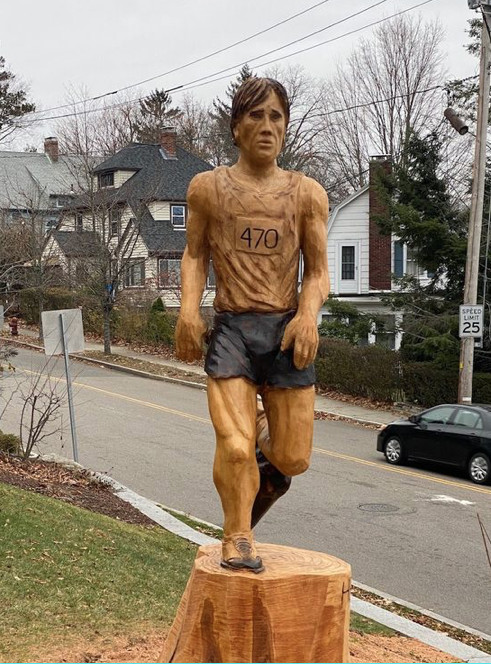
Mark Proctor and Charlotte McKee have owned a house on Heartbreak Hill, at the corner of Commonwealth and Grant Avenues, since the late 1990s. They’ve spent many Patriots’ Days hosting marathon watch parties in their front yard, next to that large maple tree that could be seen from a ways down the hill.
But in 2013, they found out the tree was dying. For seven years, Proctor and McKee did their best to keep it alive, even putting steel cables on it to keep it up. Unfortunately, in 2020, the tree became diseased; it killed vegetation around it, and chunks of the tree fell off. Instead of removing the tree entirely, Proctor had an idea to give the tree a second life.
“We had seven years to think about it, and we love the marathon,” Proctor told Runner’s World. “I can’t say where the spark was, but we have a house in New Hampshire, and people make tree carvings up there, so I had the idea of possibly making a runner out of the tree. Not an identifiable runner. Just a runner.”
They considered a few other ideas, such as the Greek god Hermes and a puma, like the brand logo. However, they ended up going with a generic runner.
“It was Mark’s vision from the beginning,” McKee told Runner’s World. “He had the have the courage of his convictions because I was originally not on board. But I’m glad he persisted.”
Proctor and McKee searched the internet for a wood sculptor, and they found Ken Packie, who lives in Otis, Massachusetts, in the Berkshires. When the tree came down in September, leaving only an eight-foot-tall section, the owners told Packie he had total creative control. In November, Packie made the two-hour trek to Boston with his tools and began to chainsaw the runner to life.
“The pose was dictated by the tree,” Packie told Runner’s World. “I had to knock everything peripheral off and see what meat I had left. Like most of my carvings, I wing it, and I knew I had to fit this into what the tree allowed me to do.”
While shaping, he also had to think of structural integrity, which meant the ankles had to be thicker to support the sculpture above—the back leg was especially tough, until an idea came to him from the wood.
“I had a huge chunk of wood under the back leg that I was going to cut off,” Packie said. “I looked at it, and it looked like a heart, and I thought, that should be a broken heart for Heartbreak Hill. It makes sense, and it’ll give the back leg structural integrity.”
As Packie worked with chainsaws, chisels, and blowtorches, people passing by started to show appreciation for the project as it took shape. Cars beeped all day and neighbors McKee and Proctor had never met started giving them positive feedback about the sculpture.
These are such crazy times and people are so stressed, and from hearing from people who are coming by is that people are so happy,” McKee said. “They’re looking for something to make them smile and this can be one of those things.”
In total, Packie estimates the carving took about 25 to 30 hours. On November 20, the final wood seal was put on, which will have to be replaced every year to keep the sculpture from wearing away.
The final product is a male runner with a singlet and shorts with a broken heart under the back leg.
“I hope this will become an inspiration for people to keep pushing,” Packie said. “Twenty miles into a race going up hill is a tough spot, and if this can help them push forward, I want them to see it. This is not a super lean runner. He’s the every man’s runner, and if he can do it, you can. Hopefully Heartbreak Hill won’t be a heartbreak for them.”
McKee and Proctor initially only planned to keep it around for one iteration of the Boston Marathon. But after seeing the positive reaction and watching people come to their neighborhood just to see or run past the new landmark, they think they’ll make it a permanent part of their yard and something for Boston Marathon runners to look forward to for years to come.
“It was so tough after the bombings and there was uncertainty about if it would return,” McKee said. “It gave people hope, and people were so happy when the marathon came back. Now, not having the marathon because of the pandemic, people are want to look forward to something. Hopefully, this will be a symbol of how we all got through this.”
(01/24/2021) ⚡AMPby Runner’s World
Nick Willis Set a Record by Running a Sub-4 Mile for the 19th Straight Year. Here’s How He Did It
On January 19, Nick Willis wrote himself into the record books when he ran a 3:58.63 mile. His time marked the 19th consecutive calendar year that the 37-year-old Kiwi runner has clocked a sub-4-minute mile.
A middle-distance specialist, Willis has sub-4 miles every year since 2003—and even the two years before that, he clocked a 4:01 and 4:02. It wasn’t until 2019 that the record of consecutive years running a sub-4 mile even came onto Willis’s radar. Someone had mentioned that he was one year away from tying fellow countryman and running legend John Walker, who ran sub-4 miles for 18 consecutive years from 1973 to 1990.
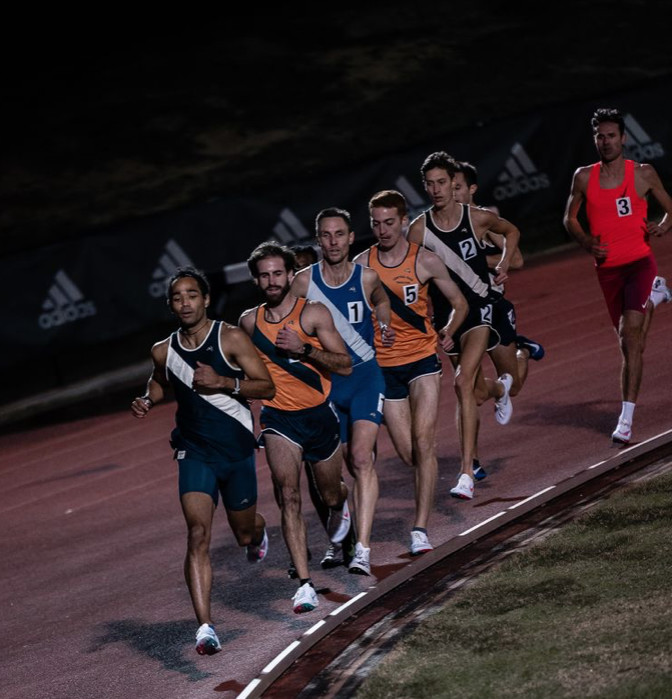
When he tied the record in 2020 at the New Balance Grand Prix in Boston, Willis realized he could get the obscure record if he could find a race—something made far more difficult because of COVID-19.
With some research, Willis found the Orange Winter Classic #1 in Orlando, Florida on January 19.
“I’m 37,” Willis told Runner’s World. “I’d rather try in January than in August when I’m eight months older.”
Because of the possibility of not having consistent track access at home in Michigan because of weather or the pandemic, Willis prepared for the event by spending the month between Thanksgiving and Christmas in Flagstaff, Arizona, training aggressively at altitude. A week before the race, back home in Michigan, Willis did a 1200-meter time trial that gave him confidence.
Normally, Willis said, the first race of the season is a bit rusty, but everything lined up right for his record attempt.
“I never felt comfortable, like I was on the edge of the red line the whole way,” Willis said about the race. “We were still able to do it though thanks to good pacing from pacemaker Victor Palumbo, who became the first American to run a sub-4 on an outdoor track in December on U.S. soil. He got us through three laps and did an incredible job.”
In the final 200 meters, Willis wasn’t able to get on the shoulder of eventual winner Mason Ferlic, but he hung on for second and a 3:58.63—good enough to grab the record from Walker. His splits were 1:01.64, 59.02, 59.30, and 58.68 on his way to breaking Walker’s record.
“[Walker] is very involved in local council now, so I’m sure he doesn’t care about this as a record at all,” Willis said. “Besides, he had the real mile world record [from 1975 to 1979].”
Willis’s longevity in the sport is unexpected. Over the years, he’s faced four surgeries, five stress fractures, pulled muscles, strained tendons, and countless minor injuries that have caused him moments of doubt.
He credits his coach, Ron Warhurst—also the head coach at the University of Michigan—and his wife, Sierra, for sticking with him through the highest and lowest times during his nearly two decades of competition.
“A lot of times, I would’ve walked away from the sport satisfied with what I achieved and they always thought there was more left in the tank,” Willis said. “What I did on Tuesday night was not without the unwavering support of them encouraging me. They are the ones who deserve the recognition.
As Willis has gotten older, he says the moments of motivation waver more than before. His motivation was at 90 percent most of the time in his younger years. As it has become tougher to compete with age, he says that number starts to waver toward 80 or 70.
“Tuesday was the first time I felt a lot of satisfaction crossing the line in the last few years,” he said. “I’ve felt frustrated because it doesn’t come as easy as it used to. Someone who finishes strong with a kick is what I’m known for and it’s been a struggle with why I can’t do that. I’m holding myself to unfair expectations. At 37, I can take a step back and look at it with a more relative perspective. Four minutes was the goal. I’m not a 3:50 miler anymore.”
The day after his record, Willis did what many great champions do and went to Disney World with Sierra and their two sons. He’ll be there for seven days while also squeezing in another race—an 800—on January 22. He has five races on tap in the coming weeks.
Because of the pandemic, he’s not sure how many races, especially indoor track races, will happen. However, he is hopeful to compete this winter, to make another New Zealand Olympic team, and to compete in some of the newly-formed Pro Track Series events this year. He also said he plans to ski and skateboard more.
As for his sub-4 streak, he’s not totally sure yet if it’ll continue.
“It seems like a crime to stop at 19,” Willis said. “I have a lot of other things these days. I’m working with Tracksmith now which has been a transition from just a pro running career to a corporate role. But if everything lines up, and I can still have some ski trips out west, I’ll definitely give it a shot.”
(01/24/2021) ⚡AMPby Runner’s World
Jim Walmsley Shatters the 100K American Record, But Misses the World Record by 11 Seconds
The king of Western States came so close at the Project Carbon X 2 race.
After more than six hours of running, Jim Walmsley crossed the finish line 11 seconds short of his ultimate goal—the world record in the 100K.
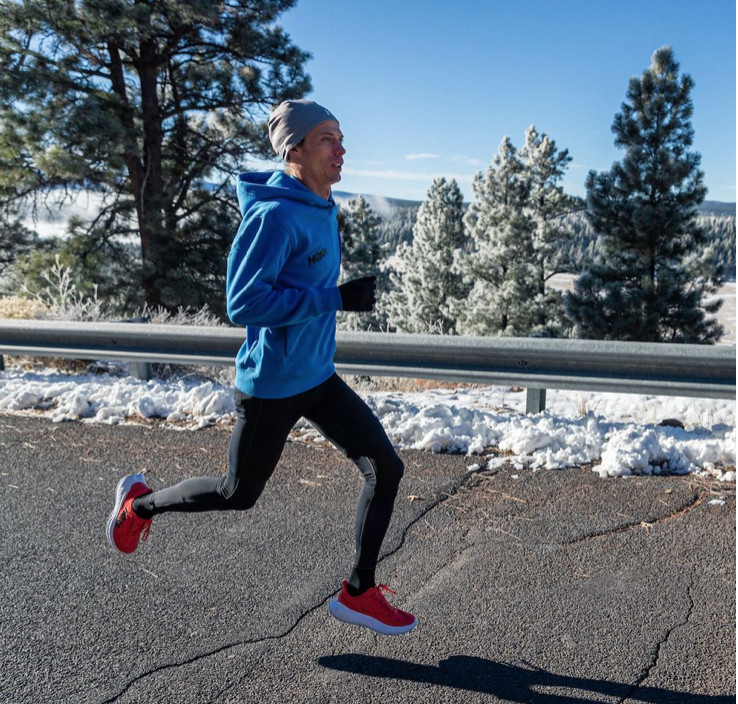
At the Hoka Project Carbon X 2 100K race on January 23, held in Chandler, Arizona, Walmsley ran 6:09:25, shattering the American record of 6:27:44, set by Max King in 2014. But the world record (6:09:14, set by Nao Kazami in 2018) continues to elude him.
“Definitely feels like one of the more special runs I’ve had,” Walmsley said, in his post-race interview. “Really felt like I got everything out of myself today, dug real deep, and fought all the way to the line. I don’t feel like I gave up, but it was tough to see the seconds tick by. It’s a little bittersweet, but definitely awarded with an American record today, and those don’t come very often. I don’t get to do things like this in my home state very often, so it’s extremely positive. A 45-minute PR. It was a pretty amazing day.”
Nineteen men and women were chasing national and world records in the 100K distance in Saturday’s race. Walsmley was the men’s favorite to set both the world record and the American record, while Camille Herron was favored for the women. Herron was forced to drop out of the women’s race with a hip injury.
Walmsley started the race in a pack with five other runners, running conservatively to keep his legs fresh. But the other four runners faded behind him, leaving Walmsley to chase the record alone. His pacing picked up over the final 30K, as he raced the clock with everything he had.
Around the 3:30 mark in the race, Walmsley clipped his left shoulder on a course sign, and he was visibly bleeding for the next two and a half hours. At water stops, he’d fuel and treat his wound as best he could while keeping his stride.
The race came down to the final 10K, as Walmsley needed to run 37:58 or faster over the final miles. Those watching the race on the live stream could see the fatigue and pain set in over that final stretch. He let out a loud “C’mon, Jim” scream with a little more than 5K to go, fighting the clock with everything he had.
As he entered the drag strip to the finish, he had just over a minute to cover the final hundreds of meters. He got on his toes, repeatedly checked his watch, and ran as hard as he could to beat the clock that was now in his sights. Ultimately, he watched the clock tick past 6:09:14, finishing 11 seconds later.
“We’ll have to try it again,” Walmsley said in his post-race interview. “We’re in the right ballpark and on the right track and we have a shoe to compete with this and we’re knocking on the door. I don’t think I’m done with the 100K. Fortunately, unfortunately, there’s likely another one down the road.”
The remainder of Walmsley’s year is uncertain, because of the pandemic. He told Runner’s World before the race that he’s looking at first are the Comrades Marathon and the Ultra-Trail du Mont-Blanc. In the near future, he’s hoping to do the Black Canyon 100K three weeks from this weekend on February 13.
The Flagstaff, Arizona, native wasn’t the only runner with a notable day out on the course. Rajpaul Pannu took second in the men’s 100K in his first-ever attempt at the distance. Pannu is a math teacher in addition to being a pro runner who finished 63rd at the Olympic Marathon Trials in February 2020.
In the women’s race, the United Kingdom’s Carla Molinaro and the United States’s Camille Herron led for the first half of the race before France’s Audrey Tanguy slowly made her way past both runners early in the second half of the race. After that, Herron was forced to drop out after six of nine laps due to a hip injury.
Tanguy, the reigning and two-time champion of the Ultra-Trail Sur les Traces des Ducs de Savoie (TDS), captured the lead and ran away with the race for the win in 7:40:35, unofficially.
American Nicole Monette did move close to Tanguy late in the race and took second, finishing less than three minutes behind the winner.
(01/24/2021) ⚡AMP
by Runner’s World
Dina Asher-Smith back on track and could go to European Indoor Champs
Dina Asher-Smith will return to competition next week for the first time since becoming world 200 meters champion more than a year ago.
On the day the British Indoor Athletics Championships were cancelled for the first time since 1961, the nation's fastest ever woman was confirmed for the Gold Series meet in the German city of Karlsruhe.
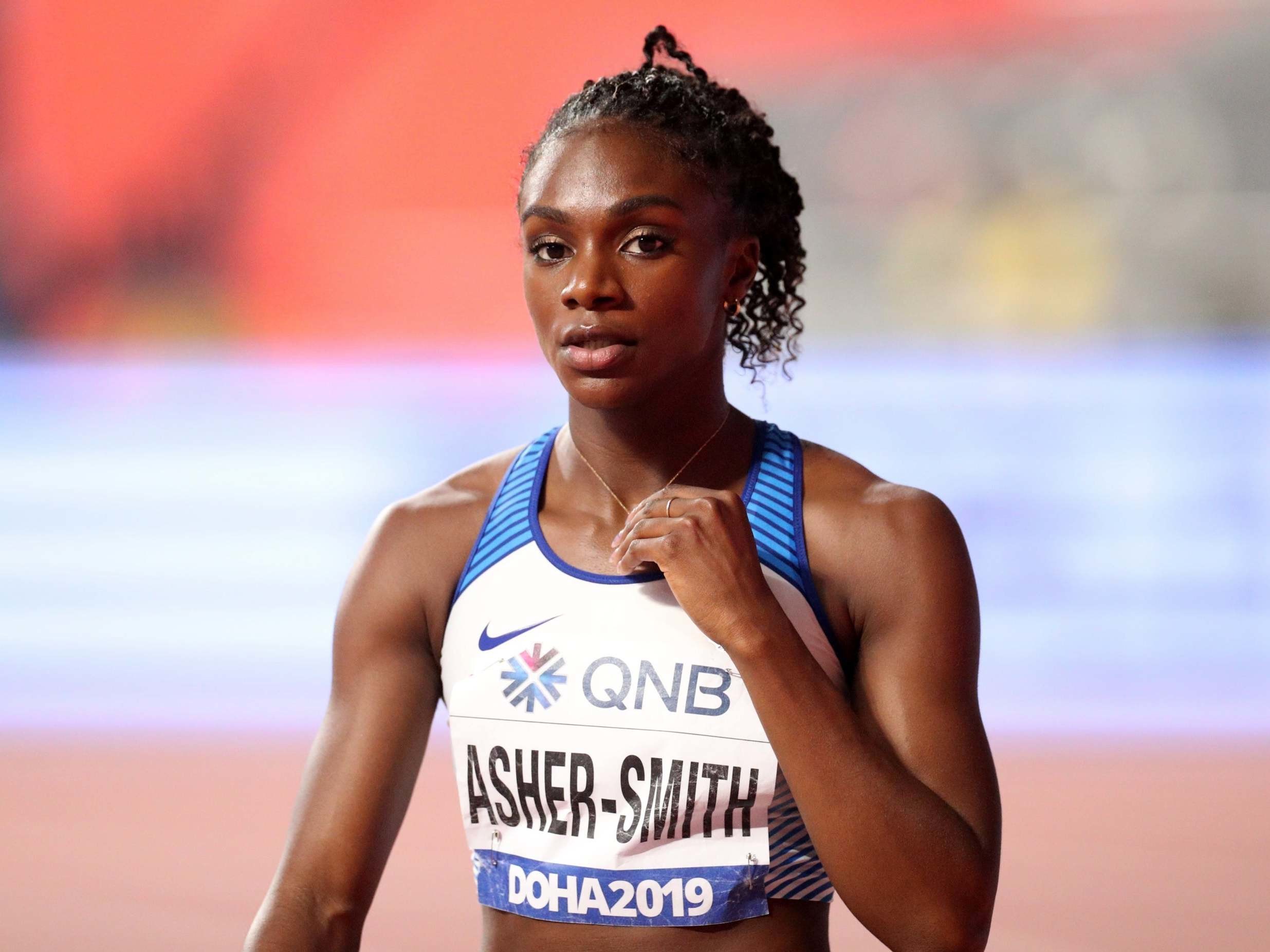
Asher-Smith will contest her first 60m for three years on Friday in a race also featuring Poland's European indoor champion Ewa Swoboda.
Pandemic-permitting she will then move on to Dusseldorf and another indoor race two days later.
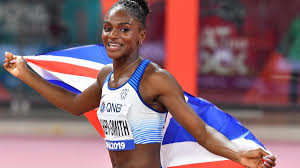
Given the limited opportunities for competition ahead of the Tokyo Olympics, Asher-Smith could even take part in the European Indoor Championships in Poland on the first weekend of March. Her management have not ruled out the possibility.
Meanwhile, the International Olympic Committee and Japanese government have categorically denied a report that this summer's Olympics and Paralympics are to be cancelled.
“This is exhausting,” Paralympic star Stef Reid said in response to the ever-changing speculation.
Five-time Paralympic champion Hannah Cockroft agreed: “This is our livelihoods being played with.
"We’re all aware there’s a chance the Games might not go ahead, but until an official decision is announced, please leave us to work and dream!”
(01/23/2021) ⚡AMPby Alex Spink
European Athletics Indoor Championships
Witness six sessions of action-packed sport over three days of intense competition as some of the best athletes in the world compete for prestigious European titles. Don’t miss the opportunity to witness this thrilling event and get closer to the action. ...
more...Molly Seidel and Aisha Praught-Leer have signed with Puma
Two U.S. athletes recently announced they have signed sponsorship agreements with Puma heading into the 2021 Olympics: Olympic Marathon Trials second-place finisher Molly Seidel and Olympian and 2018 Commonwealth Games steeplechase gold medallist Aisha Praught-Leer.
Seidel surprised everyone with a second-place finish in her debut marathon at the Olympic Marathon Trials last February. She completed the race a time of 2:27:31, earning her a spot Team USA for the Tokyo Olympics. The following October, she lowered her PB during the elite-only London Marathon, finishing in sixth place in a time of 2:25:13.

After her first sponsorship deal as a professional athlete with Saucony came to an end, she officially announced on January 22 via Instagram that she has signed a new contract with Puma. This new sponsorship comes on the heels of a fantastic year for the Turkey-Trotting runner, and should the Olympics go forward as planned, we look forward to seeing what Seidel can do.
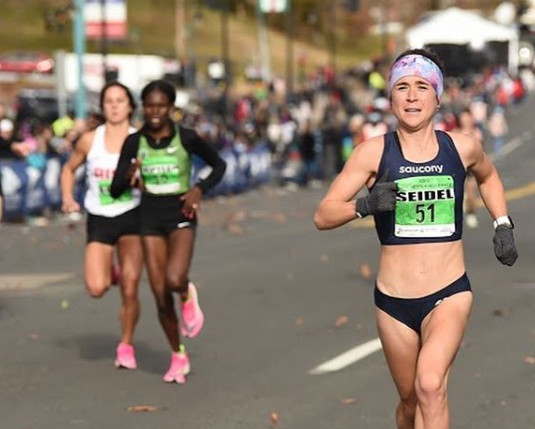
Jamaican-American Praught-Leer competed for Jamaica in the steeplechase at the 2016 Olympics, won gold in the event at the 2018 Commonwealth Games and holds the national record at the distance. She had been sponsored by Under Armour since 2017 but announced via Instagram on January 1 that her partnership with the company had come to an end.
Since that day, runnin fans everywhere waited to see where she would be going next, and on January 18 she made the official announcement that she would be partnering with Puma for the next few years. She and Seidel will be joining other notable Puma-sponsored athletes, including Canadian sprinter Andre Degrasse, two-time world record-setter in the 100 metres Asafa Powell and of course nine-time Olympic gold medallist Usain Bolt.
(01/23/2021) ⚡AMPby Brittany Hambleton
Jim Walmsley, Hayden Hawks Going for 100-km World Record at Project Carbon X 2 in Arizona
A group of top ultra runners will gather in Chandler, Ariz., with hopes of breaking the World Athletics records for 100 kilometers on the road. The event, called Project Carbon X 2 and staged by Hoka One One for the benefit of their athletes, will start and finish at the Wild Horse Pass Motor Sports Park and will use some of the same roads as The Marathon Project which was held with great success last month.
“I’m incredibly excited,” said Hoke One One president Wendy Yang on a video conference today with reporters. “Also feel super fortunate that the team was able to bring this event together.”
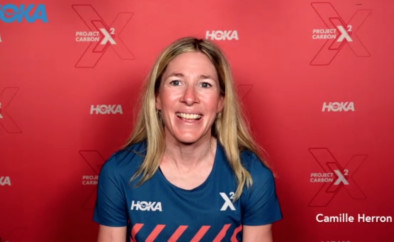
The pandemic has meant dramatically fewer competitive opportunities for road running athletes, especially ultra runners who specialize in distances longer than the standard marathon distance of 42.195 km, or 26.2 miles. However, since most ultra runners train alone or in very small groups, the pandemic has given them a chance to put in long blocks of uninterrupted, COVID-safe training and improve their strength and fitness. Tomorrow’s race will offer them a chance to show off their work.
We wanted to give our athletes the chance to compete,” Yang continued. “We felt like our athletes really needed this chance.”
The top targets for tomorrow’s race are the ratified World Athletics 100-K records of 6:33:11 for women, set by Japan’s Tomoe Abe in 2000, and 6:09:14 for men, set by Japan’s Nao Kazami in 2018. Both records were set at the same event, the Lake Saroma 100-K in Hokkaido, Japan. The women’s record works out to a pace of 3:56 per kilometer, which means running two 2:46 marathons back-to-back plus another 15.6 kilometers at the same pace. The men’s record pace of 3:42 per kilometer translates to running back-to-back 2:36 marathons plus the extra distance.
“You never know what can happen in an ultramarathon,” said Hayden Hawks one of the top contenders in the men’s division. Hawks smashed the course record at the venerable JFK 50 Mile (80.5 km) in Maryland last November, clocking 5:18:40. His pace at that event, which included rugged trails and some steep climbs and descents, worked out to 3:58 per kilometer. He said he’s been practicing on flat, loop courses to simulate the conditions in Arizona, and that with his strength and mental toughness he has a chance at the record.
“My greatest strength is probably just my stubbornness,” Hawks said. He added: “I feel like I have this mental strength to push through a lot of pain.”
Hawks’s main rival tomorrow will be ultra star Jim Walmsley, the man whose record he broke at the JFK race. Walmsley is best known as a trail runner, and is the course record holder for the impossibly difficult Western States 100-Miler in Auburn, Calif., where he ran 14:09:28 in 2019 (he also won in 2018). Walmsley already holds the world best for 50 miles on the road of 4:50:08. Using the popular Riegel Formula, that’s equivalent to 6:05:51 for 100-K, comfortably under the 100-K world record by more than three minutes.
Note: Walmsley was on the LetsRun.com Track Talk Podcast this week where he talked about his 100-k world record attempt, his big plans for 2021 and his cancelled 2020. Highlights here.
“I’m really looking forward to improving on my past performances in the 100-K,” Walmsley said today, admitting that he hasn’t yet perfected his approach to that distance yet. He continued: “I think I’m bringing a more mature approach of being more patient.”
If they don’t eclipse the world record, both men could surpass Max King’s USA record of 6:27:44 set in 2014.
On the women’s side, Camille Herron is the top entrant, and she rated her fitness at “80 to 85 percent.” Like Hawks, the holder of the world best for 24 hours on both the road and the track recently won the JFK 50-Miler. She played down the possibility of getting the world record, but said she was in about the same shape as when she won the famed Comrades Marathon in South Africa in 2017 over a distance of 86.73 kilometers. She allowed that a personal best (sub-7:08:35) was possible, despite only doing a six-week build-up.
“I’m definitely confident in my fitness,” said Herron who recently switched sponsors from Nike to Hoka One One and who will be doing her first race in Hoka shoes. She added: “I’m getting fitter every week. I have a pretty good idea of what I’m capable of.”
Also competing in the women’s division is Irish Olympic marathoner Caitriona Jennings, 40, who will be making her 100-K debut. Jennings will be taking a cautious approach to the race because she is 12 weeks pregnant. She said that there will be plenty of ice and fluids available on the course so that she can keep her core temperature in check.
“It wasn’t a decision I took lightly,” she said emphasizing that she had consulted with her doctor before agreeing to compete. She added: “I think (the water and ice on the course) will help with hydration and keep my temperature down.”
The athletes will start and finish on the race track, and will run about nine laps of an 11-kilometer circuit (Walmsley estimated that each full lap would take him about 41 minutes). The course was measured by two World Athletics “A” measurers, Joe Galope and Jay Wright (an “A” measurer must be used in order for a course to be eligible for a World Athletics record). The event will have in-competition drug testing done by the USA Anti-Doping Agency, also a requirement for setting a world record.
All of the competitors will be wearing the new Hoka One One Carbon X 2 shoe. Colin Ingram, Hoka’s director of product, called the new shoe “one of our sharpest tools in the box.” He explained that the shoe had been improved over its predecessor by incorporating “swallow tail construction” to improve deceleration on the foot strike, and lowering the carbon plate to get it closer to the ground.
“It allows for a more natural gait,” Ingram said.
While Hoka One One has not disclosed the cost of the event, it is significant, especially making it as safe as possible from the coronavirus. Mike McManus, Hoka’s director of global marketing, said that every athlete had at least three antigen PCR tests in the last week, and that masks and social distancing were required at all times except when the athletes are on the course. An industry insider contacted by Race Results Weekly estimated the cost of COVID mitigation for the event was around $60,000.
“It’s been a huge challenge for us to make this event happen in a very safe way,” McManus said.
The race will be streamed live and free at hokaoneone.com beginning at 9:00 a.m. Eastern Standard Time.
(01/23/2021) ⚡AMPby Let’s Run
2021 Edinburgh Marathon, organizers remain optimistic event can go ahead in May
Edinburgh Marathon Festival organizers remain optimistic the events can go ahead as planned in May despite the coronavirus crisis.
Those who have signed up to participate were issued an update this week which said that all being well the festival will take place as planned on May 29 and 30.
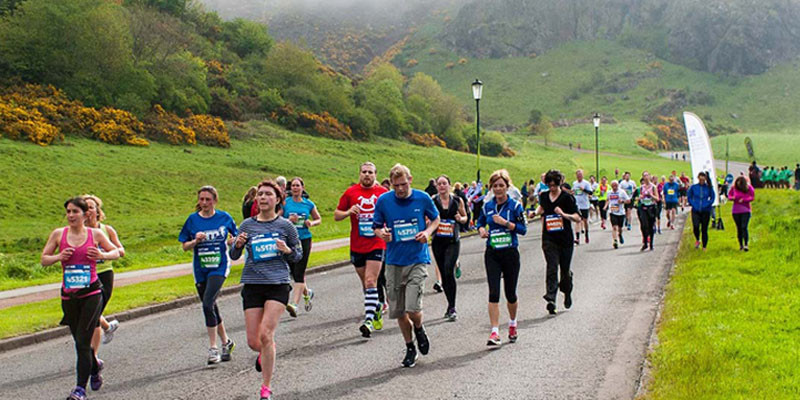
Scheduled for the weekend is the full 26.2-mile marathon, the EMF half marathon, relay race, 10k, 5k, junior 5k, junior 2k, junior 1.5k and kids' kilometre.
Entrants were told that a number of measures have already been implemented to allow the event to take place should it be permitted.
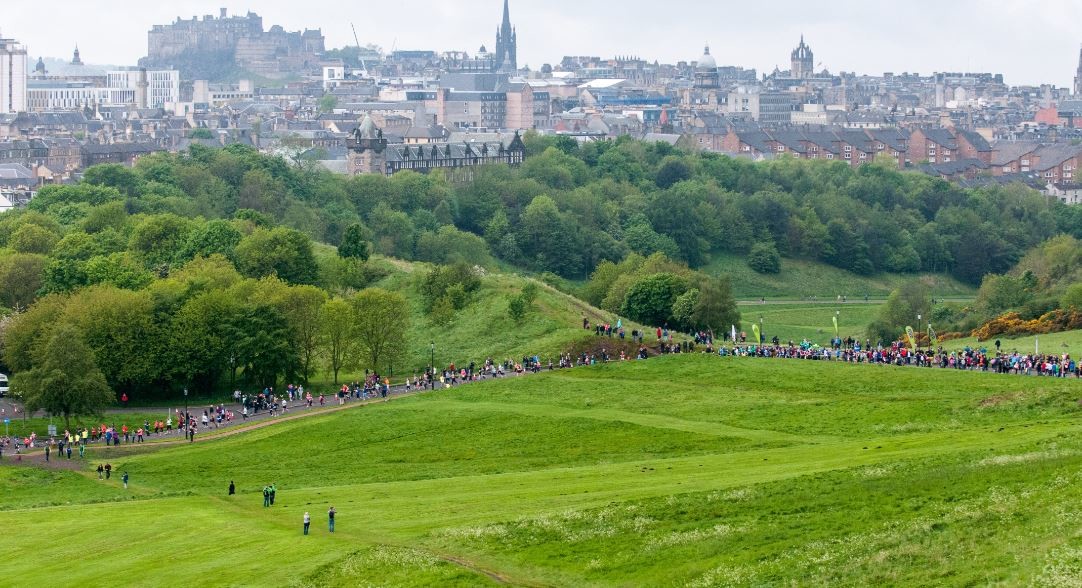
As well as an increase in hygiene stations, organisers say there will be a 50 per cent reduction in participant activity to allow for social distancing, and personalised information packs giving detailed guidance which must be followed by those taking part.
Should Covid-19 scupper the festival then virtual events will take place across the weekend instead and participants will be given a voucher for a percentage of their entry fee which can be used towards other events up until 31 December. They'll also be given the option of deferring to the 22 event if they don not wish to take part virtually.
Regular updates will be given to runners in the coming weeks, and a final decision will be made by the first week of March.
Nicola Sturgeon said yesterday that there were reasons to be cautiously optimistic in the ongoing battle against Covid-19.
She said: "Our figures suggest that the lockdown is starting to work. This is the first day in a long time that test positivity has been as low as 6.9 per cent. Under 7 per cent.
"So we are starting to see some cautious grounds for optimism that what we are doing right now is working. But we can’t be complacent about that against a virus that has learned to transmit more quickly."
However the First Minister did warn we perhaps shouldn't expect to see any large-scale events taking place across the country this summer.
(01/23/2021) ⚡AMPby Robert Fairnie
EDINBURGH MARATHON
The Edinburgh Marathon is an annual marathon event, run in Scotland over the traditional distance of 42.195kilometers (26.219 mi). The first marathon event in Edinburgh was in 1982 and since 2003 the Edinburgh Marathon Festival has been held each year, usually in May. The current route begins in the city center, then moves out of Edinburgh into East Lothian, finishing...
more...Winter Running Tips from Some of the Coldest Places on Earth
Winter has fully arrived, filling many runners with dread. Slick roads, stingy daylight, numb extremities, ungodly treadmill miles: I know I'm not the only one who contemplates a move to the tropics at least once a year.
But like most things that are hard, there's a lot to be gained from training in tough conditions. There are also ways to get fit, stay healthy, and maintain motivation, even in the harshest of climates. To learn how to embrace the season, we sought advice from the experts; elite runners from Minnesota, North Dakota, Switzerland, and Finland.
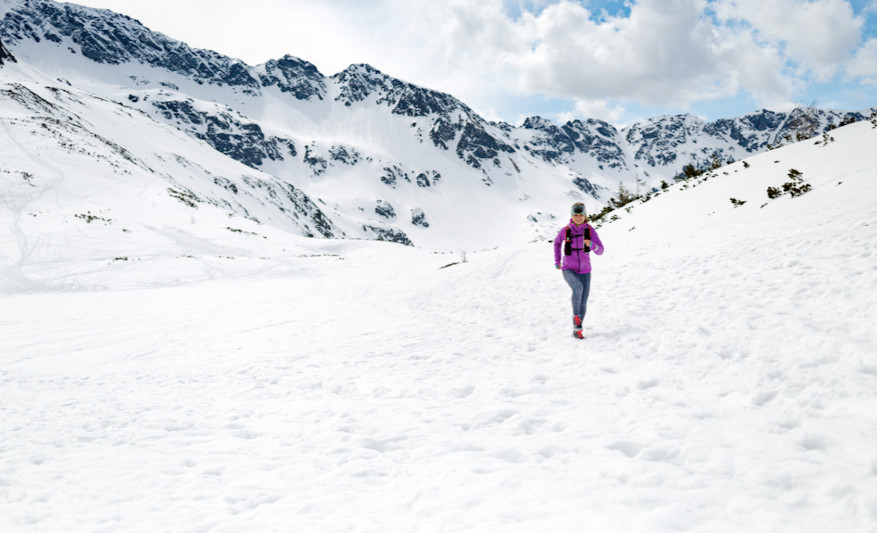
Here are their best tips for making it through the winter strong and primed for a fast year ahead.
Invest in Good Gear
Proper gear is essential come winter, and each runner has his or her sworn-by ensemble. Swiss steeplechaser Astrid Leutert keeps it simple. Her getup includes a headband, gloves ("a must!"), a running light, long sleeves. and running tights. Antii-Pekka Niinist, who trains in Paavo Nurmi's hometown of Turku, Finland, adds ankle warmers, a mask on extreme days (below -5F), and studded running shoes when the roads are slippery.
For long distance runner Maddie Van Beek out of Fargo, North Dakota, a good windproof jacket is critical; when combined with thermal tights and a wool base layer, she can get through almost anything. A thermal vest on top of her jacket helps keep her core warm too. And Saint Paul, Minnesota-based miler Heather Kampf stays toasty with wool socks, warm mittens with wind block and "a nice snot-wipe spot," plus a hat or balaclava.
Though it can be hard to imagine, Van Beek and Kampf warn that overdressing is possible. As a rule of thumb, Kampf advises runners to wear enough layers that they're a little cold for the first half mile or so, but not so much that when they get warm they overheat. "You don't need to feel like the Abominable snowman or Randy from A Christmas Story before heading out to run," echoes Van Beek.
Those who grew up in cold climates - like PodiumRunner editor Jonathan Beverly from Maine - often use the "20-degree rule." Add 20 degrees to the current temperature, then wear the level of clothes on your run that you would put on if sitting outside at that temperature. For example, if it is 40F out, dress like you would while watching a football game at 60F
Try to Make it (Cautiously) Social
Winter training can be gloomy, lonely, and monotonous; and training partners are usually clutch. Leutert, who balances running with full-time work as a pharmacist, tries to run with friends or a running club as much as possible. She also finds group spin classes to be motivational, fun, and a nice change of pace.
Kampf encourages runners to find friends to get out there and suffer with. Misery loves company, after all - and so does the surprise moments of magic. She also credits her husband Ben - who logs at least 10 miles a day outside, polar vortex and all - with getting her out the door into the Minnesota winter. "There's no such thing as bad weather, just weak people," Ben chimes in.
Obviously, social winter running has become more of a challenge in the winter of 2020 with the Covid-19 pandemic. But there are still ways you can connect with others during your run so long as you take precautions. You could Facetime someone and "virtually run" together on a treadmill. Or, you could mask up and run with one or two friends while keeping a safe distance.
Warm Up Strategically
Getting your body warm and ready to go can be tricky in extreme conditions. The best approach is also highly individual. Van Beek is religious about doing her prehab exercises indoors before venturing out into the North Dakota tundra, and she's also not afraid to start off with a super slow first mile. Niinist, who does most of his training outside, knows he needs extra time to warm up too.
Kampf, on the other hand, takes the opposite approach. After a standard warmup jog, she does less stretching, drills, and strides than when it's warm outside, knowing how quickly her body gets cold and digits lose feeling. "Better just to start slowly for the beginning of the workout and warm into it as you go," she believes.Don't Stress About Pace
If ever there was a time to detach from your watch, winter is it. Van Beek purposefully ignores her pace on runs when the surface is dicey or conditions brutal. "The effort is often much higher than what my watch shows," she says. So rather than letting unhelpful metrics dictate her run, she tunes into her body and practices running by feel.Kampf, too, finds the positive in winter's forced slowdown. "Tough weather forces us to take our time, patiently plodding through base training and longer workouts without getting ahead of ourselves," she says. As a result, she's able to avoid injury and overtraining more easily than runners who train hard year-round in more moderate climates.
Appreciate the Beauty
It's easy to lose sight of your surroundings when all you can think of is how cold you are, how hard you're working and how many layers you'll soon have to wash. But it's called a winter wonderland for a reason. Wherever you are, soak it up!
Niinist, who trains in way tougher conditions than most of us ever will, still recognizes that "Finland is really beautiful in winter months," going so far to call Lapland - further north than Turku, with almost no sunlight - "magical."
Van Beek is also energized by her surroundings: Frosty trees, fresh snow, and the occasional deer or other animal. She also finds the winter conditions calming: "Seeing your breath and hearing your footsteps in the snow - nothing else - can be a good reminder of why I'm out training in the first place."
Embrace the Mental Benefits
When mile after mile in the cold makes it hard to appreciate the magic of the winter wonderland, remind yourself that it certainly is character building. All four of the athletes I spoke with cited mental toughness as both motivation and reward.
Niinist, who does most of his workouts in the dark thanks to Finland's position on the globe, has trained himself to keep a positive attitude, knowing that he's getting stronger every time he steps out the door. Leutert similarly believes that "it's all about the mindset," and focuses on the toughness she's building, along with the increased energy and productivity she'll feel for the rest of the day.
Thanks to Fargo's extreme weather fluctuations, Van Beek gains confidence from having trained through just about every weather condition imaginable. She reminds herself that when she races in good weather, she'll be ready. And when she races in bad weather, she'll be even more ready!
Likewise, Kampf says, "I can't even say how many days I finish a workout and think, 'Wow, I can't believe I did that out there. If I can run that in terrible conditions, just imagine how good it's going to feel to run free - unencumbered by so many layers, bad footing, wind gusts, and more.'"
As a Last Resort: Take Advantage of Treadmills
All four runners rely on treadmills to some degree. Some, like Kampf, use them as a last resort, either when the footing is bad or when temperatures plunge below -10 Fahrenheit (meaning the wind-chill feel is around -25-30F). Others, like Leutert, prefer a blend, running many morning runs and workouts on treadmills, heading outside when conditions allow, and incorporating some cross-training to keep things interesting.
And a smaller subset of runners, Van Beek included, does the majority of its winter training on a treadmill. "It's been one of my most important training tools," she says, having run every speed workout leading up to her debut marathon on one. To get through long grinds in one place, Van Beek curates "a dope playlist," cranks it up, and stares at the wall, knowing that the mental training will pay dividends in races to come.
(01/23/2021) ⚡AMPby Trail Runner Magazine
Stroke survivor: 'running saved my life
When you’re in the middle of a tough training block or trudging through seemingly endless miles in the dead of winter, it’s easy to forget what a privilege it is to be able to go out and run. It’s not until that privilege is taken away from you that you appreciate it for its full value. This is the lesson Perry Cook learned when, after a massive stroke, he was not only unable to run, but he couldn’t walk, talk or speak. This is his story.
Prior to his stroke, the 55-year-old Vancouver resident was an avid runner and all-around fitness lover. He completed three half-marathons in 2018 and also enjoyed activities like speed skating, hiking and cycling. He had been planning on running several other races in 2019, including his first marathon. During a trip to California, his entire life changed, when, on November 5, 2019, Cook suffered a massive stroke that left the entire right side of his body paralyzed.
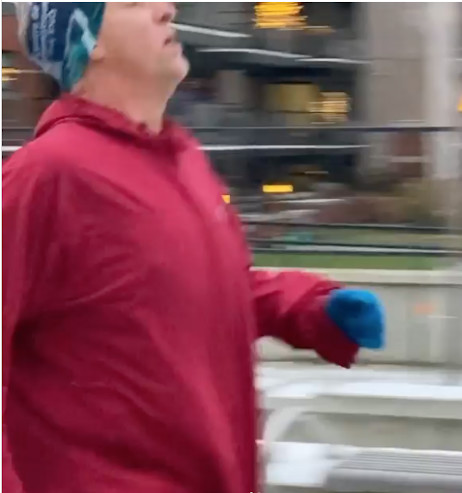
Cook was admitted to a hospital in California, where his blood pressure was found to be 225/120. The doctors told him had that number reached 230/120, he certainly would have died. He spent the next three weeks at the hospital in California before he was transferred to the GF Strong Rehabilitation Centre in Vancouver. There, he spent the next three months recovering and re-learning how to do basic tasks like walking and talking.
The first time Cook tried walking, he needed two people to hold him up. He persevered, and in early February 2020, he finally went for his first run. It was only 10 metres, but it was a start. The following November on the anniversary of his stroke, he completed his first 10K run. It was slow and brutal, but he was determined. Today, he runs 10K every two days, and he has even worked his way to running up to 15K one day per week
“Doesn’t matter the weather. Rain, shine — who cares?” he said. “I can barely tie my shoes up but running gets me out there no matter what the weather is, and I am alive.”
While Cook is far better than he was a year ago, his recovery process is ongoing, and the lingering effects of what he calls his “California Accident” creates unique challenges when he’s running. He has to focus intently on how his body is moving, his posture and on keeping his right arm in the correct running position. This makes his runs exhausting for both his body and his brain.
“When I run, physically and mentally I’m done after,” he explained, “because I have to make sure my form is good, make sure my arm heals, my shoulder heals.”
Cook has big plans for the future, including finally running that marathon he was going to do back in 2019. When asked if he feels he’ll be ready for it, he just laughs.
“What’s the worst that could happen? I could die? I already almost did.”
When Cook had his stroke, the doctors told him that it was his running and previous fitness level that saved his life. Since then, he says he is throwing himself into the “stroke and running concept,” and wants to encourage other stroke victims to get out and walk or run. He is part of a support group called Young Stroke Survivors, in which he meets on Zoom with 30 other stroke sufferers from across Canada, and he is planning on volunteering with the Stroke Recovery Association of Britsh Columbia
(01/23/2021) ⚡AMPby Running Magazine
Are you experiencing a COVID-related injury?
For many of us, the COVID-19 pandemic has changed our daily routines dramatically. Instead of heading into the office, we’re working from home. Rather than running with friends, we’re logging all our miles solo. Without gyms to go to, we’re trying to work out in our houses and apartments. These lifestyle changes are starting to show up in our bodies, and physiotherapists are beginning to see these changes reflected in the types of injuries showing up in their clinics. We spoke with Lindsay Scott, runner and physiotherapist at the Runner’s Academy in Toronto, to find out what types of COVID-related injuries runners are experiencing, and what they should do to avoid them.
Scott explains that many of us are spending hours huddling over computers, working from couches or beds and losing the small amounts of daily movement that come with leaving the house. Coupled with a sudden change in access to gym facilities, these lifestyle changes initially caused things like headaches, neck and jaw pain and lower back pain.

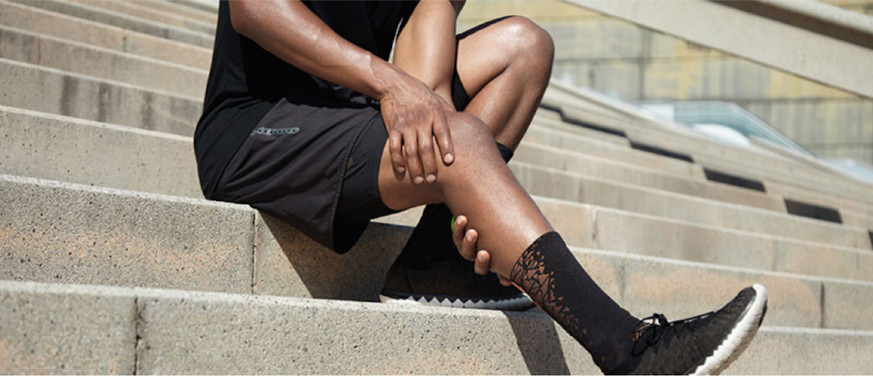
She says they’re now seeing two trends: beginner runners or those who have increased their mileage significantly, and runners who are just simply burnt out. Runners in the first group have increased the demand on their bodies faster than they can adapt, and this is leading to an increase in complaints like shin splints and patella-femoral pain syndrome (runner’s knee)
For runners in the second group, burnout can translate into all kinds of injuries, including bone stress injuries, pain in the SI joint area, plantar fasciitis, Achilles issues and the return of previous injuries. Scott says one reason for this is because stress of all kinds can increase our risk for injury.
“Any stress, whether it’s physical, mental or emotional, will play into our resilience on therun,” she says.
Additionally, she says that without any races on the calendar this past year, many runners didn’t take any downtime or plan to have a recovery season the way they would after a race. It is not possible to be at peak fitness all year, and it isn’t sustainable to continue to train without taking a period of intentional rest. The issue, of course, is that many of us use running as a way to relieve stress, and so taking time off during such a difficult time doesn’t seem all that appealing.
"As we use running as a coping strategy, an anchor in our daily routine, and a reason to leave the house for some fresh air, we’re seeing the effects of insufficient recovery in the form of more injuries,” Scott says
Scott uses the visual of a hurricane to explain the factors that contribute to injury: at any given time, you have a number of factors swirling around that are contributing to your health (like good technique, good coping mechanisms and a supportive environment) and factors swirling around that are detracting from it (like poor mobility, stress, fatigue or unhealthy ideas about training). Every day, the pull of a given factor may be more or less than the previous day.
“In the event that the factors that drive you towards injury begin to outweigh the healthy factors, you move closer and closer to a tipping point, at which point, you begin to experience symptoms,” she explains. “So while it may seem as though something as simple as neglecting your post-run routine after that last workout created symptoms, the reality is that you had likely been building towards that tipping point and that one change was simply the final straw.
If you’re experiencing pain that lasts more than a few runs, or that seems to be getting worse, Scott recommends seeking out a physiotherapist or other healthcare professional, particularly one who has experience with runners. Even during the lockdown, many healthcare practitioners have been deemed essential and remain open to support runners. She adds that virtual care is also an excellent option for those who can’t or don’t feel comfortable with an in-person appointment, and can still produce similar results as face-to-face care
Scott’s guidelines for running during COVID-19
First, Scott advises runners to adjust their expectations around running based on the positive and negative factors that contribute to their ability to tolerate the demands of running. If your stress levels are rising and you feel the need to head out for a run, first check to make sure that it is the right thing for your body. Second, she reminds runners to give their bodies plenty of time to recover and to build up mileage and intensity gradually.
Scott also advises runners to think about what it looks and feels like when they’re running through fatigue, and to be aware of those signs of overtraining and burnout. You should also keep up with a regular mobility practice and strength training program to keep your body moving well. She says this is also useful as an early indicator if something isn’t moving well long before symptoms develop.
Finally, if you’re someone who tends to get competitive with others or yourself, Scott suggests muting or turning off tools like Strava or the ‘productivity’ feature on your Garmin
“Clinically, I see many runners who ignore warning signs from their body in order to keep up with these often arbitrary indicators of success on the run. Both of those tools can have immense value to runners in certain circumstances, but they can also push you to enter dangerous territory if you lose sight of the need to listen to your body.”
During already stressful times, the last thing you want is to add an additional stressor into your life in the form of an injury. Listening to your body, backing off the volume or intensity when necessary and taking a few days off if you need them will ensure that running can continue to add something positive into your daily life
(01/23/2021) ⚡AMPby Running Magazine
Japanese officials deny as categorically untrue, report Tokyo Olympics could be cancelled
Japanese officials on Friday vehemently denied a newspaper report suggesting that the Olympic Games, due to be held in the country this summer, could be cancelled.
The Tokyo Olympics originally planned for 2020 were delayed 10 months ago following the outbreak of the coronavirus pandemic.

The local Olympics organizing committee said in a statement that the games would go forward as planned and had the support of Japan's Prime Minister Yoshihide Suga.
Another statement from the Cabinet Secretariat on behalf of Japan's government also dismissed the report.

"Some news reports circulating today are claiming that the Government of Japan has privately concluded that the Olympic and Paralympic Games Tokyo 2020 will have to be cancelled. This is categorically untrue," the statement said.
Adding that all involved, including the Swiss-based International Olympic Committee (IOC), were "working together to prepare for the successful Games this summer" and would "implement all possible countermeasures against Covid-19."
The denials come after a British newspaper, The Times of London, citing an anonymous source that it said was a member of the ruling government coalition, reported that the games could be cancelled. It also said the government was seeking a way to announce the cancellation amid efforts to ensure Tokyo as a future host.
Manabu Sakai Japan's deputy chief cabinet secretary and an ally of the prime minister also shot down the story. "There is absolutely no truth to this report," he told press on Friday.
While Tokyo Governor Yuriko Koike went further, calling for possible action against the newspaper.
"I don't even know how this is being reported or how this information was obtained. In fact, I think we should lodge a complaint. That is how I feel," she said during her regular news conference Friday.
(01/22/2021) ⚡AMPby Arata Yamamoto and Adela Suliman
Tokyo 2020 Olympic Games
Fifty-six years after having organized the Olympic Games, the Japanese capital will be hosting a Summer edition for the second time, originally scheduled from July 24 to August 9, 2020, the games were postponed due to coronavirus outbreak, the postponed Tokyo Olympics will be held from July 23 to August 8 in 2021, according to the International Olympic Committee decision. ...
more...Mo Farah set to defend Antrim Coast crown as Half Marathon granted elite world status
Sir Mo Farah will be back to defend his Antrim Coast Half Marathon title - that is the bold prediction of elite race organiser James McIlroy after the contest was granted elite world status.
Former Olympian McIlroy is confident the four-time Olympic gold medallist will return for another crack at the title he won in stunning style last September - hopefully with gold No.5 in his back pocket if the Tokyo Games go ahead.
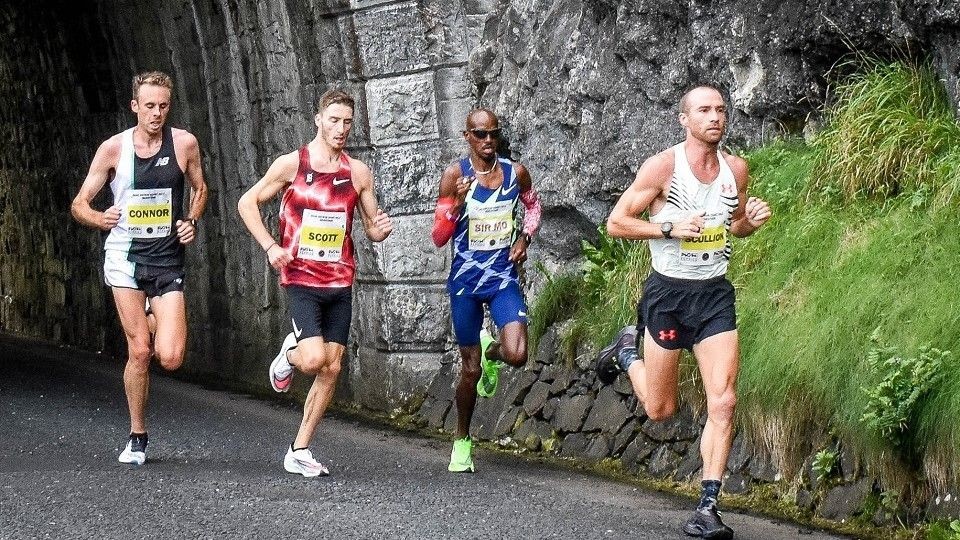
"Fingers crossed Mo will be back this year. The 2021 race really will be amazing when you think we will have the best runners in the world running on one of the most beautiful roads in the world while also welcoming the masses back, who not only will get to race with some of their heroes returning from the Tokyo Olympics but, due to the out and back nature of the course, they'll also get a great view of the elite race - which we hope will be a record-breaking race like last year," said McIlroy, close friends with Sir Mo - who is coached by Larne man Gary Lough - since their time together in Team GB.
"We also should be in a position to welcome the American and African competitors confirmed for last year's race but who unfortunately, due to restrictions, were unable to travel."
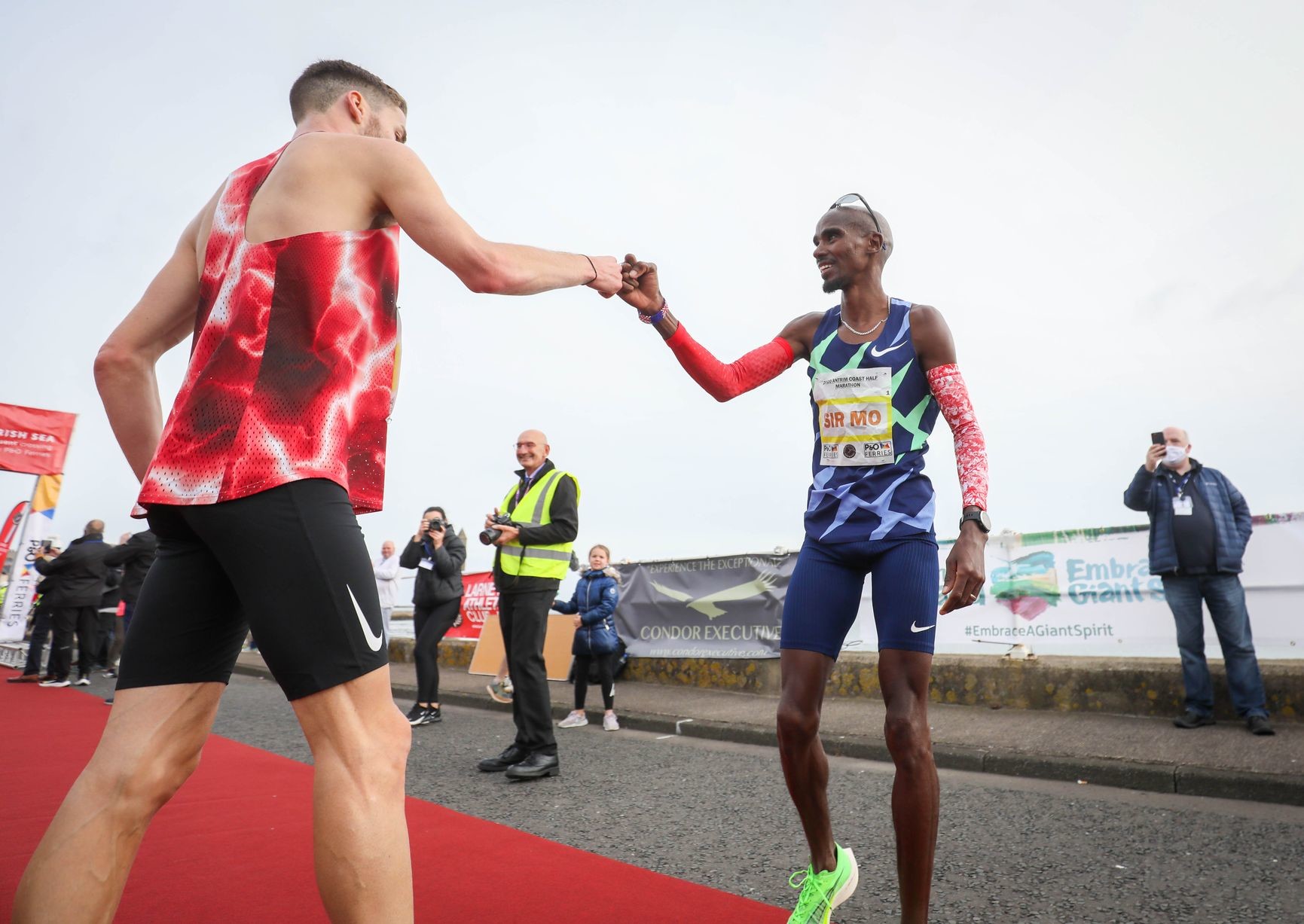
The race is the first in Ireland to be elevated to the prestigious series of IAAF Road Race Label events, and only the third in the UK - joining the London Marathon and Cardiff Half Marathon.
The Antrim Coast Half Marathon now sits alongside events in Barcelona, Rio, Houston, Buenos Aires, Tokyo, Seville, Valencia, Dubai, Istanbul, Naples and Shanghai on the prestigious roster. The IAAF have already indicated they will be sending a delegate to the race.
Sir Mo won the first ever Antrim Coast Half
Marathon - a revamped version of the long-running and highly-successful Larne Half Marathon - in a time of one hour and 27 seconds, while Lily Partridge took the women's race in 71.36, both all-comers records.
Larne man McIlroy is sure the race will be the first ever sub-60-minute men's and sub-70 women's half marathon in Ireland.
The event, which starts and finishes in Larne, had been scheduled to take place last March but due to the pandemic was postponed until September - with no mass participation race and spectators urged to stay away due to Covid - and this year's showdown will take place on August 29. Around 10,000 runners are expected to take part.
(01/22/2021) ⚡AMPby Frank Brownlow
MEA ANTRIM COAST HALF MARATHON
The MEA Antrim Coast Half Marathon 2022 has been approved by World Athletics as an Elite Event. The World Athletics certified course takes in some of the most stunning scenery in Europe, combined with some famous landmarks along the route. With it's flat and fast course, the race is one of the fastest half marathons in the world. Starting...
more...2021 British Athletics Indoor Championships cancelled due to the pandemic
The British Athletics Indoor Championships due to be staged in Glasgow next month has been cancelled because of the coronavirus pandemic.
The competition was the qualification event for the European Indoor Championships, which is scheduled to be held in Torun, Poland, from March 5-7.
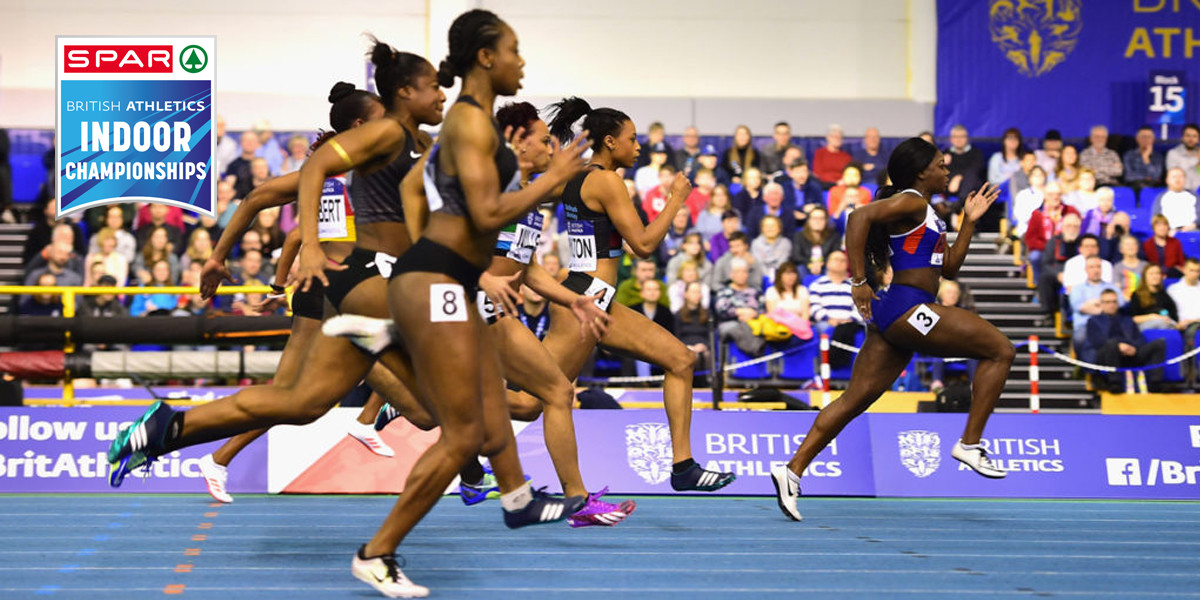
British Athletics says smaller Covid-19-compliant event qualification opportunities for the European Championships are now being explored.
Confirming the cancellation of the February 20-21 event at Glasgow’s Emirates Arena, a British Athletics statement read: “The decision was taken in light of the ongoing pandemic to ensure the safety of all those due to participate; athletes, coaches, technical officials, volunteers, event and venue staff as well as protecting the Glasgow community.

“At the present time, the process of testing all those attending the Championships from across the UK, seen as an essential measure, would not sufficiently mitigate the risks.
“British Athletics recognises our wider social responsibility to reduce Covid-19 transmission and to not overburden the NHS.
“Whilst elite sport has been granted the privilege of an exemption to enable training and competition to continue, the logistics of safely staging a national championships comprising approximately 500+ attendees based across the UK and overseas need to be balanced with the risks to those involved, the local community, and the current medical climate.”
On selection for the European Indoor Championships, the statement added: “British Athletics acknowledges that the cohort of athletes vying for GB & NI team selection will need competition to enable qualification.
“Therefore, alternative provision that enables smaller, COVID-19-compliant event qualification opportunities is being explored and will be confirmed to eligible athletes by British Athletics in due course.”
(01/22/2021) ⚡AMPMuller Indoor Grand Prix Birmingham
The Müller Indoor Grand Prix Birmingham is one of the leading indoor meetings in the world with world-class athletics as part of the World Indoor Tour Gold series. The event will be staged at its traditional home at Utilita Arena Birmingham setting the tone for what is set to be an incredible year of track & field. ...
more...2021 Christie Clinic Illinois Marathon will be cancelled for a second year in a row due to the pandemic
The Christie Clinic Illinois Marathon will be canceled for a second year in a row due to the pandemic, but stay tuned for a possible running event in September.
Committee members were notified Wednesday morning that the marathon event set to take place April 29-May 1 is off due to the current state of the pandemic.
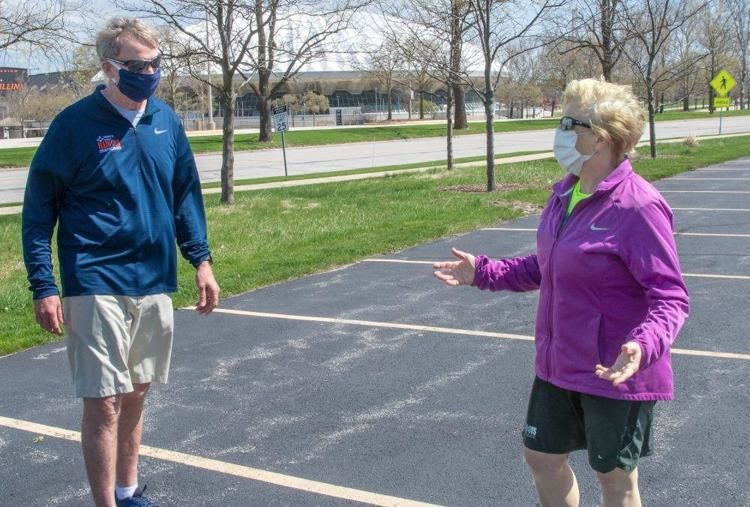
“Nobody will be surprised by that,” said Co-Director Jan Seeley.
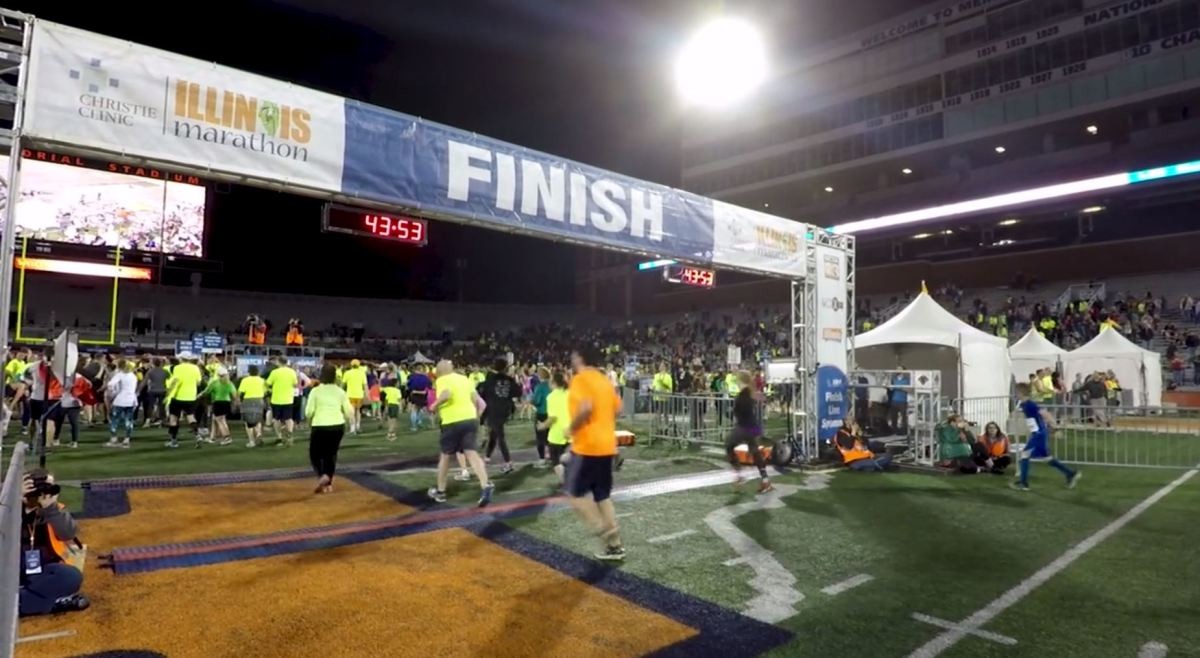
Up next is exploring what kind of event may be possible for Sept. 9-11, she said.
Seeley said the University of Illinois and Division of Intercollegiate Athletics calendars are clear for a new running event for those three days. The football team is scheduled to play at Virginia on Sept. 11, creating an opening at Memorial Stadium, which has served as the finish line for past marathons.
“Obviously, we couldn’t have any kind of running event in town if there is a football game going on,” she said.
Registration for the 2021 marathon had gotten underway in June, and by the time it was paused in September, 5,600 participants had already signed up, Seeley said.
What a possible September 2021 running event would look like isn’t clear at this point, Seeley said, but organizers are excited about the opportunity to expand race offerings.
“We are not saying that the Christie Clinic Illinois Marathon is going to happen Sept. 9, 10 and 11, but we have been given those dates to explore for doing some kind of event,” she said.
With COVID-19 vaccinations well underway and the potential for herd immunity in the community, Seeley said, “we would want to put on what is possible.”
The 2019 marathon event drew about 14,000 participants, Seeley said.
That was down from the former average 16,000 to 17,000 participants per marathon as the running boom has leveled off and more races have been added, “so all of the races have seen their numbers drop over the years,” Seeley said.
Illinois Marathon organizers plan to give another update for a 2021 event no later than April 1, she said.
What’s possible for a fall running event will continue to depend on the state of the pandemic and what the state permits for the 21-county Region 6, which includes Champaign, Douglas, Ford, Piatt and Vermilion counties.
The region has moved down from more restrictive Tier 3 COVID-19 mitigation restrictions to Tier 1 and could potentially move down another notch in restrictions, to Phase 4 reopening under the Restore Illinois plan, as soon as Friday.
Under Phase 4, 5K and 10K races would be permitted, but the 50-person gathering limit would apply along with required staggered start times and different locations for finish points.
The state and/or individual regions won’t be in full reopening mode until the final Phase 5.
(01/21/2021) ⚡AMPby Debra Pressey
Illinois Marathon Race Weekend
The Christie Clinic Illinois Marathon offers a beautiful, scenic tour of the University of Illinois campus, revitalized downtown streets, tree-lined residential neighborhoods, and an awesome paved park trail. Thousands of friendly, fun fans and volunteers from Champaign-Urbana line the course, exuding Midwest hospitality. You'll find first-class race shirts, medals, food, and fanfare. Enjoy a spectacular finish at the 50-yard-line of...
more...Irish Olympic marathon runner Jerry Kiernan passed away at the age of 67
Irish athletics and the wider sporting community has been deeply saddened by the death of Jerry Kiernan, the 1984 Olympian and two-time winner of the Dublin marathon, who also coached several Irish champions in more recent years.
Kiernan was aged 67 and had been unwell in recent months. A native of Listowel in Kerry, he lived most of his adult life in Dublin, where he died on Wednesday night.
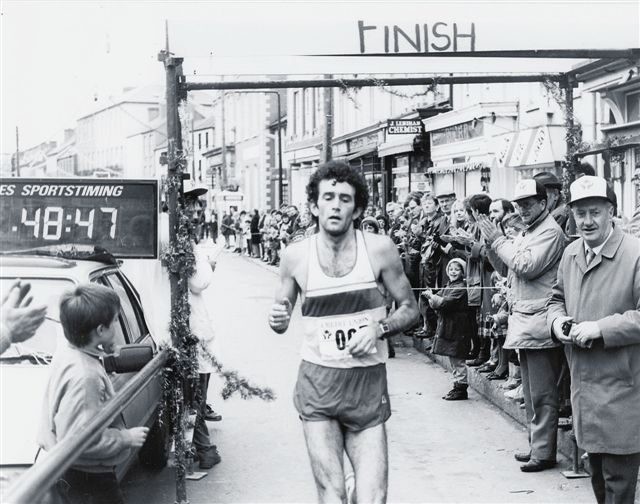
Among his many lasting achievements in athletics was winning the Dublin marathon, first in 1982, which the curly-haired Kiernan completed near solo in a cracking 2:13.45 and which for years after stood as the course record, and winning again 10 years later in 1992.
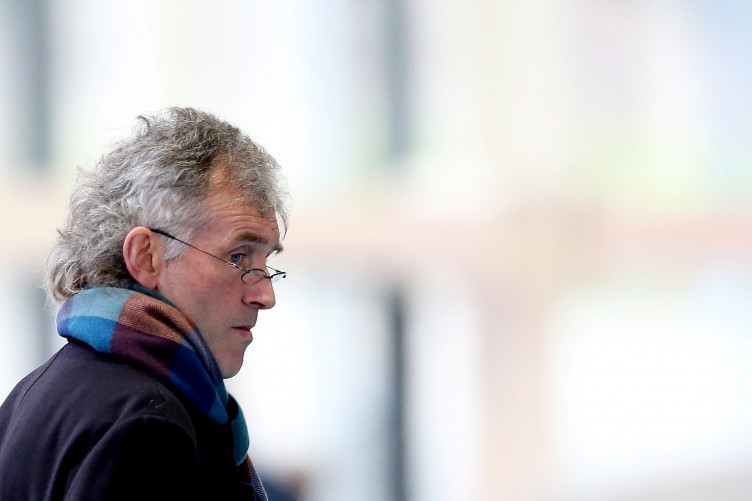
He also finished ninth in the 1984 Olympic marathon in Los Angeles, considered one of the best marathon fields ever assembled, the spotlight on that fine achievement naturally taken away by John Treacy’s silver medal-winning run. Kiernan ran his lifetime marathon best of 2:12.20 in early 1984.
A former Irish record holder over 3,000 metres on the track and 10 miles on the road, Kiernan also became the 10th Irish athlete to run a sub-four minute mile when he ran 3:59.12 in June of 1976.
A lifelong member of Clonliffe Harriers AC, and a retired national school teacher, in recent years he coached the likes of Joe Sweeney, Maria McCambridge, Ciara Mageean and John Travers to national titles on the track and in cross-country, staging regular training groups around the UCD campus. He was also a straight-talking panel member of RTÉ’s athletics television coverage.
In all, Kiernan represented Ireland 17 times between 1975 and 1993, including seven times in world cross-country championships, and won five Irish titles, from the 1,500m to the marathon, and also national inter-club and inter-county cross-country titles.
(01/21/2021) ⚡AMPby Ian O'Riordan
London Marathon is planning for 100,000 people to take part in its 2021 event, split between mass race runners and virtual participants
Virgin Money London Marathon hopes to host a record 50,000 runners on the traditional course and another 50,000 in a virtual event in October.
While last year’s event saw elite-only races take place in the UK capital as well as the inaugural virtual edition, organisers are hopeful that the action on October 3 can include a mass race featuring a record 50,000 participants on the traditional course from Blackheath to The Mall, an increase of more than 7000 on the previous finisher record.
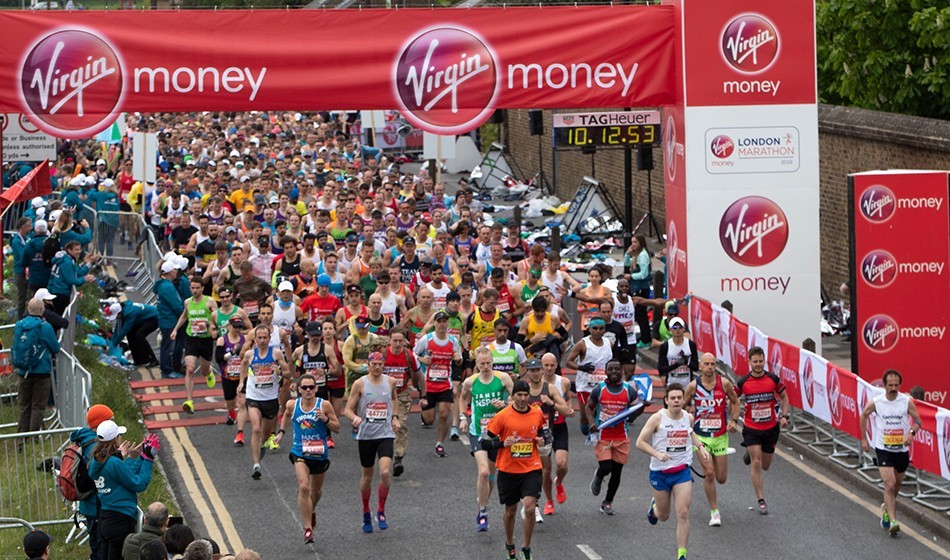
A further 50,000 places will also be available in the second Virtual Virgin Money London Marathon, which will see participants take on 26.2 miles over the course of their choice between 00:00:00 and 23:59:59 on race day.
A total of 37,966 participants completed the 2020 virtual event and it has been awarded a Guinness World Records title for ‘most users to run a remote marathon in 24 hours’.
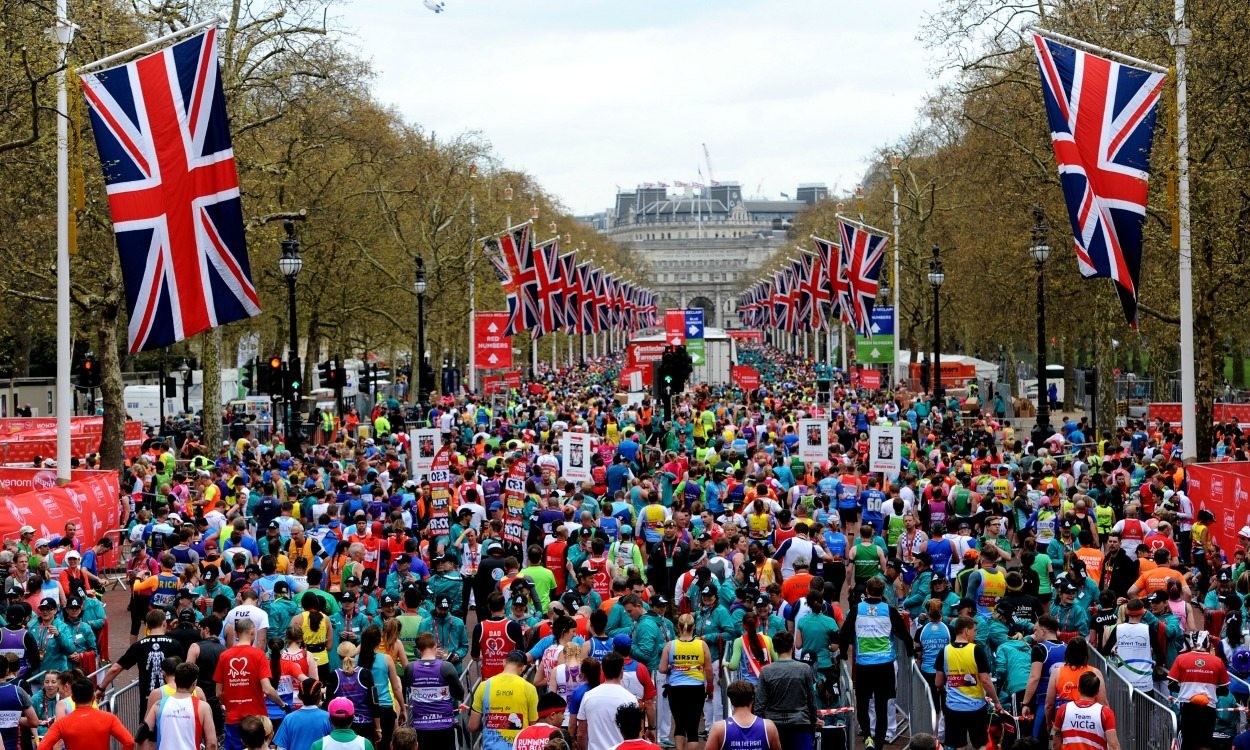
“With a national vaccination programme underway, we hope to see an unprecedented 100,000 people take part in this year’s Virgin Money London Marathon on Sunday 3 October,” said event director Hugh Brasher.
“The London Marathon is a wonderful example of sport as a force for good while raising millions for charity. It’s all about communities and people coming together and one of our founding pillars is ‘to have fun and provide some happiness and a sense of achievement in a troubled world’.
“The world record-breaking success of the virtual event in 2020 and the incredible stories from participants across the globe showed how the world’s greatest marathon brought light and hope in the darkness of the pandemic. We want to offer that again and we have also accelerated the plans we have been working on for some years to increase the number of finishers on the streets of London to 50,000.
“People can run wherever they are in the world, they can run for charity, they can run for their mental or physical health or run for the sheer enjoyment of it – whatever the reason, they will be part of a unique day in the history of the London Marathon on Sunday 3 October.”
Also returning to the streets of the capital on October 3 is the Virgin Money Giving Mini London Marathon alongside the Virtual Virgin Money Giving Mini London Marathon for primary schools nationwide. More than 110,000 schoolchildren took part in the first virtual event last year.
Ballot results for the 2021 London Marathon are set to be released on February 8. Unsuccessful applicants will then have an exclusive window to enter the virtual event.
General entries, costing from £28, will open on February 16 on a first-come, first served basis.
(01/21/2021) ⚡AMPby Athletics Weekly
Tokyo 2020 Olympic Games
Fifty-six years after having organized the Olympic Games, the Japanese capital will be hosting a Summer edition for the second time, originally scheduled from July 24 to August 9, 2020, the games were postponed due to coronavirus outbreak, the postponed Tokyo Olympics will be held from July 23 to August 8 in 2021, according to the International Olympic Committee decision. ...
more...Antrim Coast Half Marathon has been added to World Athletics' Road Race Label series
This year's Antrim Coast Half Marathon added to World Athletics' series of Road Race Label Events.
Won last year by Sir Mo Farah, which will take place on August 29, it is the first time an Irish race has been included in the series.
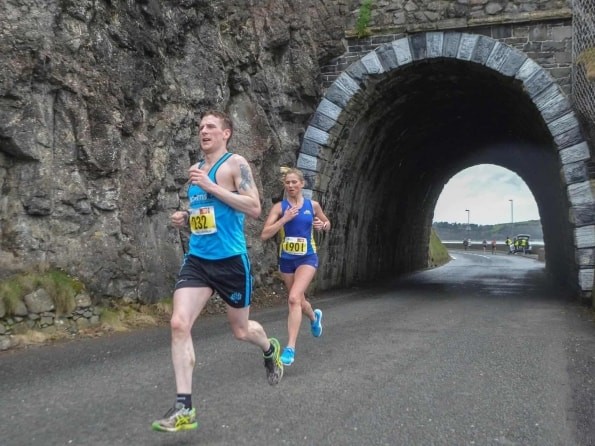
It joins the London Marathon and the Cardiff Half Marathon as the UK's only three races on the global schedule.
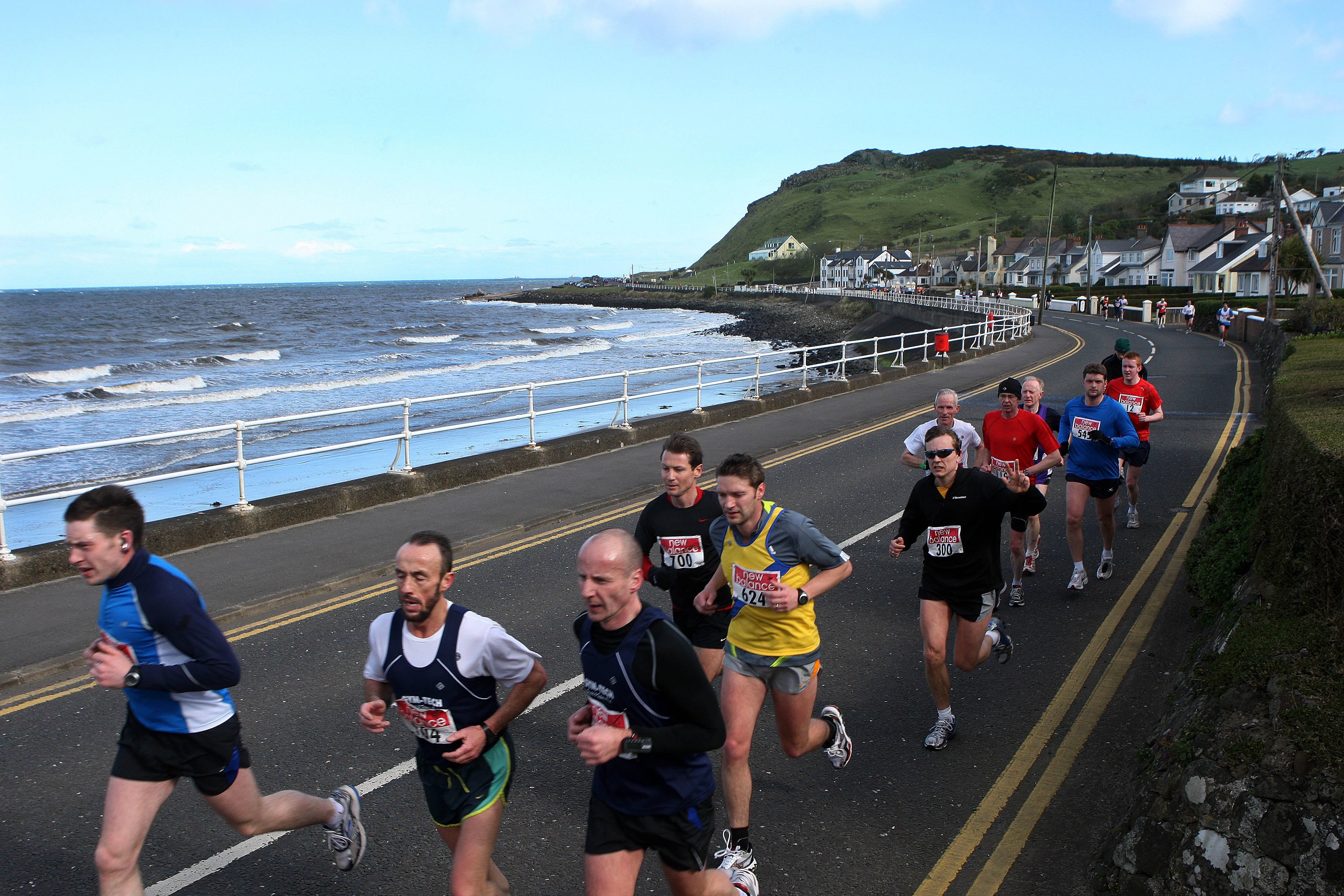
Four-time Olympic champion Farah won in one hour and 27 seconds last year, with Lily Partridge the women's winner.
Farah headed the entry over a scenic course in and around Larne in last year's inaugural event which had to be confined to elite athletes because of the Covid-19 pandemic, .
Race organiser 2000 Sydney Olympian James McIlroy said this year's race promises to be an "amazing" event.
"We will have the best runners in the world running on one of the most beautiful roads in the world, whilst also welcoming the masses back," said the former 800m star.
"We also should be in a position to welcome the American and African competitors confirmed for last year's race but unfortunately due to restrictions were not able to travel."
Other cities to have a race on the Road Race Label Events calendar include Dubai, Tokyo, Istanbul, Barcelona, Shanghai, Rio de Janeiro and Buenos Aires.
(01/21/2021) ⚡AMPby Athletics
MEA ANTRIM COAST HALF MARATHON
The MEA Antrim Coast Half Marathon 2022 has been approved by World Athletics as an Elite Event. The World Athletics certified course takes in some of the most stunning scenery in Europe, combined with some famous landmarks along the route. With it's flat and fast course, the race is one of the fastest half marathons in the world. Starting...
more...ACJ Peachtree Road Race Planned As Two Day, In-Person Event for 2021
What is usually the nation's largest 10-K with over 60,000 finishers, the AJC Peachtree Road Race in Atlanta is planned as a smaller, two-day event for July 3 and 4, Atlanta Track Club (ATC) officials announced today. Safety is the top priority, officials said, not the size of the race.
"This year, the AJC Peachtree Road Race may not be the world's largest 10-K," said ATC executive director Rich Kenah through a media release. "Our top priority is for the Peachtree to be the world's safest 10-K."
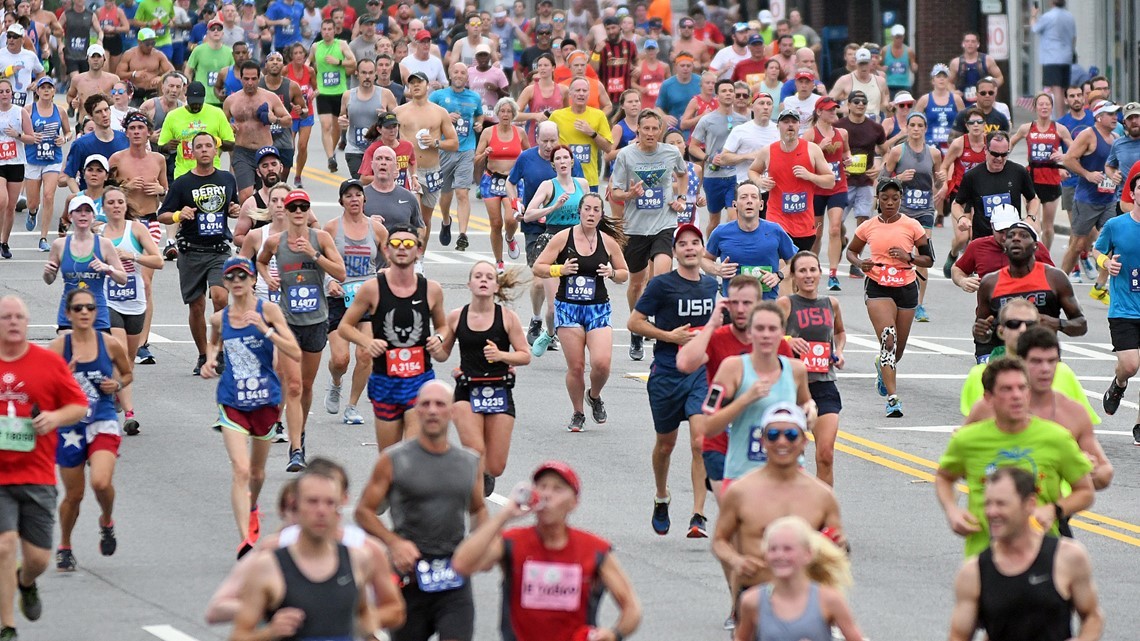
That will be no small feat. Large, mass-participation running events like the Peachtree have all but shut down since the pandemic hit the United States in mid-March last year. All of the nation's biggest and most famous road races --the Boston Marathon, Bank of America Chicago Marathon, Bolder Boulder 10-K, and TCS New York City Marathon, etc.-- were cancelled in 2020, or held as virtual events where participants ran on their own close to home.
In 2020 the Peachtree was first postponed from its traditional July 4, date to Thanksgiving Day, but was later cancelled as an in-person event and held virtually, instead.
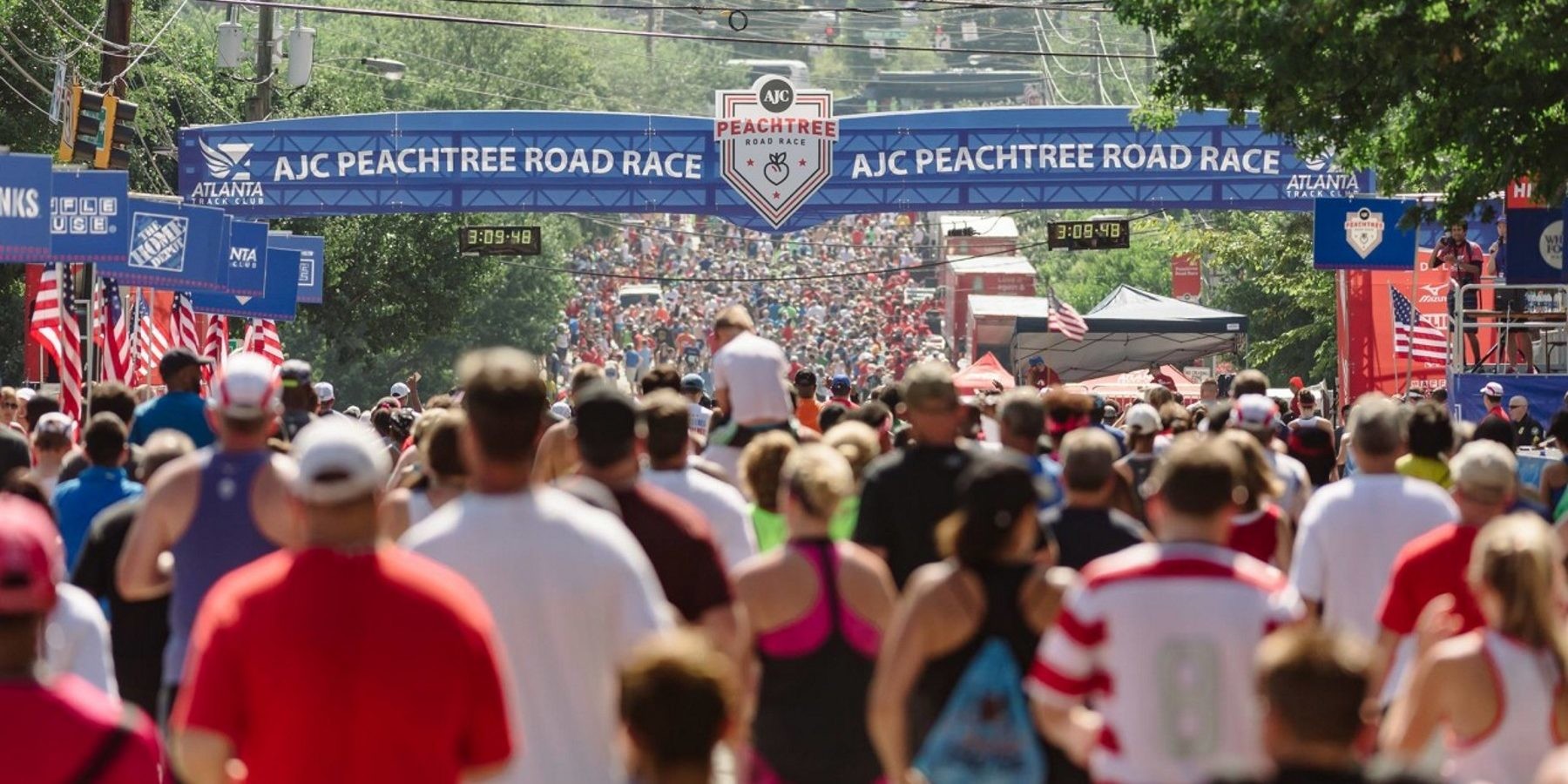
To make the 2021 race possible, ATC officials will employ a wave start system, limit the size of the field, extend the amount of time runners can be on the course (to increase physical spacing), mandate face coverings both before and after competing, and use self-serve hydration stations to limit person-to-person contact. Runners who don't feel comfortable attending the race will also have the option to participate virtually.
"As planning continues, we will remain in constant communication with our medical team and the city of Atlanta to ensure all in attendance feel confident that their 4th of July celebration was both memorable and responsible," Kenah added.
A COVID-19 task force has been set up by the ATC and is led by Dr. Jonathan Kim, co-medical director of the race. The task force will regularly meet to assess current conditions and adjust event mitigation efforts, accordingly.
Also, the race will have an elite field this year with prize money for USA runners, only. There will also be an elite wheelchair race, one of the Peachtree's great traditions, supported by the Shepherd Center. The race will be broadcast live on Atlanta's NBC affiliate, WXIA-TV, 11Alive.
Registration for the event opens March 15, and will remain open until at least May 1. Runners may indicate whether they prefer to run on the 3rd (Saturday) or the 4th (Sunday).
(01/20/2021) ⚡AMPAJC Peachtree Road Race
The AJC Peachtree Road Race, organized by the Atlanta Track Club, is the largest 10K in the world. In its 48th running, the AJC Peachtree Road Race has become a Fourth of July tradition for thousands of people throughout the metro Atlanta area and beyond. Come kick off your Fourth of July festivities with us! If you did not get...
more...Calum Neff ran faster than any other Canadian has over 50K, but Neff says he knows he can do better
Texas-based Canadian Calum Neff ran a 50K race in Houston over the weekend, posting a national record time of 2:51:27. He says he has had his eye on the Canadian record, which previously belonged to Andy Jones at 2:53:20 (a result that he ran at the same park in Houston where Neff ran on Sunday), for a couple of years.
After a failed record attempt in 2019, he had no trouble beating Jones’s time on Sunday, running to his first national record.
Neff´s previous 50K record attempt came at the 2019 50K world championships in Romania. “We unfortunately had a bit tougher of a course in Romania than I did in Houston,” Neff says. “There was some more elevation and it was very humid.” He fell well short of Jones’s record that day, although he managed to grab a 16th-place finish in a PB time of 2:57:58.
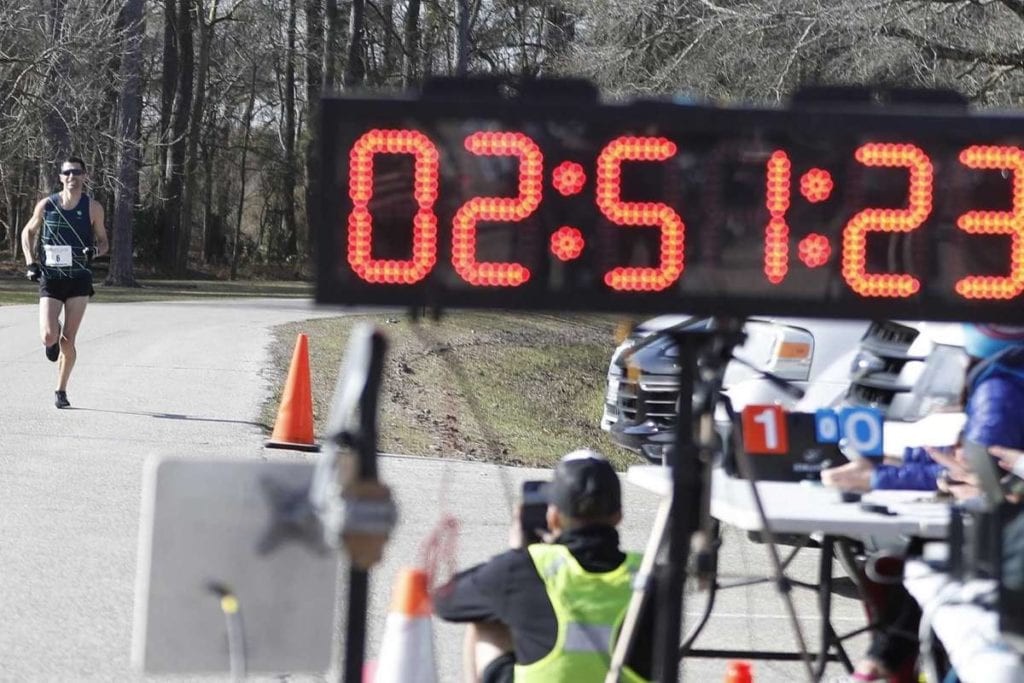
Even though Neff was four minutes off the record that day, he says he still believed it was within his reach.
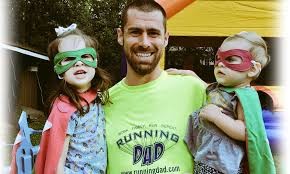
Neff says his confidence grew even more after pacing Sara Hall at The Marathon Project in December. He helped Hall to a 2:20:32 finish (the second-fastest marathon ever run by an American) before crossing the line himself in 2:20:37, a PB of his own. “Having seen my marathon time come down, it all just lined up,” Neff says.
“After I paced Sara, I knew that day I could’ve gone another five miles and been under record pace.”
while his felt as fit as ever, there was one glaring problem: Neff had nowhere to race. Refusing to let that stop him, he organized his own event, which was a new experience for him. “I’ve put on kids’ cross-country and track meets, but this was the first actual event I’ve race directed,” Neff says. Ensuring that the course was record eligible, he got it officially measured and certified by the USATF, and he was joined by about 20 other athletes (many of whom he coaches) on race day as well.
The course followed a roughly 5K figure-eight loop that featured about one metre of elevation gain. “It was pancake flat and fast,” Neff says — much more ideal than the course in Romania. Feeling fit and ready to run, he says he was hoping to go a bit faster on Sunday, but he’s far from disappointed in his time. “I had targeted that sub-2:50 range, but I was just a little bit off my sharpness that I needed,” he says. “Still, I was able to take six minutes off my own PR and have one of those days.”
After he crossed the line in record breaking, fashion, Neff stuck around to cheer on the other runners as they pushed for the tape. “As a coach to half of the athletes running, that was really special to have my finish happen then to turn around to watch my athletes finish.” Neff says several men he coaches ran under three hours for the first time, and multiple women ran times that qualified them for the American 50K team. “The U.S. mark is 3:33 for 50K. Two women went 3:19, one went 3:24 and another ran 3:25.”
He doesn’t have specific plans, and as much as he wants to race, he isn’t too eager to travel right now. With nothing set in stone, he says he does know that he wants to lower his record and break the 2:50 barrier in the 50K and run sub-2:20 in the marathon. “For now, I’ll just continue to focus on domestic races here in the U.S.,” he says. “Then play it by ear and see what opportunities come up in the future.”
(01/20/2021) ⚡AMPby Ben Snider-McGrath
New Zealand´s Nick Willis made history on Tuesday night by breaking 4:00 in the mile for the 19th year in a row
Nick Willis Sets World Record by Breaking 4:00 in the Mile for 19th Straight Year.
Willis, 37, ran 3:58.63 to finish second behind Mason Ferlic (3:58.05) at the Orange Winter Classic #1 meet in Clermont, Fla., breaking a tie with fellow New Zealand legend John Walker, who broke 4:00 for 18 years in a row from 1973-90.
Willis broke 4:00 for the first time on February 8, 2003, at the Meyo Invitational in South Bend, Ind., when he was 19 years old, and has broken 4:00 every year since, with a personal best of 3:49.83 at age 31 in 2014. He has also earned two Olympic 1500m medals during that span — a silver in 2008 in Beijing, and a bronze in 2016 in Rio.
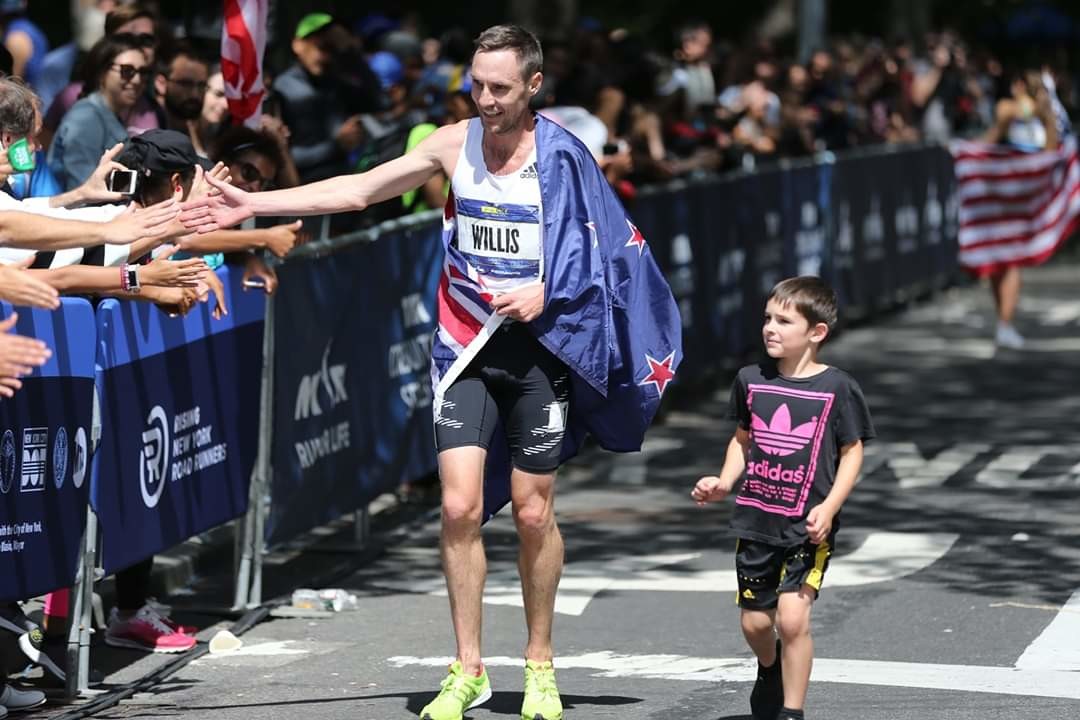
It’s also worth noting that Willis came close to starting his streak two years earlier, as he ran 4:01.32 as a 17-year-old in 2001 and 4:02.46 in 2002.
(01/20/2021) ⚡AMPby Jonathan Gault
Just 300 runners will be allowed for 2021 Access Bank Lagos City marathon
To stay within the COVID-19 protocol globally, organisers of the Access Bank Lagos City Marathon have decided to reduce the number of participants from its usual 100,000 runners to 300 for the 2021 edition, billed for February 13.
The event had over 50,000 runners at the first edition and 73,000 in the second. The number had since increased to 100,000 runners, but the Chief Executive Officer of Nilayo Sports Management Company, Bukola Olopade, told The Guardian yesterday that the sixth edition holding on February 13 will only accommodate 300 runners.
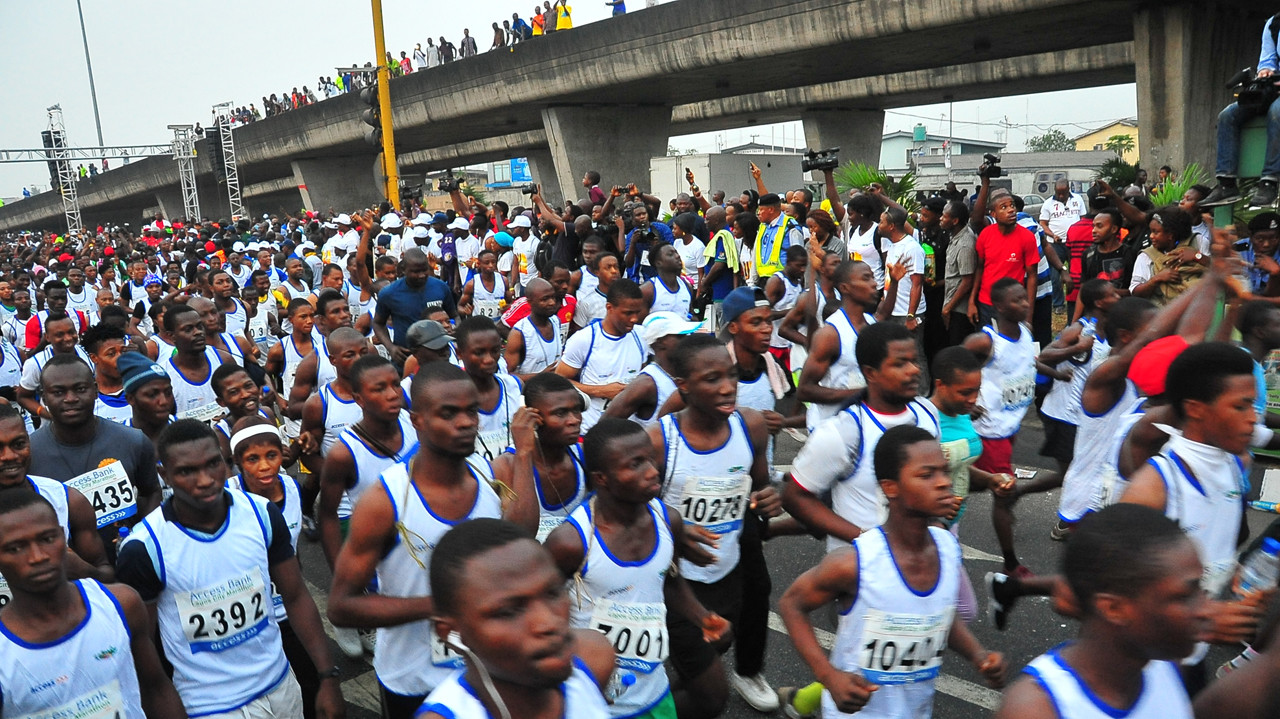
But there seems to be lot of pleasure from foreign athletes, who want to use the silver label Access Bank Lagos City marathon to cement their qualification for other top long distance races across the globe.
Olopade hinted yesterday that of the 300 tickets available for the 2021 edition, foreign runners from Kenya, Uganda, Ethiopia, United Kingdom and the United States of America would get 240 slots, while the remaining tickets will go to selected Nigerian professional runners and clubs.
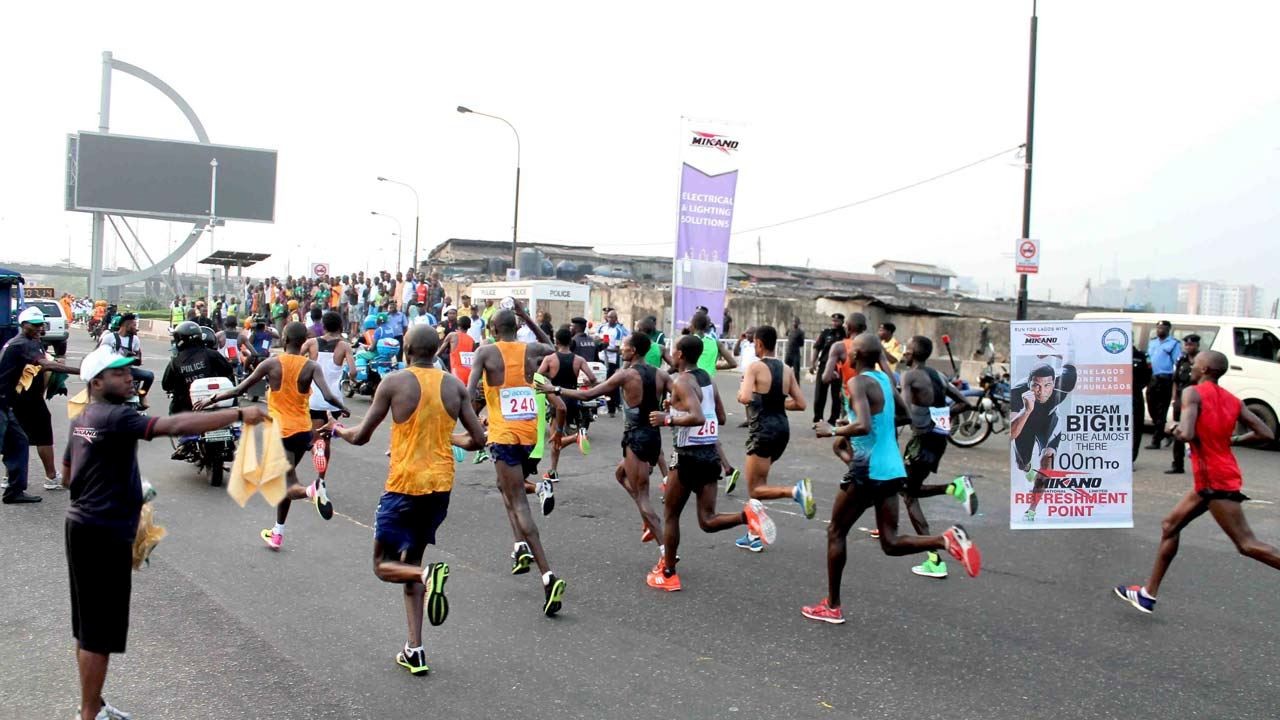
“A lot of foreign athletes are mounting pleasure on us for tickets to enable them take part in this year’s edition. They want to use Access Bank Lagos City marathon to qualify for some other major marathon races across the world, but we cannot go more than the 300 number,” Olopade said. “We have gotten the approval from both Lagos State Sports Commission and Ministry of Health, and we must do it in accordance with the COVID-19 Protocol globally.”
Olopade, a former sports commissioner in Ogun State disclosed that only five journalists would be allowed to cover this year’s edition, just as he hinted yesterday that the 2021 Lagos City Marathon would be exclusive for the 42km race. “The 10km race and the wheelchair race won’t be part of this year’s edition. The health of the athletes and everyone who will attend the event is very important to us. The absence of the 10km race won’t take away the glamour of the event.”
Olopade also disclosed yesterday that apart from reducing the number of runners, they have also cut down on the number of personalities to be invited for the ceremony. “We won’t have more then 60 guests at the finish point, and everyone must wear nose mask and stay some meters away from one another. He commended Lagos State Government, particularly the Executive Chairman of Lagos State Sports Commission, Sola Aiyepeku, for his support.
“Lagos State has become a sports tourist attraction because of the Access Bank Lagos City Marathon, so we are always happy to support and make sure that the Marathon happens and get better every year,” Olopade stated.
(01/20/2021) ⚡AMPby Gowon Akpodonor
Access Bank Lagos City Marathon
“The IAAF and AIMS have a special interest in the Access Bank Lagos City Marathon so if you see their top officials at the third edition, don’t be surprised. Lagos is one of the few marathons in the world that got an IAAF Label after just two editions. This is a rare feat. The event had over 50,000 runners at...
more...Joseph Gray, Lee Troop and many more will be inducted into the Colorado Running Half of Fame
Joseph Gray, Lee Troop, Deborah Conley, Lyndon Ellefson, Alan Lind, and Peter de la Cerda will be inducted into the Colorado Running Half of Fame. The Colorado Running Hall of Fame recognizes Coloradans for remarkable achievement and influence on the sport of distance running. Each year nominees are accepted, and in January the inductee class is selected and notified. In February the class is announced. The year 2020 forced the delay of honoring the Class of 2020 in May 2020. As a result, this year we will celebrate the six 2020 honorees plus three additional members will be selected for 2021.
Joseph Gray is an American world champion runner who competes mostly in trail, mountain and snowshoe races. He won the World Mountain Running Championships in 2016 and 2019. He is the first Black American to not only make the Team USA World Mountain Running Team, but also the first Black American to win the USA National Mountain Running Championships and the World Mountain Running Championships.
Joseph has been a 31-time Team USA national team member. He is the only Black American to be part of the U.S. Mountain Running Team at any level. He is an 18-Time USA National Champion and is a 5-time Xterra World Trail Running Champion.
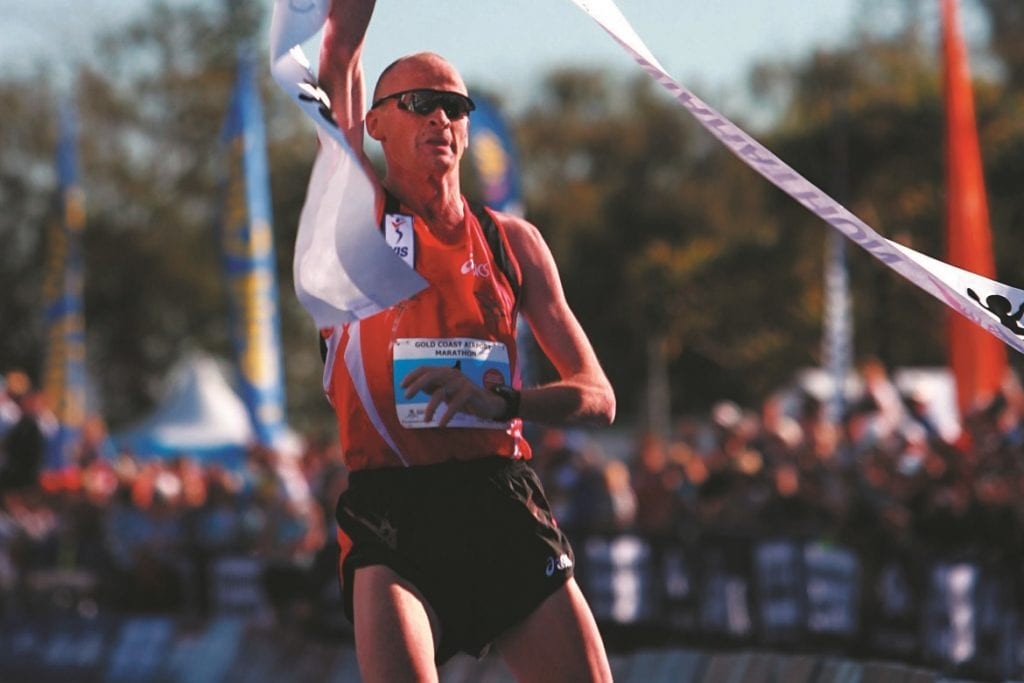
Lee Troop started out as a long-distance track runner and represented Australia in the 5000m at the 1998 Commonwealth Games and attended his first World Athletics Championships the following year. He was a 4X national 10,000m champion and broke the Australian record in the 5000m in 1999. He competed for Australia two times in the World Cross Country Championships and moved up to the marathon distance in 1999 with a 2:11 performance.

Deborah Conley is a Colorado native, and former University of Colorado runner. She was a member of the first women’s Cross Country team to win a conference title. As a master runner, she has been on multiple Cross Country teams that have medaled at USATF Cross Country National Championships and USATF National Club Cross Country Championships.
Peter de la Cerda lives with his wife and five children in Alamosa, CO, where he teaches 7th grade social studies and has coached at Alamosa High School (15 years XC and 7 years track). He is a 2X NCAA Individual National Champion (5000m Indoor ’93, 10,000m Outdoor ’93) and 11X All American.
Alan Lind’s 47 year career in running began at Poudre HS where he achieved a 13th place finish at the ‘76 Colorado State Cross Country meet and 6th in the mile at the State Track meet in the spring of ‘77. At Colorado State University he lettered all four years and ran his 1st marathon in 1978 and followed this with a 2:37 effort in 1980 and ran 2:26 in the next three years.
Lyndon Ellefson lived an adventurous life ending tragically in mid stride as he fell through a glacier crevasse near Cervinia, Italy, 1998. He was there as a member of the original, international Fila Skyrunners Team and was on a high-altitude training run in preparation for the Skyrunning Marathon.
(01/19/2021) ⚡AMPby Colorado Runner
Osaka Women's Marathon will be Run on 2.8 km Loop Inside Nagai Park
On Jan. 17 it was learned that the Jan. 31 Osaka International Women's Marathon will be run on a multi-lap loop course inside Nagai Park. Some of the athletes scheduled to run were notified last week of the likelihood of the change from Osaka's traditional road course, a change made as a result of the continued spread of the coronavirus.
It is the first time the race will be run on a circuit course in the years since its first running in 1982.
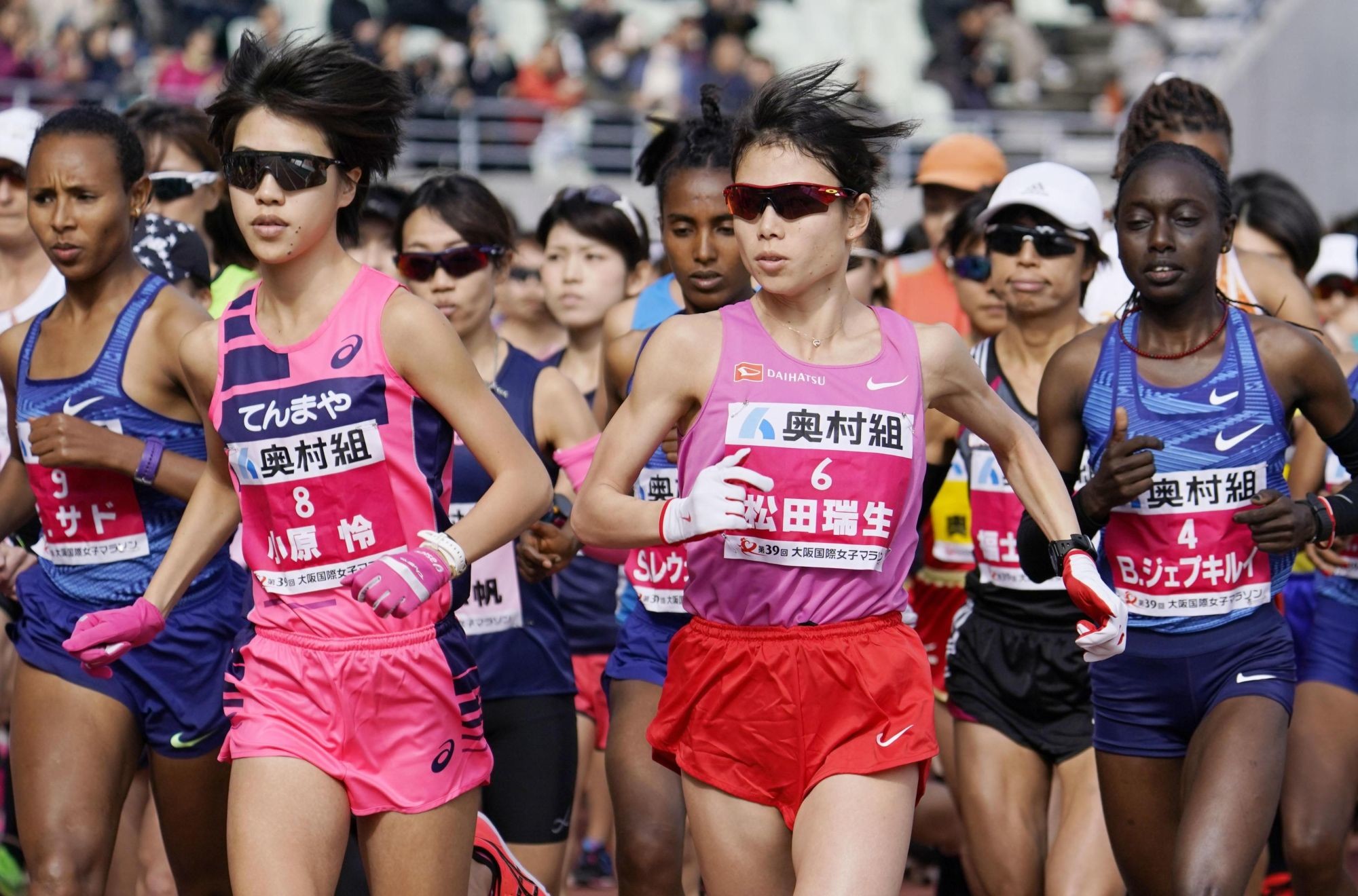
Tokyo Olympics women's marathon team members Mao Ichiyama (23, Wacoal) and Honami Maeda (24, Tenmaya) had planned to try to break the 2:19:12 national record in Osaka, but the impact of the change on times run there remains unclear at this point.
Osaka organizers have recruited male pacers, a first for a domestic women's marathon, to help chase the record, but with the government's declaration of a state of emergency last week they had no choice but to make the last-minute course change.

Most road races over the last year have been canceled or postponed. In the midst of those circumstances it was all but impossible for Osaka organizers to go ahead with their race as usual, and the field was cut back to just 99 athletes, about a fifth the usual number.
Despite calls for the public to stay home and watch the race on TV, it was inevitable that some fans would turn up along the course, and the logistics of the race's usual format meant the need for a large number of operations personnel for duties like traffic control and drink stations. Many of those tend to be elderly people.
The change to a circuit course helped to significantly reduce the number of people needed, mitigating the risk of spreading the virus.
Over the last few months a number of other races have been held inside parks instead of on public roads. October's Hakone Ekiden Yosenkai half marathon was held on an officially-certified 2.6 km circuit course around the runway at Tokyo's Tachikawa SDF Airbase, with 46 university teams taking part. November's East Japan Corporate Men's Ekiden likewise took place inside a park in Kumagaya, Saitama, with 24 teams covering a total of 76.4 km on a 4.2 km loop.
Amateur races have been held using loop courses along riverbanks. Overseas, October's London Marathon was held on a 2.15 km loop.
Osaka's traditional course was certified by both the JAAF and World Athletics, but it remains to be seen what the status of the new course will be. Consisting of 15 laps of a flat 2.8 km loop followed by a track finish inside Yanmar Stadium Nagai, the possibility of running a fast time looks considerable, but first the new course must be officially certified. With just half a year left until the Tokyo Olympics this will all but definitely by the last pre-Olympic marathon for both Ichiyama and Maeda, but it's hard to see this as a good simulation of racing in Sapporo.
Following the forced relocation of the Olympic marathon from Tokyo to Sapporo and the postponement of the Olympics, Osaka's course change is the latest hurdle for both women to clear in their quest to compete with the best in the world.
(01/19/2021) ⚡AMPby Brett Larner
Osaka International Womens Marathon
The Osaka International Ladies Marathon is an annual marathon road race for women over the classic distance of 42.195 kilometres which is held on the 4th or 5th Sunday of January in the city of Osaka, Japan, and hosted by Japan Association of Athletics Federations, Kansai Telecasting Corporation, the Sankei Shimbun, Sankei Sports, Radio Osaka and Osaka City. The first...
more...Marathoner Aliphine Tuliamuk, gives birth
Aliphine Tuliamuk, who won the U.S. Olympic Marathon Trials last February, gave birth to a girl, her first child, she announced Monday morning.
"Our daughter Zoe Cherotich Gannon arrived on 1/13/2021 and she is absolutely perfect. Her dad and I are just so overwhelmed with joy love and gratitude, and we can't stop staring at her," she wrote on Twitter.
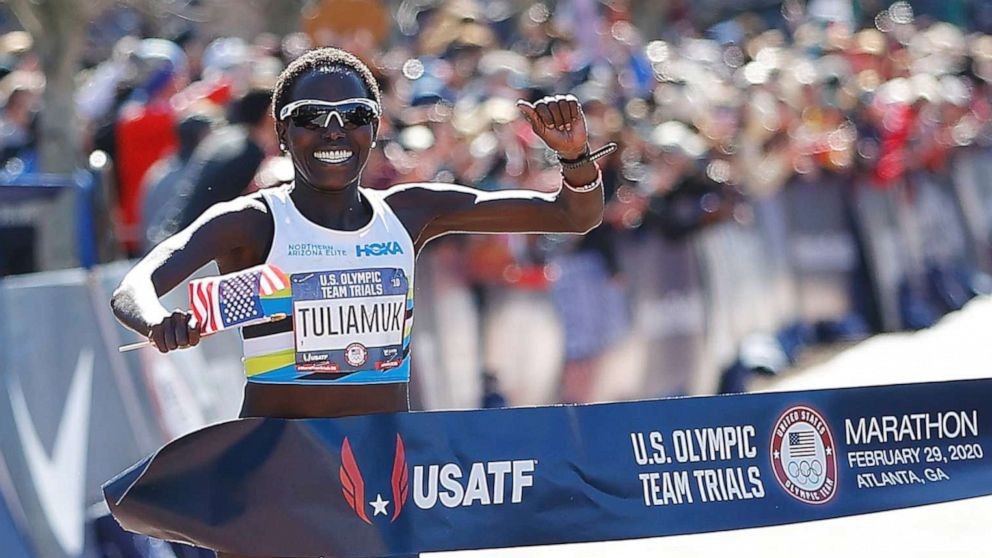
She made the announcement on Monday, Martin Luther King Jr. Day, and noted on Instagram that her daughter was born just two days before the civil rights icon's birthday -- "so close!" In his memory, she wrote, "may we all be proactive and do the right thing."
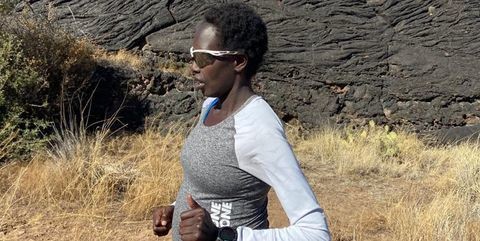
The marathoner announced she was pregnant in early December, posting on Instagram, "[Partner] Tim [Gannon] and I always knew that we wanted to have a family, the goal was post 2020 Olympics, well as it turned out this year had other plans, by mid April we were convinced that there will be no more races this season, and the darkness ahead was too much, we created our own light at the end of the tunnel!"
Gannon and Tuliamuk, 31, got engaged earlier this year.
"Her journey to this world was relatively long but 'easy,'" Tuliamuk expanded on Instagram about her daughter's birth, adding with some emojis, "I was up and walking around a few hours after she arrived, like give me a race right now ...kidding."
Tuliamuk, who was born in Kenya and became an American citizen in 2016, according to NBC Sports, is still planning to compete at the Tokyo Olympics, should they be held this summer.
Her running accomplishments includes national road titles over 25k, 20k and 5k, according to New York Road Runners, and she finished 12th for women at the 2019 New York City Marathon and second at the 2015 Pittsburgh Marathon.
"It's not like in the past where women were told, well, you can just race until you're done racing, and then you can start a family," she told NBC Sports in December. "You can do both of them."
(01/19/2021) ⚡AMP
by Alexandra Svokos
The Royal Victoria Marathon name is back
The original Royal Victoria Marathon logo featured a crowned king running in robes. If it were to be revived, it might fittingly feature a picture of Michael J. Fox superimposed because the event is going back to the future.
It will again be titled the Royal Victoria Marathon, its name of 31 years, before it became the GoodLife Fitness Victoria Marathon in 2011. Losing its title sponsor does not threaten the event, say organizers.
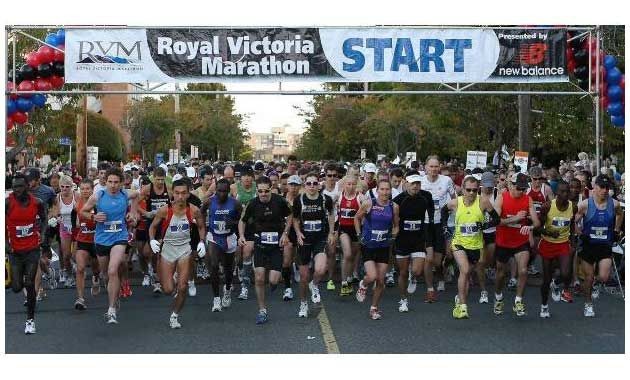
“We have stability and are well managed,” said race director and general manager Cathy Noel. “Participants won’t notice an impact.”
The split was amicable.
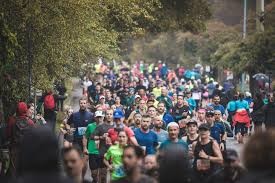
“It has been an honour to be title sponsor of the Victoria Marathon for the last decade,” said David Patchell-Evans, GoodLife Fitness founder and CEO, in a statement.
“While GoodLife will not retain title sponsorship this year, our affinity and belief in this event, the organizers, runners and the community of volunteers who make it possible, is unwavering. The Royal Victoria Marathon will always hold a special place for myself and the entire GoodLife family and we look forward to being part of the event in the future.”
Noel added: “We are extremely grateful for [GoodLife Fitness’] support over the years.”
The biggest question facing the Victoria Marathon Society, following the 2020 cancellation due to the pandemic, is not whether the race will go ahead in 2021 but in what manner on Oct. 10. With all Canadians who want a vaccination likely to have one by the fall, live sports is projected to return by late summer and fall.
“[But] it’s not like flipping a switch,” said Noel.
These events take months of planning and a decision will be made in the “early spring” whether to go live or virtual, or some combination thereof, for the 41st Royal Victoria Marathon.
“The question will come down to what can we do at that point of the year?” said Noel.
“The question will come down to what can we do at that point of the year?” said Noel.
Nine months out, that question simply can’t be answered at this time. It’s part of the over-arching split sport faces this year due to the vaccine rollout timeline. Winter and spring events and leagues are in trouble but summer and fall events and leagues stand a far better chance of taking place. Case-in-point is the other big Victoria annual running festival that bookends the season — the Times Colonist 10K — which will have to go virtual this year because it is a spring event in April.
“What we do know is that people want to get out there and be active,” said Noel. “And we will keep them motivated throughout the year.”
Noel said a monthly Zoom speakers’ series will begin Jan. 25 featuring prominent individuals in the running world.
It is a victory, say organizers, that a race can be contemplated at all in 2021.
(01/19/2021) ⚡AMPby Cleve Dheensaw
Royal Victoria Marathon
We are one of Canada's premier running event, offering athletes an unmatchable running experience on the pristine West Coast. Our world-class, record-breaking course is designed by runners, for runners. As the only Certified Boston Qualifier on Vancouver Island, come join us to compete, to conquer and to move from warm-up to reward. ...
more...Two runners from Boulder Colorado dominated the 32nd Naples Daily Néws Half Marathon
A returning champ and a first-time participant, both from the same town, took home the titles at the 32nd Naples Daily News Half Marathon on Sunday morning.
And both did it with ease despite not being in tip-top shape.
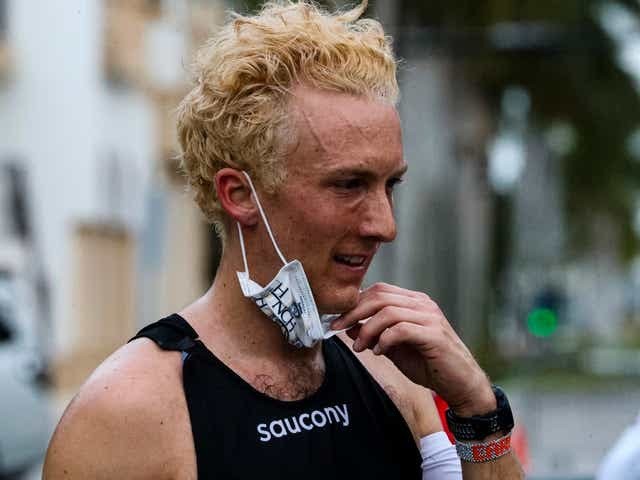
Parker Stinson and Lindsay Flanagan, both of Boulder, Colorado, won the men’s and women’s titles, respectively, in the 13.1-mile race through downtown Naples. Stinson, 28, crossed the finish line more than a minute before the second-place runner. Flanagan, 29, was nearly eight minutes faster than the women’s runner-up.
Stinson won his second NDN Half Marathon title in his return to Naples, winning Sunday in 1 hour, 3 minutes and 33.03 seconds. His time was 1.36 seconds faster than when he won in 2018.
Parker Stinson of Boulder, CO, won the Naples Daily News Half Marathon. Runners had a great morning to run in the Naples Daily News Half Marathon. Masks and social distancing rules were used to make the race a success.
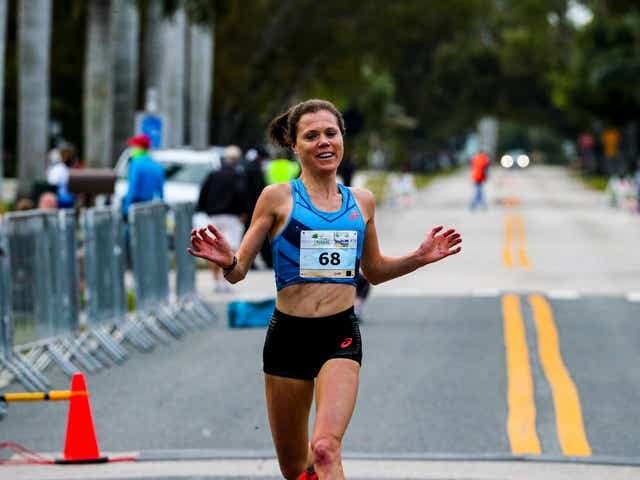
Parker Stinson of Boulder, CO, won the Naples Daily News Half Marathon. Runners had a great morning to run in the Naples Daily News Half Marathon. Masks and social distancing rules were used to make the race a success.
“I just wanted to win,” Stinson said. “When I was out there all alone I thought, ‘I just really want to break 1:04.00.’ … There’s nothing like breaking the tape and finishing first. That’s why I came here, I wanted to win again.”
Sunday’s race had a limited field and new protocols due to the coronavirus pandemic. Organizers capped participation at 1,000 runners (it's usually between 1,500 and 2,000). The elite runners started together at 6:55 a.m. The rest of the field was started in five waves, one every five minutes from 7 to 7:20 a.m., to limit the amount of people in one space.
Victory was especially sweet for Stinson because he was competing in his first race in 15 months. The American record holder in the 25-kilometers, Stinson had knee surgery in July after dealing with pain in the joint for months.
Despite soreness in the knee Sunday morning – which happens every morning, he said – Stinson was able to start fast. He raced ahead of the pack of 30 elite runners at the start of the race and led the entire way.
“The knee felt good,” Stinson said. “I was really happy with how fast I was able to start. It was perfect weather today, couldn’t have been any better. Today was perfect, everything I could have asked for.”
Flanagan, the women’s champion, said she getting back into shape for long distances after spending the cold Colorado winter working on strength. She also didn’t decided to run the Naples half marathon until a few weeks ago.
Lindsay Flanagan of Boulder, CO, was the first woman to cross the finish line. Runners had a great morning to run in the Naples Daily News Half Marathon. Masks and social distancing rules were used to make the race a success.
Lindsay Flanagan of Boulder, CO, was the first woman to cross the finish line. Runners had a great morning to run in the Naples Daily News Half Marathon. Masks and social distancing rules were used to make the race a success.
In her first time in Naples, the former NCAA All-American runner for Washington ran the third-fastest women’s race in the event’s 32 years. Flanagan’s time was 26.3 seconds off the NDN Half Marathon record (1:09:57.6) set in 2011 by Belainesh Gebre.
“For where I am, coming off the winter, this was a great fitness test to see where I’m at,” Flanagan said. “It feels great to kick off the 2021 season with a win.”
Steven Martinez of August, Georgia, finished second overall in 1:04:35.91, followed by Nick French of Nashville, Tennessee, in 1:05:21.56.
Naples High School graduate Kurt Roeser finished sixth with a time of 1:06:19.17.
Roeser, 33, has been training and working as a physical therapist in Boulder since he finished running at the University of Florida. The 2005 Naples grad finished Sunday’s race three minutes faster than last year when he took seventh at the same event.
Runners had a great morning to run in the Naples Daily News Half Marathon. Masks and social distancing rules were used to make the race a success. Runners could take off their mask after the cross the start line.
Runners had a great morning to run in the Naples Daily News Half Marathon. Masks and social distancing rules were used to make the race a success. Runners could take off their mask after the cross the start line.
“This is the best I’ve ever run here by about a minute,” Roeser said. “I was lucky to run a race about six weeks ago and have a big (personal record) there (1:04.40). … I’m in the best shape, the best fitness I’ve ever been in in my life.”
Naples resident Aubrey Aldy was the top local finisher, taking 12th over all in 1:13:20.35. Aldy won the men’s masters division (40 and older).
Alexandra Gardino was the top finisher among local women. She was ninth in the women’s race with a time of 1:31:15.08.
(01/18/2021) ⚡AMPNaples Half Marathon
Why run Naples? It's a flat, fast and shady loop. Spirits are always really high, in part from the carbed-up pasta feeds and also because of the really colorful Coolmax shirts! The finish line is where the party begins, with unique quality medals to all finishers who finish within the race time limit, door prizes including weekends at beach front...
more...World Steeplechase Champion, Emma Coburn Joins COROS Pro Athlete Team
COROS Wearables Inc., makers of innovative performance GPS watches is introducing World Steeplechase Champion, Emma Coburn, to its Pro Athlete Team. This partnership solidifies the brand’s commitment to all runners, irrespective of distance or surface. COROS is dedicated to creating a comprehensive training platform in order to support our athlete’s wildest dreams – and there is arguably no greater competitive aspiration then the pursuit for Olympic gold.
On her signing with COROS, Colorado based Coburn said, “I am excited to partner with COROS and have the best watch in the game. The data I get from my watch during and after training is crucial for my performance. Whether I am using the watch for time on an easy run or doing a hard workout requiring accurate GPS and heart rate data, I know I can count on COROS,” added Coburn.
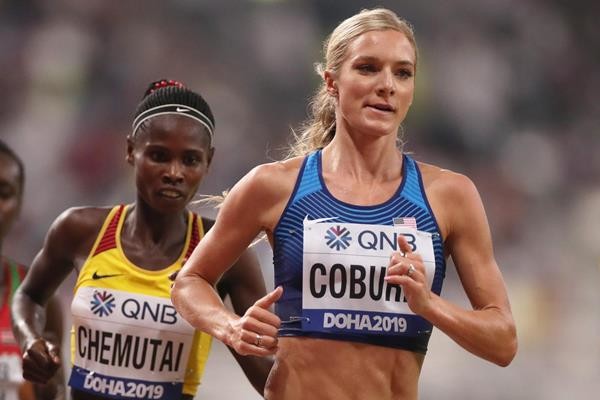
I love finishing my run and checking out the synced data on my phone. One of the best parts about the watch is its battery life as I can run a 95-mile week without ever having to charge it! I’m looking forward to many, many miles in my COROS.”
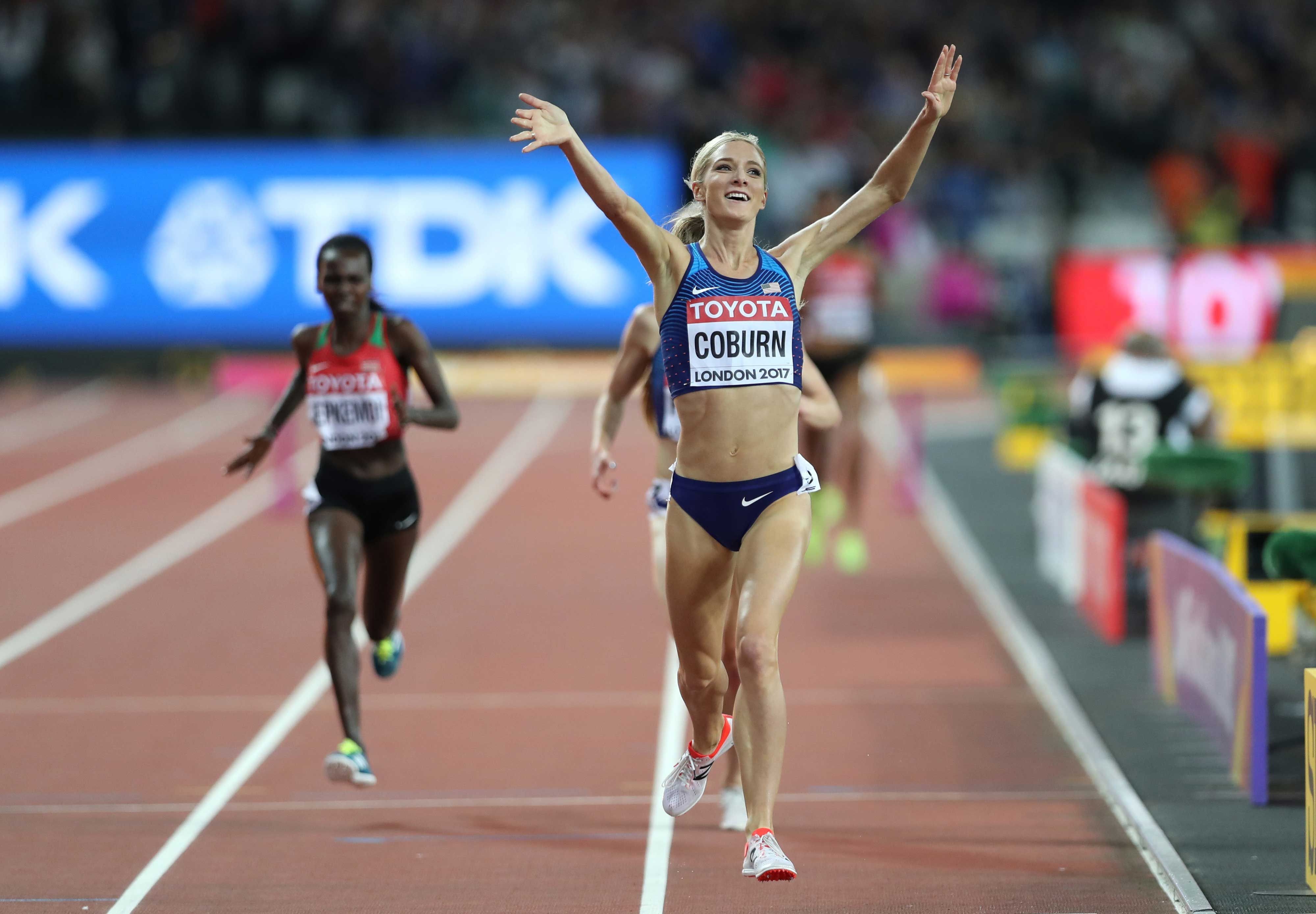
“Emma is a world class athlete who has a multitude of options when it comes to GPS wearables. We take great pride in our product and are proud she has chosen to use COROS as she prepares for the Olympic games,” said COROS CEO Lewis Wu. Wu continued, “We are so excited to welcome Emma to the COROS family. Her feedback is paramount to ensure our watches are meeting the needs of the running community.
Her extensive use and constructive critique surrounding key features such as the COROS track run mode and training features will ultimately improve ease of use and functionality for runners around the world.”
COROS has a range of watches to meet all of Coburn’s needs. Whether going for a long run at 9,000 ft, or racing at sea level, COROS has a spectrum of GPS watches to support every aspect of her training. Emma’s primary watch will be the COROS PACE 2, the lightest GPS watch on the market.
(01/18/2021) ⚡AMPby Colorado Runner
With 2021 Millrose Games cancelled, The Armory track will become a COVID-19 vaccination center
Officials from The Armory Track have announced that the facility will be used as a COVID-19 vaccination center for the remainder of the indoor season.
Located in New York City, the Armory is the site of the storied Millrose Games and so many other meets, and it is one of the most well-known tracks in North America.
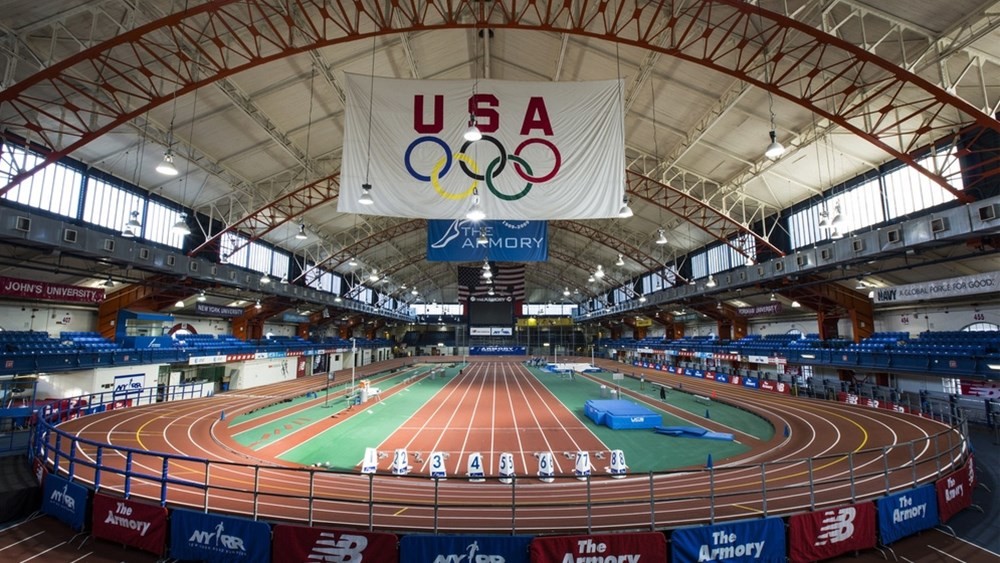
While officials acknowledge that this news may be disappointing for athletes, they note that the health and safety of New Yorkers is far more important than the rest of the indoor track season, and they are excited to help with the city’s vaccine rollout.
No more meets
The armony track hosted more than 20 meets throughout the first half of the indoor track season, but any events scheduled beyond mid-January have been cancelled. The Millrose Games were originally scheduled to run on February 13, but organizers announced in December that the event had been cancelled due to COVID-19.
"Canceling the iconic Millrose Games was a very difficult decision,” meet director Ray Flynn said in a statement, “but with all the health concerns surrounding an event of this complexity, rather than risking the athletes, officials, meet personnel, media and others, we have decided to wait until February 12, 2022, for the next edition of the Millrose Games.” The 2021 event would have been the 114th edition of the Games, but that will have to wait until next year.
An Armony tradition
As noted on the Armony website, the facility has played an important role in New York City for more than a century, and not just because of its track. It was originally built in 1904 for the New York State Militia, who worked to protect the state’s citizens. Decades later in the 1980s, it became a homeless shelter, providing close to 2,000 beds to New York City‘s homeless population for 10 years.
Now it is of course a track, and it hosts more than 100 meets each year, welcoming hundreds of thousands of athletes. For the rest of the 2021 season, though, it will be used for its original purpose, protecting New Yorkers and helping them through these tough times before hopefully hosting more meets next winter.
(01/18/2021) ⚡AMPby Ben Snider-McGrath
NYRR Millrose Games
The NYRR Millrose Games,which began in 1908 as a small event sponsored by a local track club, has grown to become the most prestigious indoor track and field event in the United States. The NYRR Millrose Games meet is held in Manhattan’s Washington Heights at the New Balance Track & Field Center at the Armony, which boasts a state-of-the-art six-lane,...
more...2021 Prague half Marathon has been postponed until September
The racing season in the Czech Republic usually starts with the Sportisimo Prague Half Marathon in March but this year, because of lingering safety issues, it is postponed until September 5, 2021.
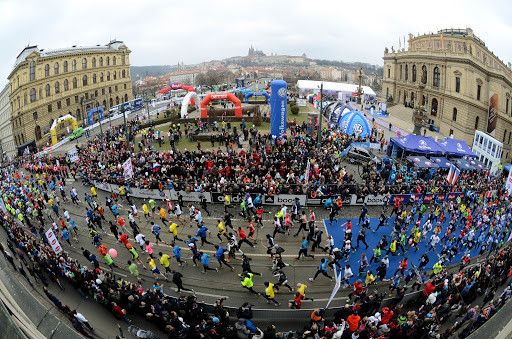
That weekend will be made into a Running Festival called “The Running Games”.
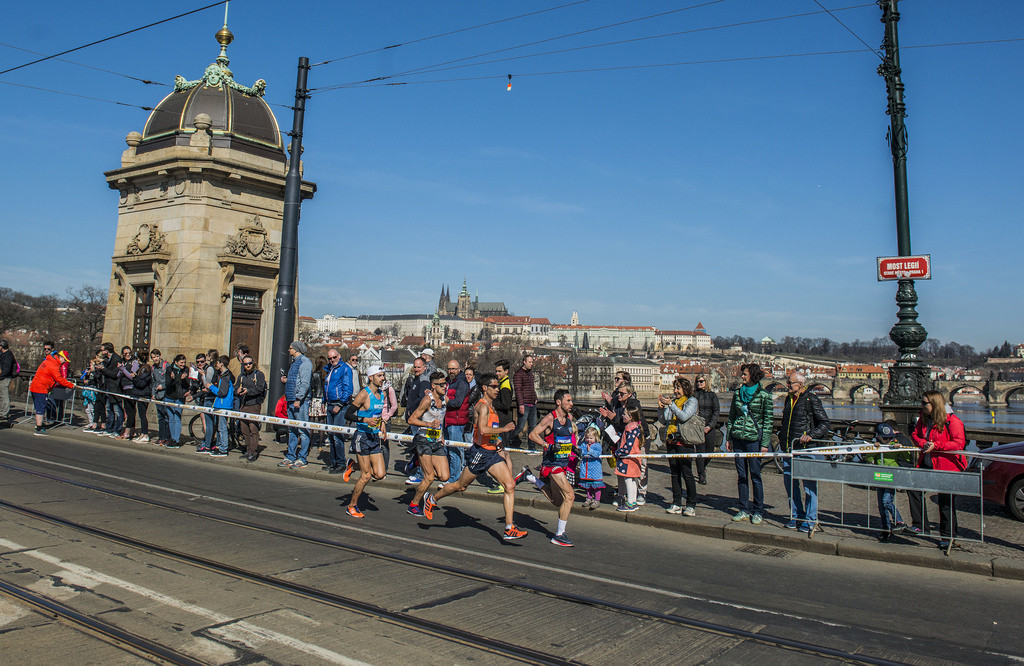
In addition to the Half Marathon there will be 5 km and 10 km races. Further information to follow.
The Volkswagen Prague Marathon and other spring races,will be assigned a date on the full 2021 running calendar soon, which will be available from the middle of February.
(01/18/2021) ⚡AMPPrague Half Marathon
Start the RunCzech season with one of the biggest running events in the Central Europe! Every year the Sportisimo Prague Half Marathon excites spectators with performances of elite athletes breaking records. Enjoy a course with incomparable scenery in the heart of historic Prague that follows along the Vltava river and crisscrosses five beautiful bridges. Take in majestic views of the...
more...




